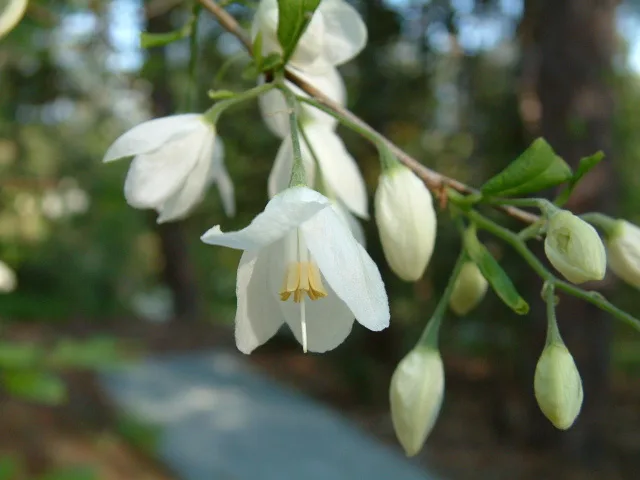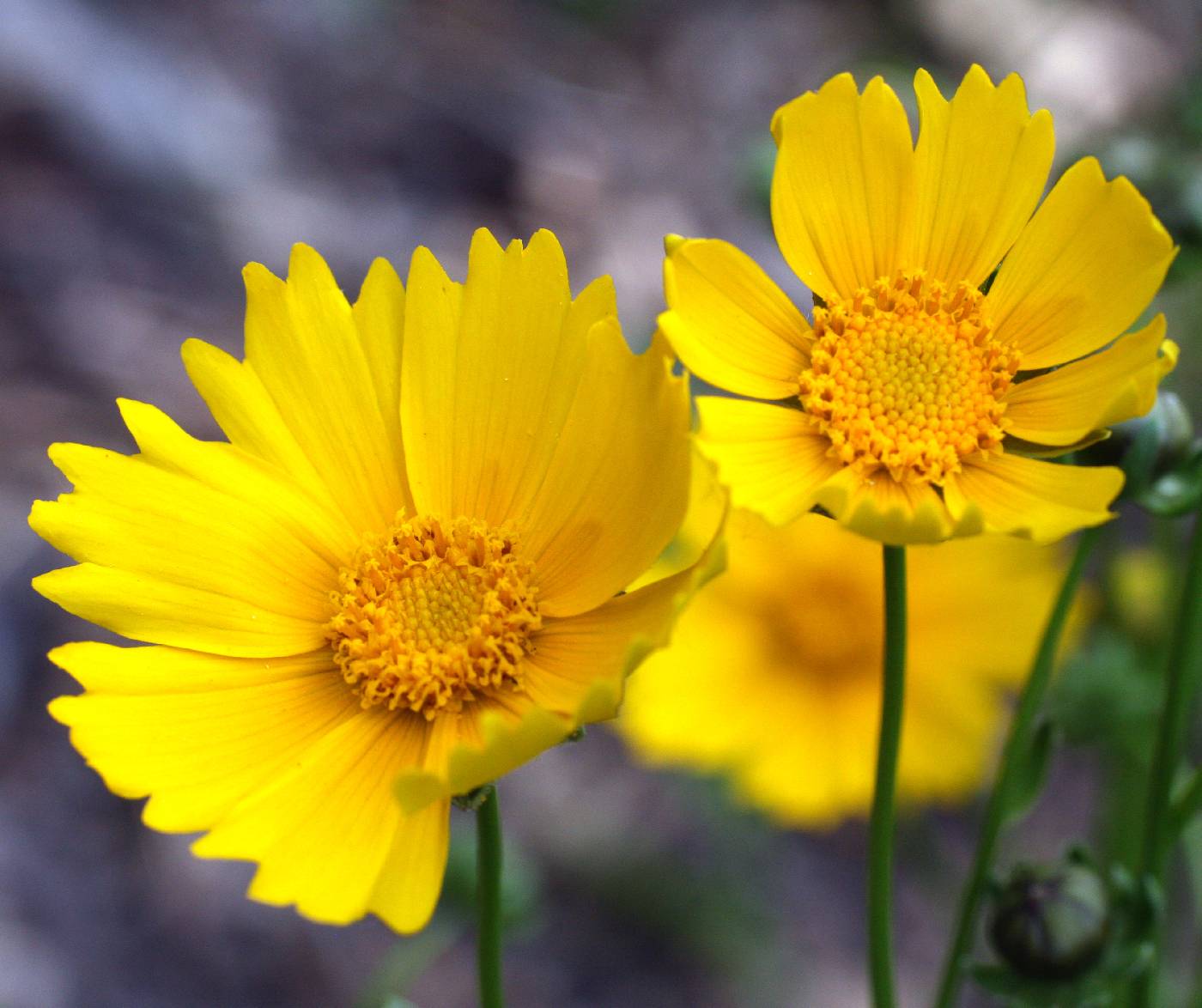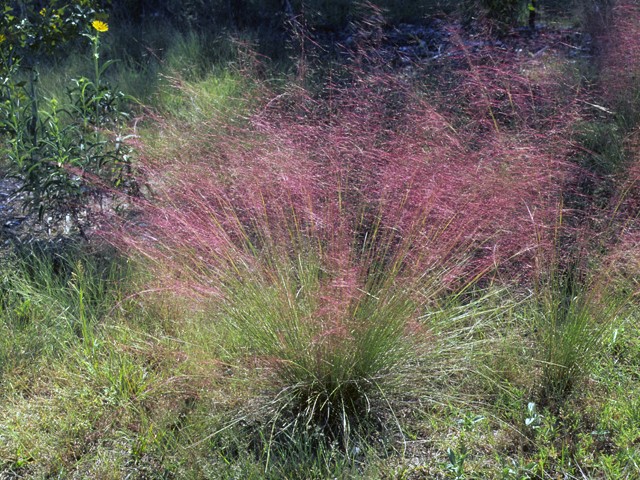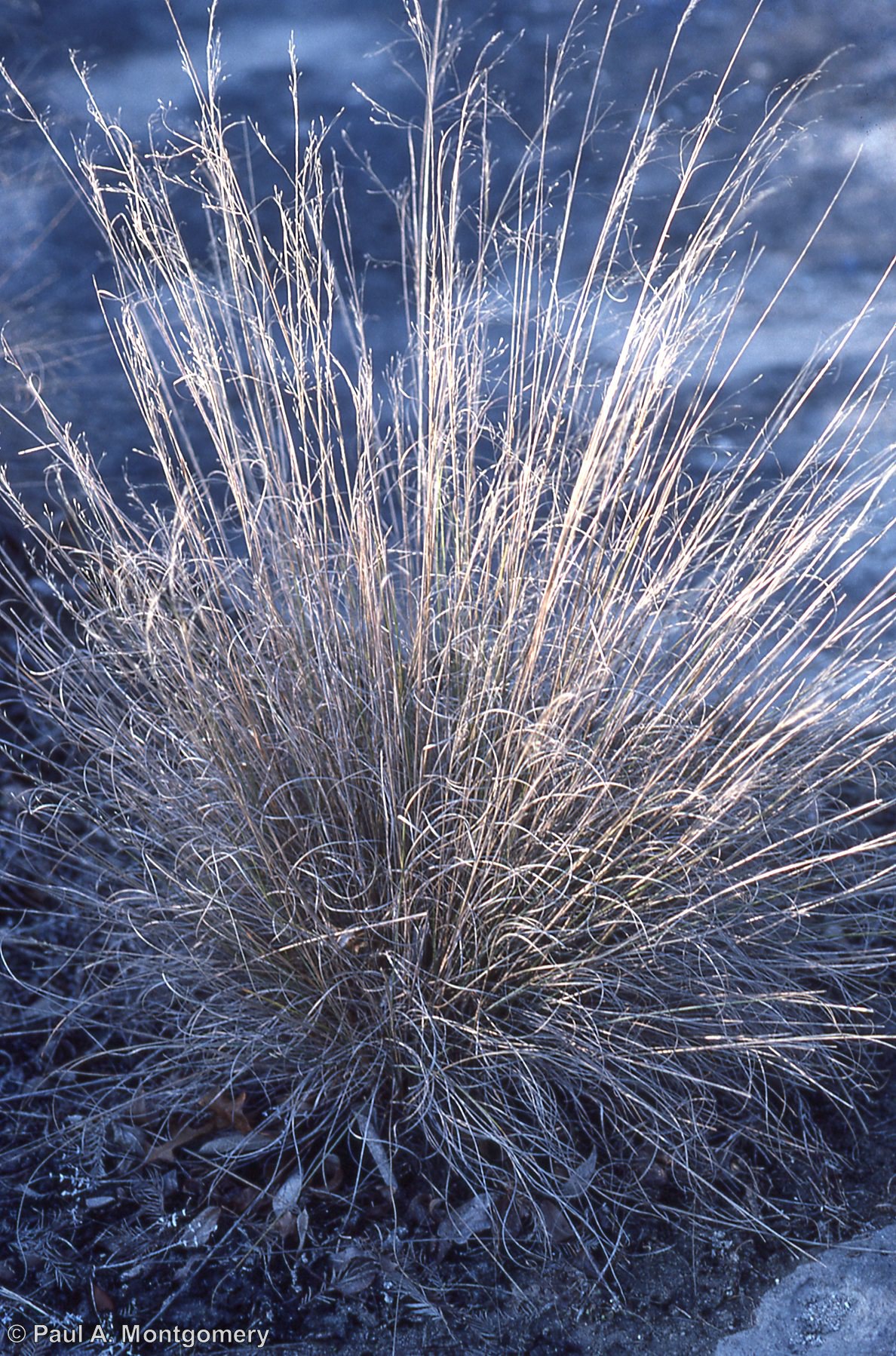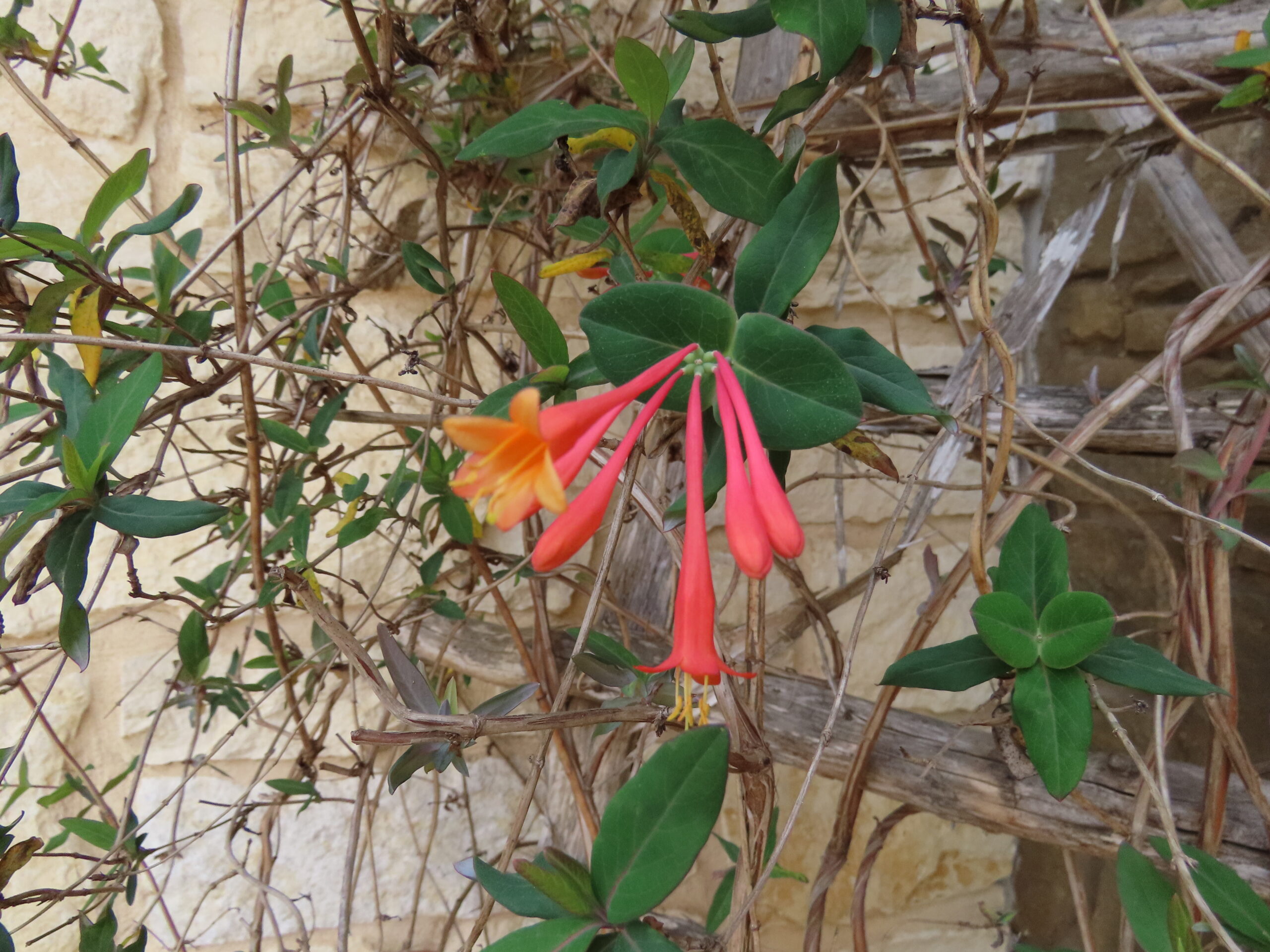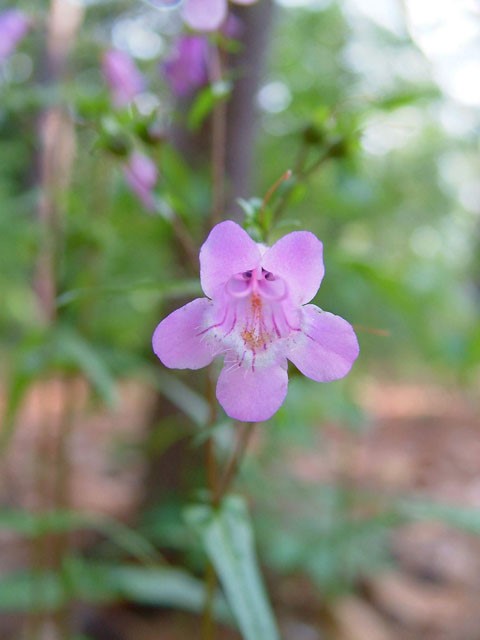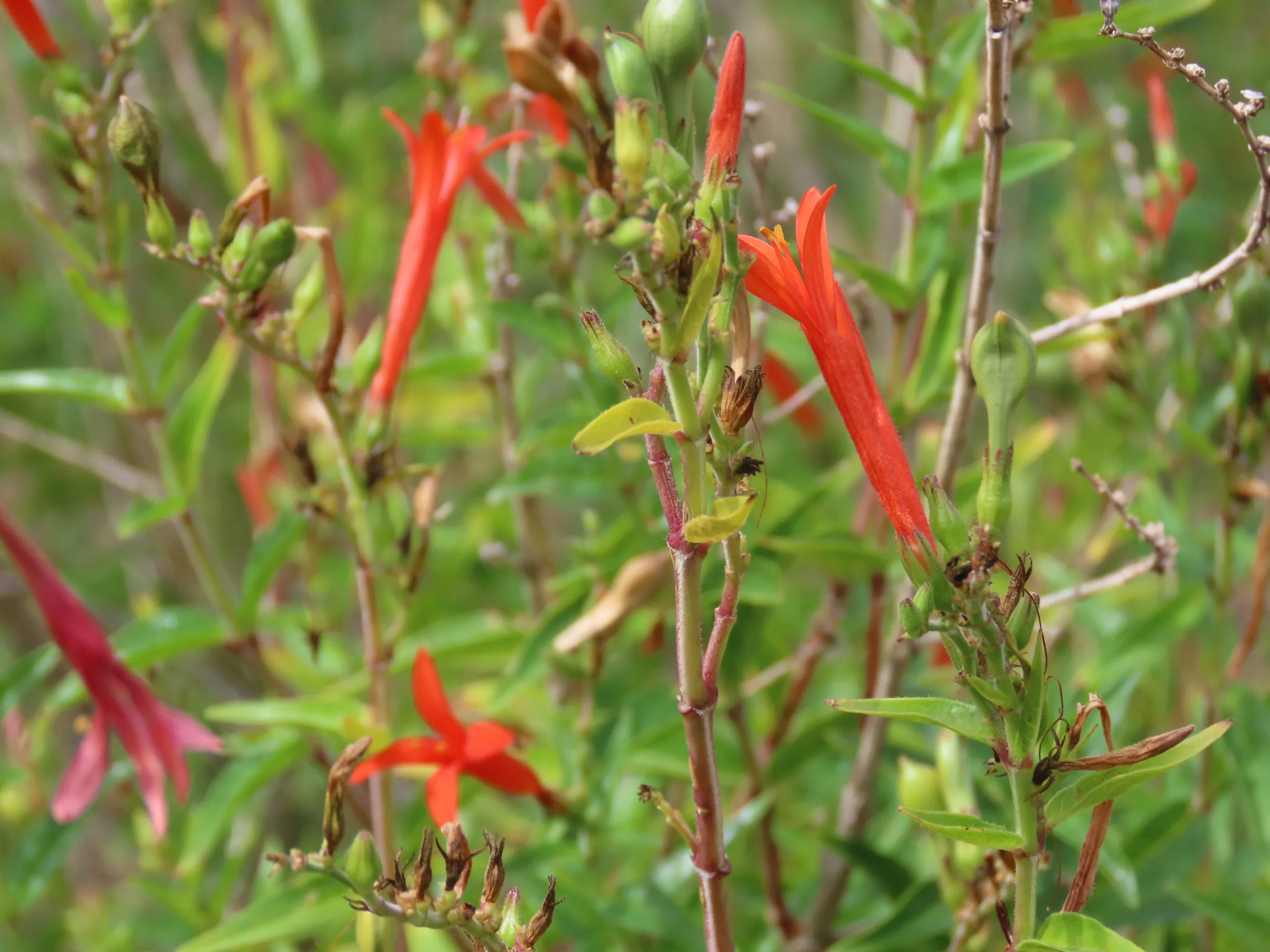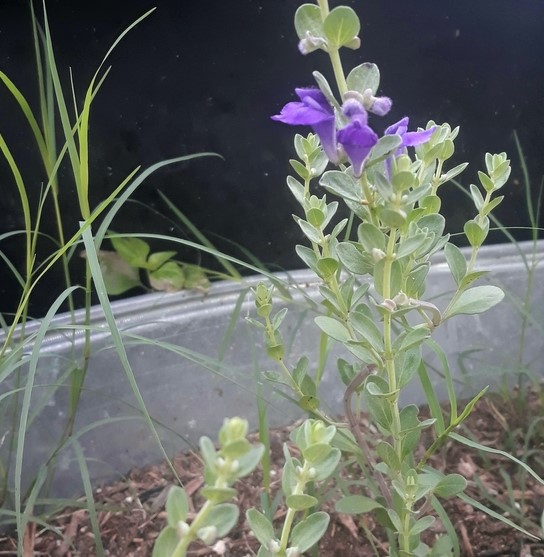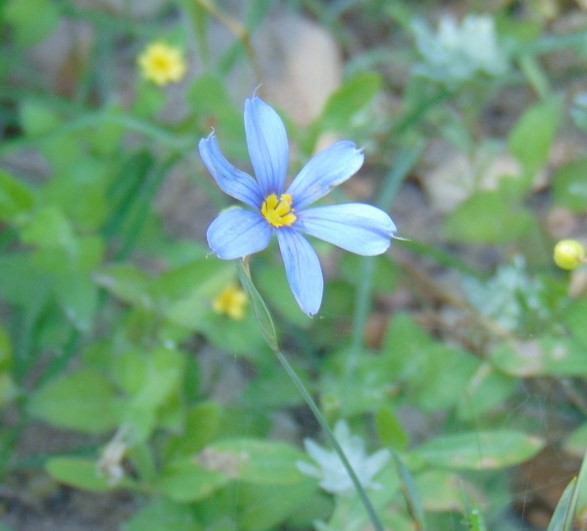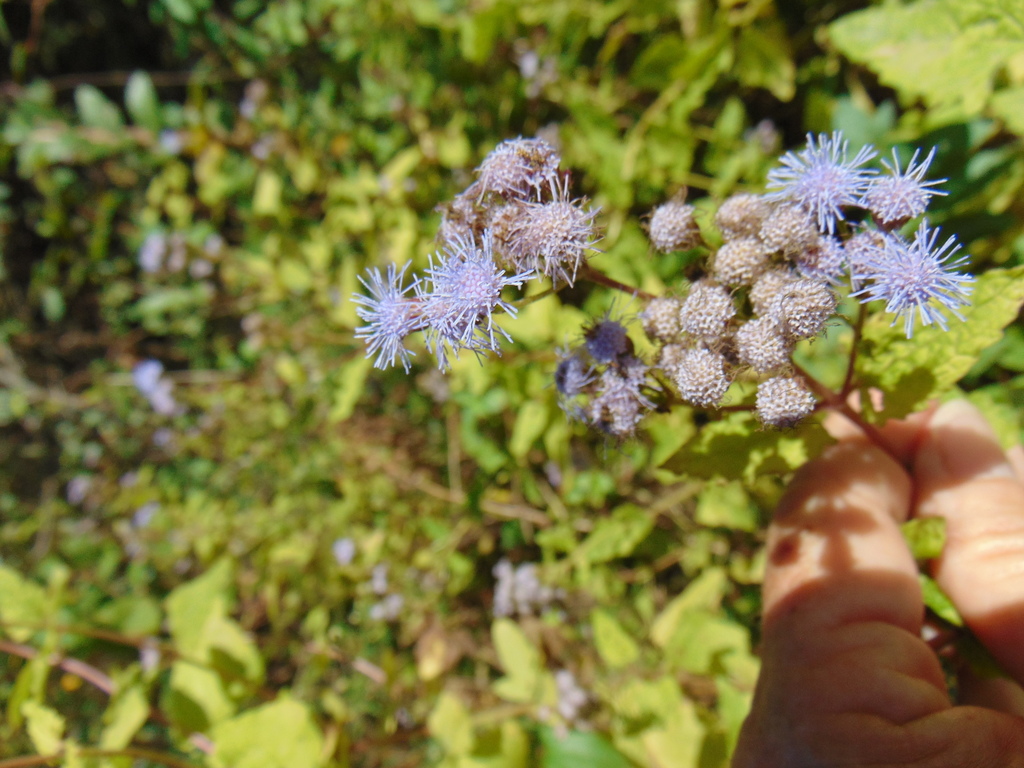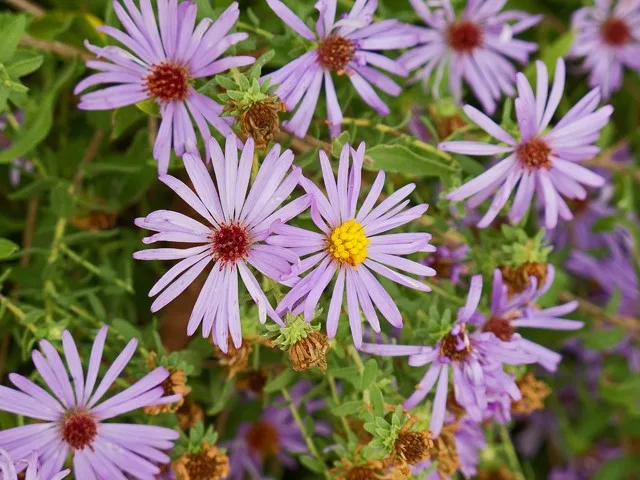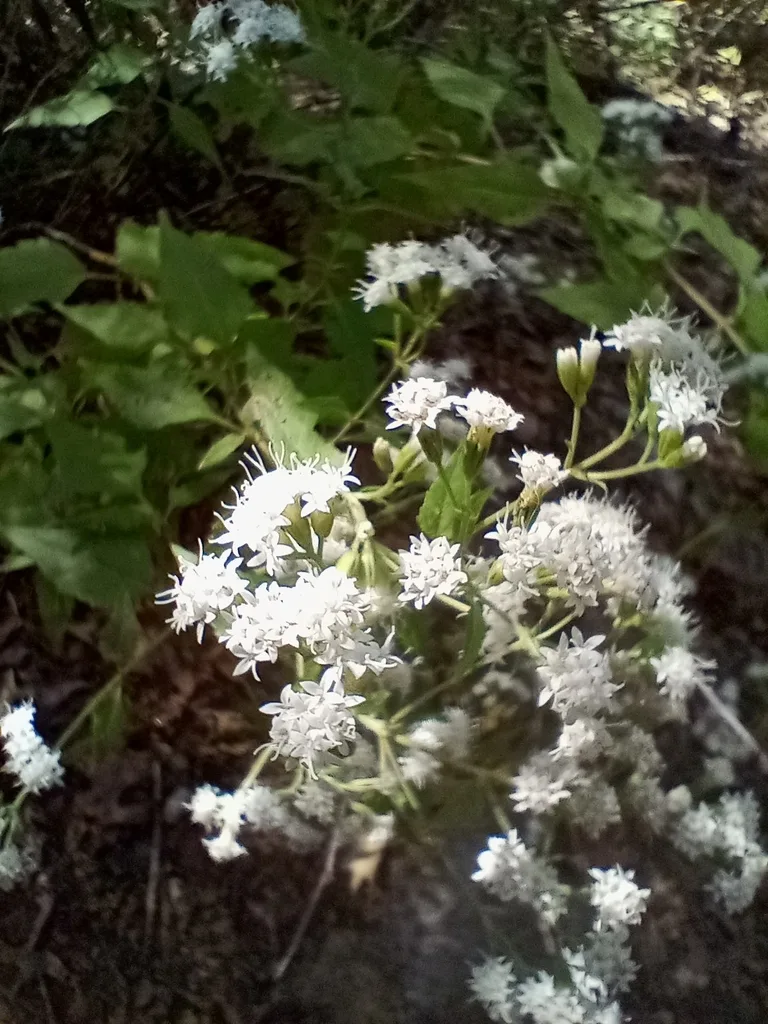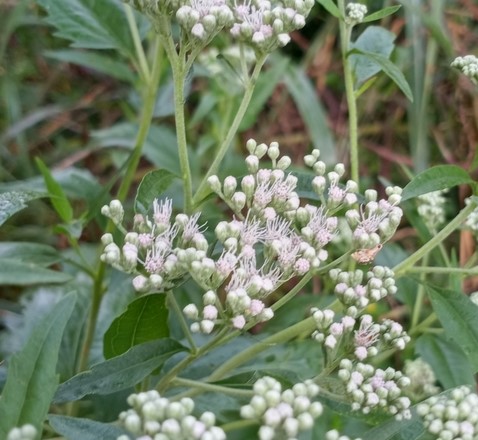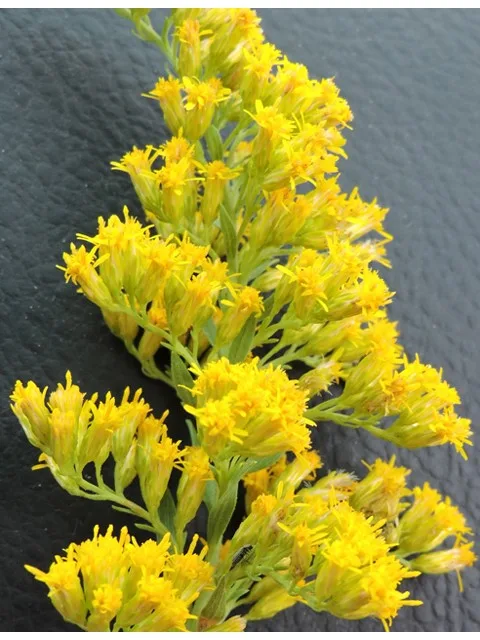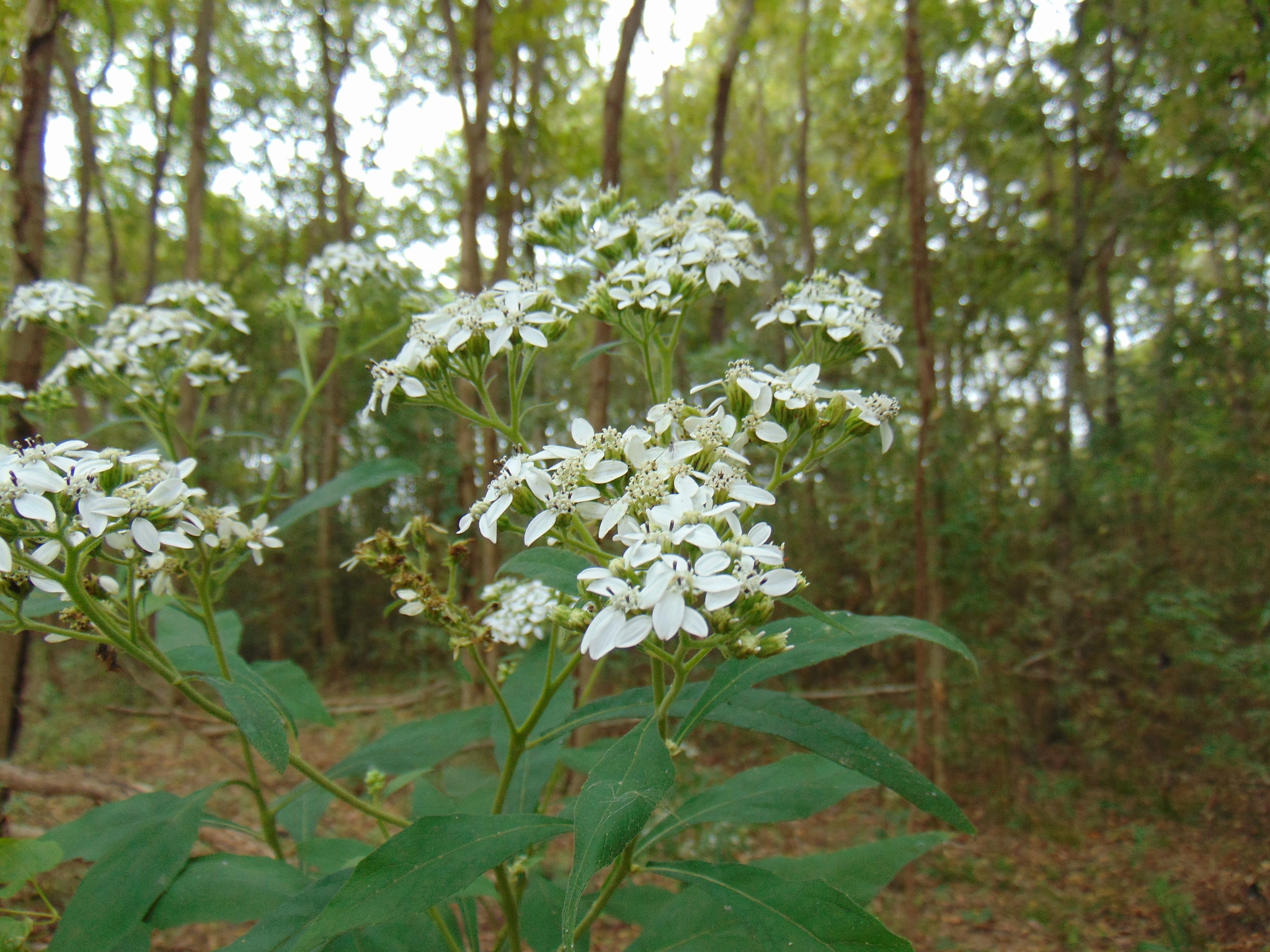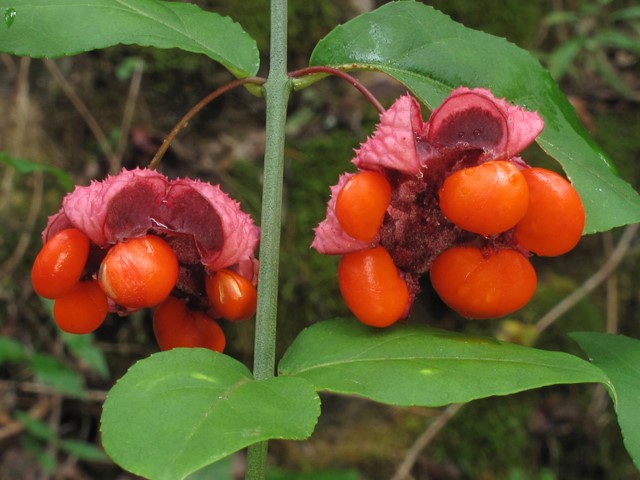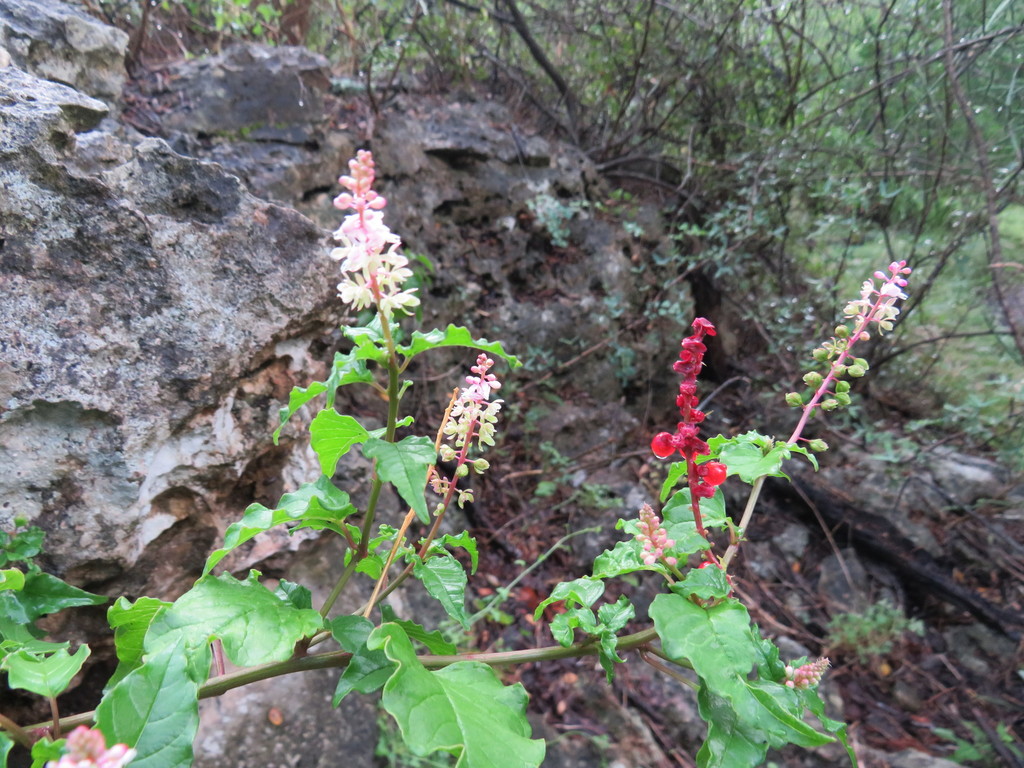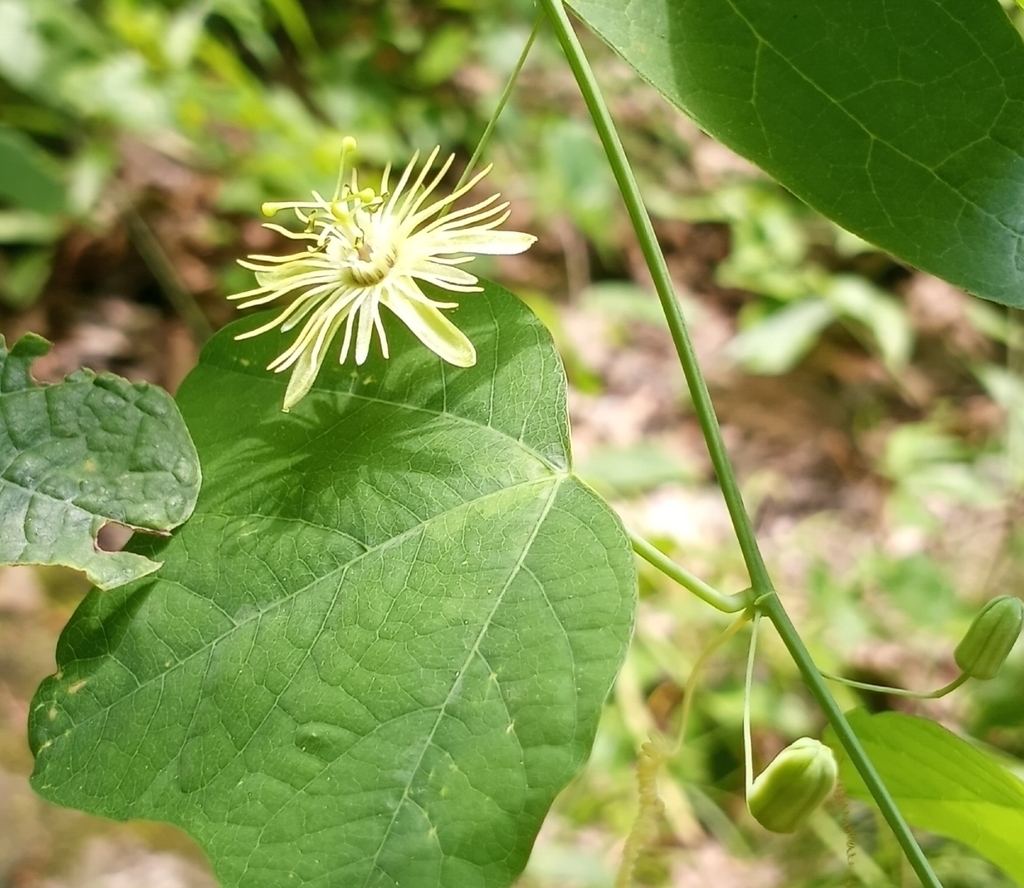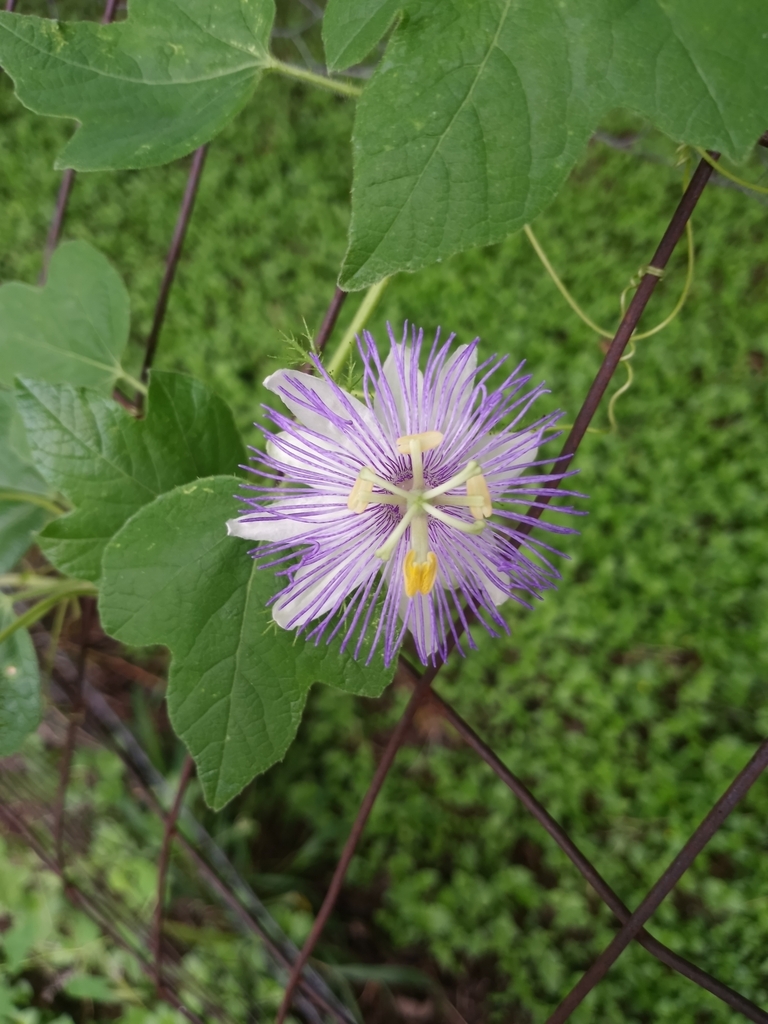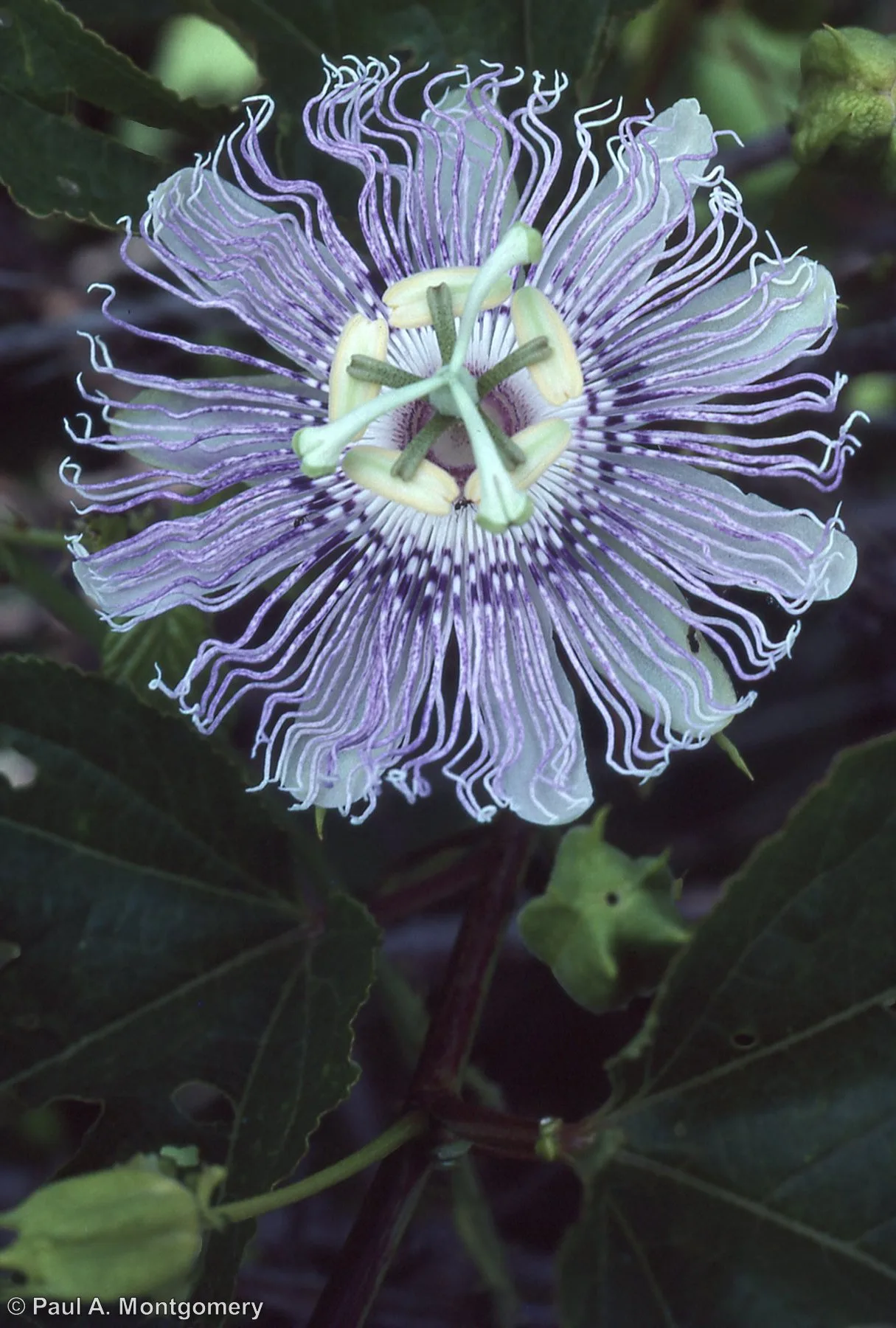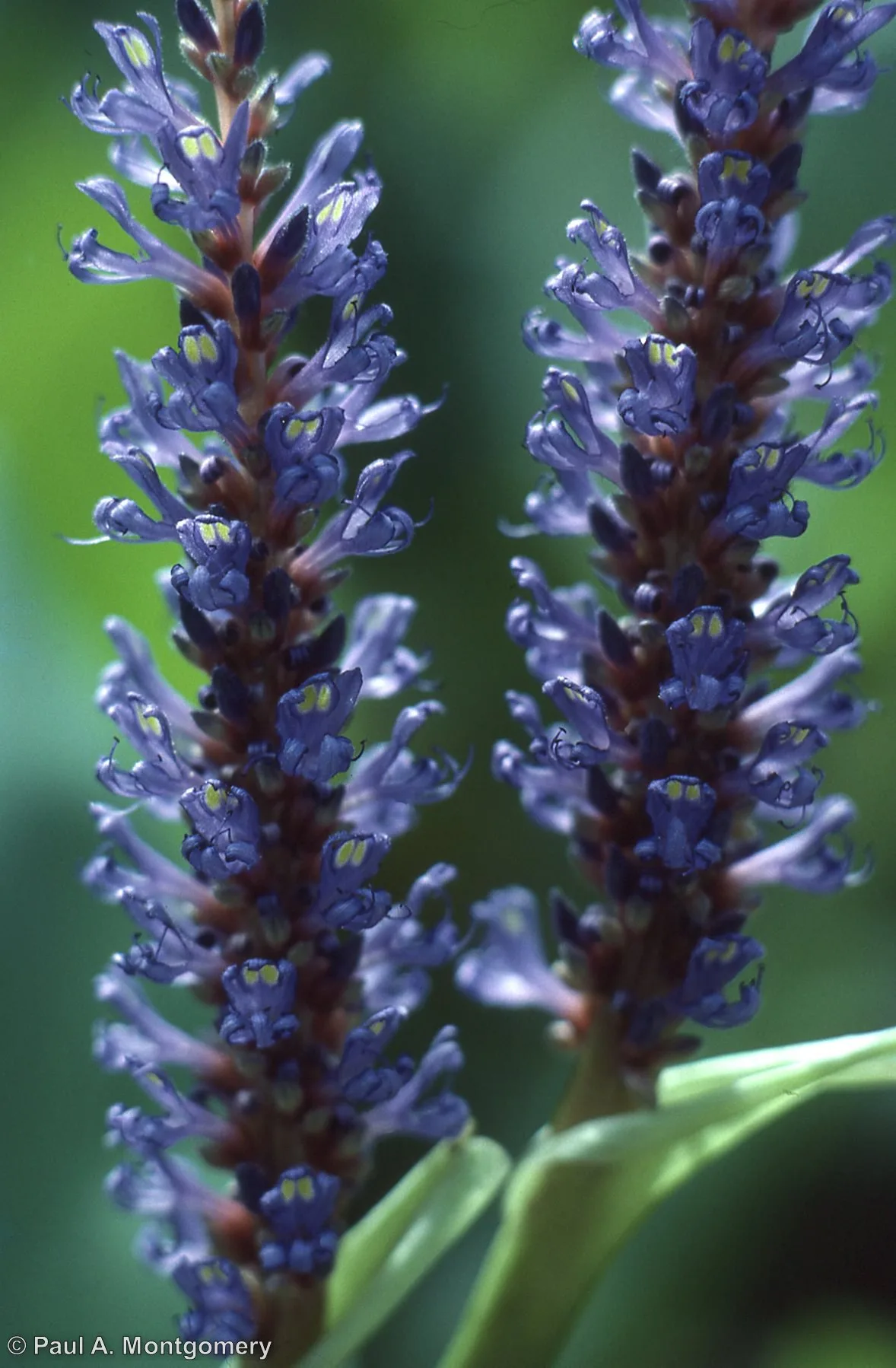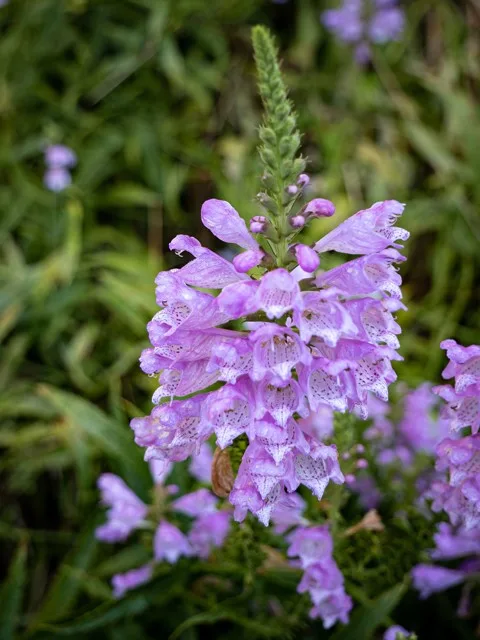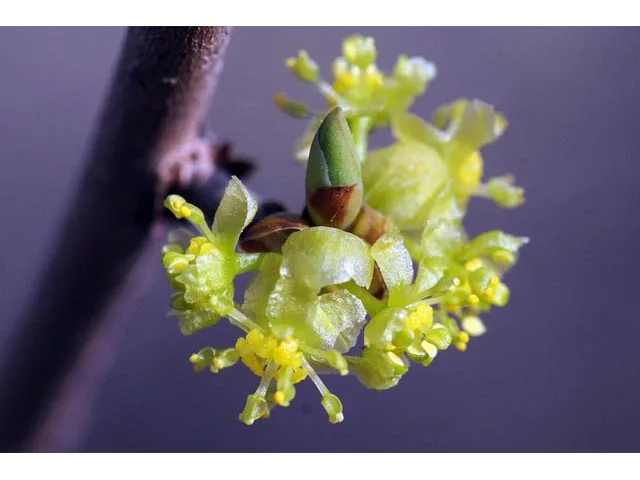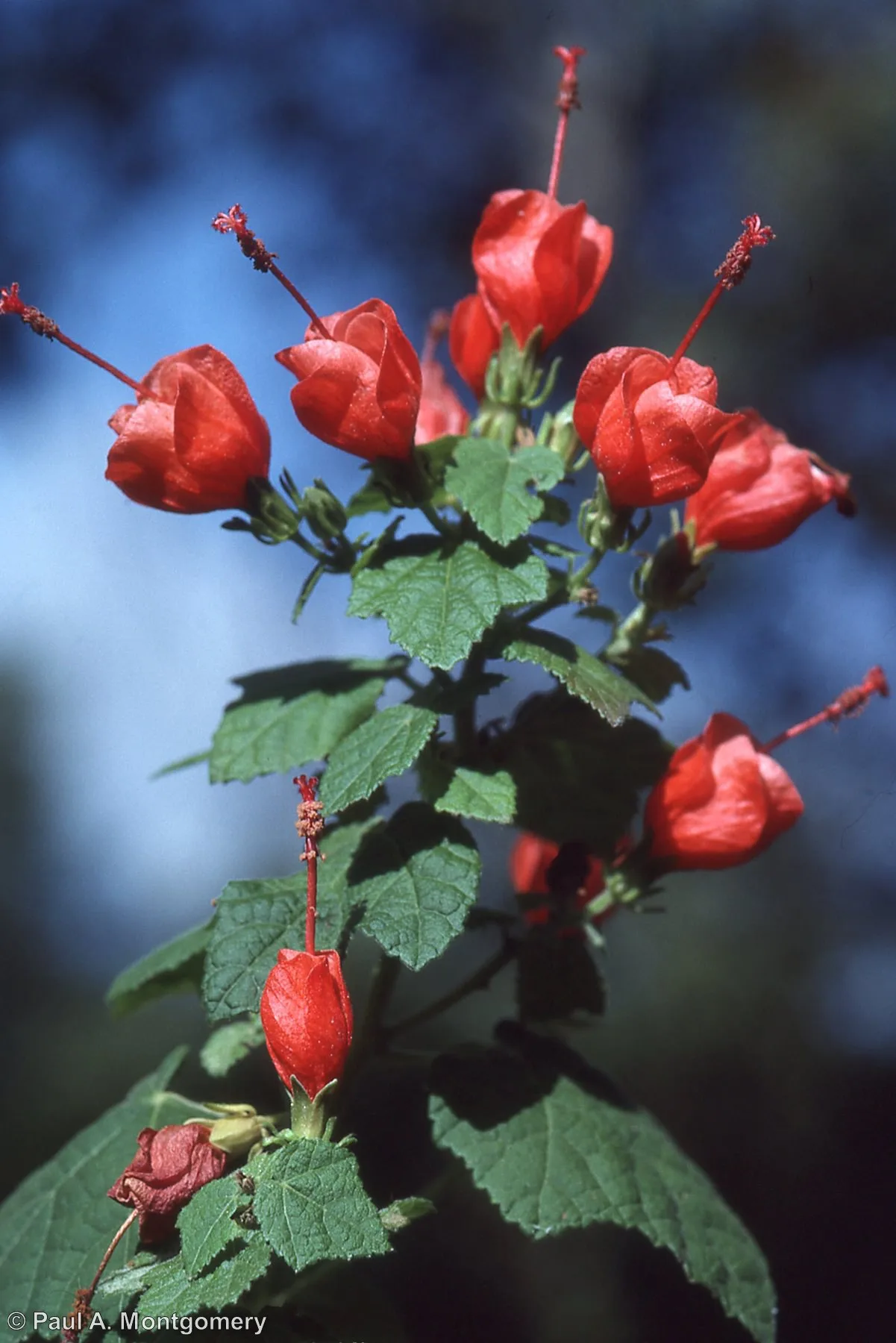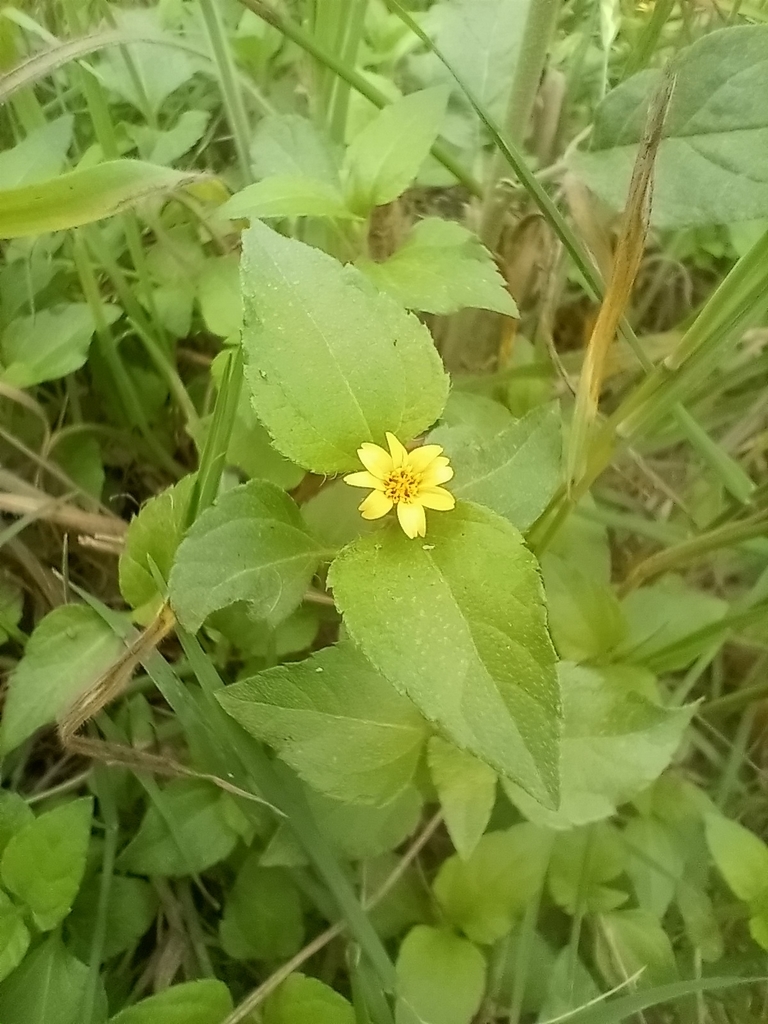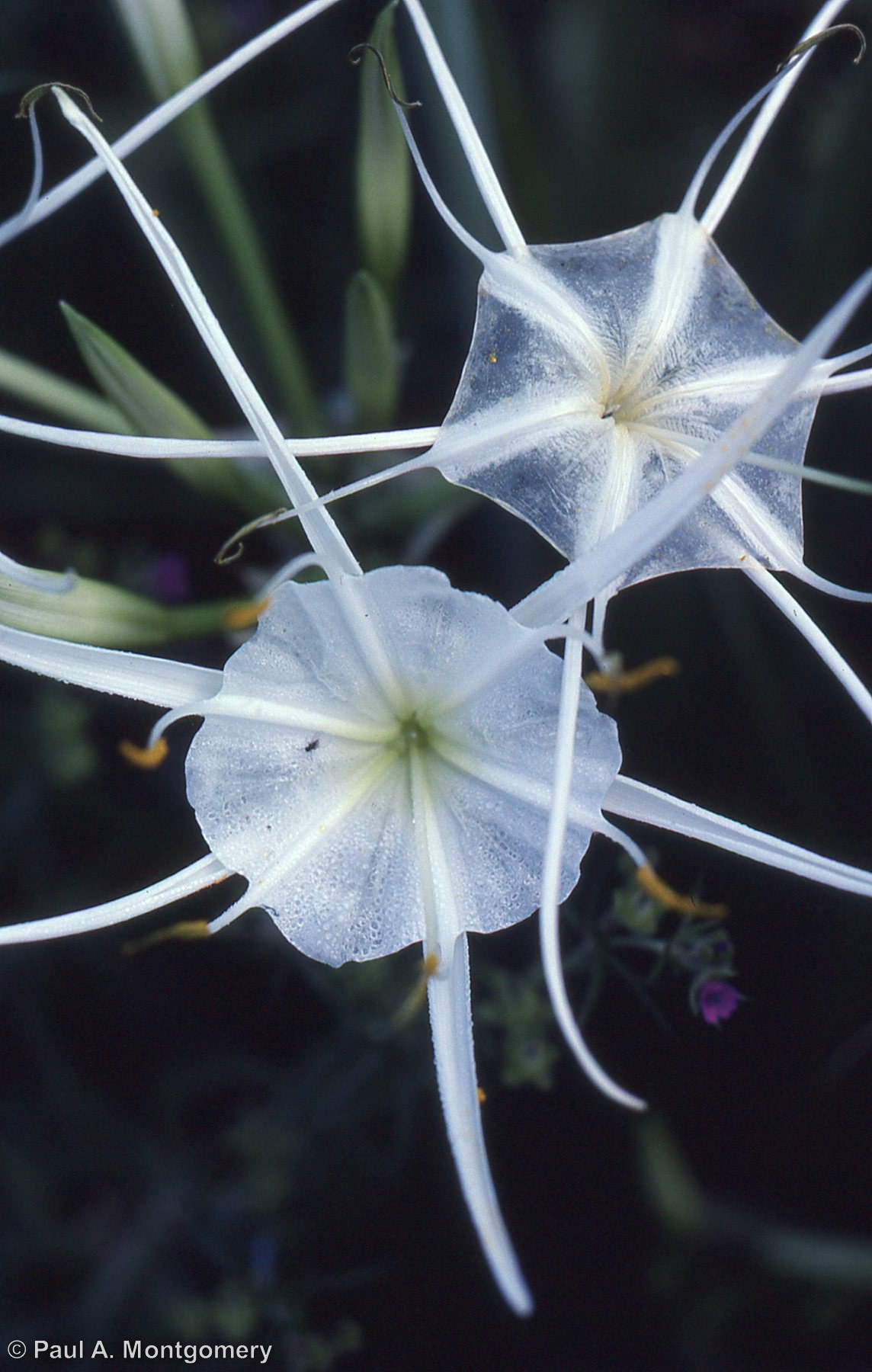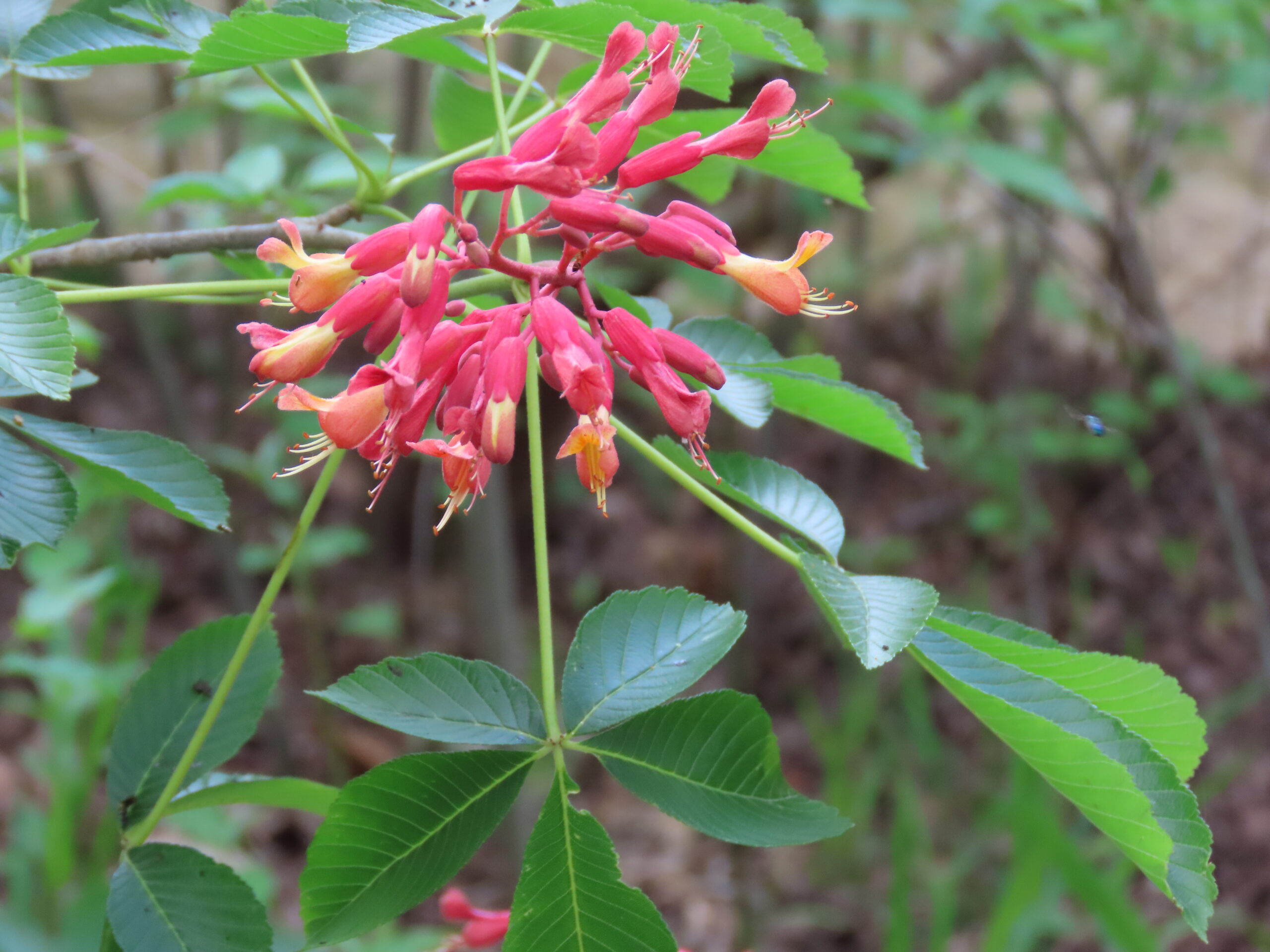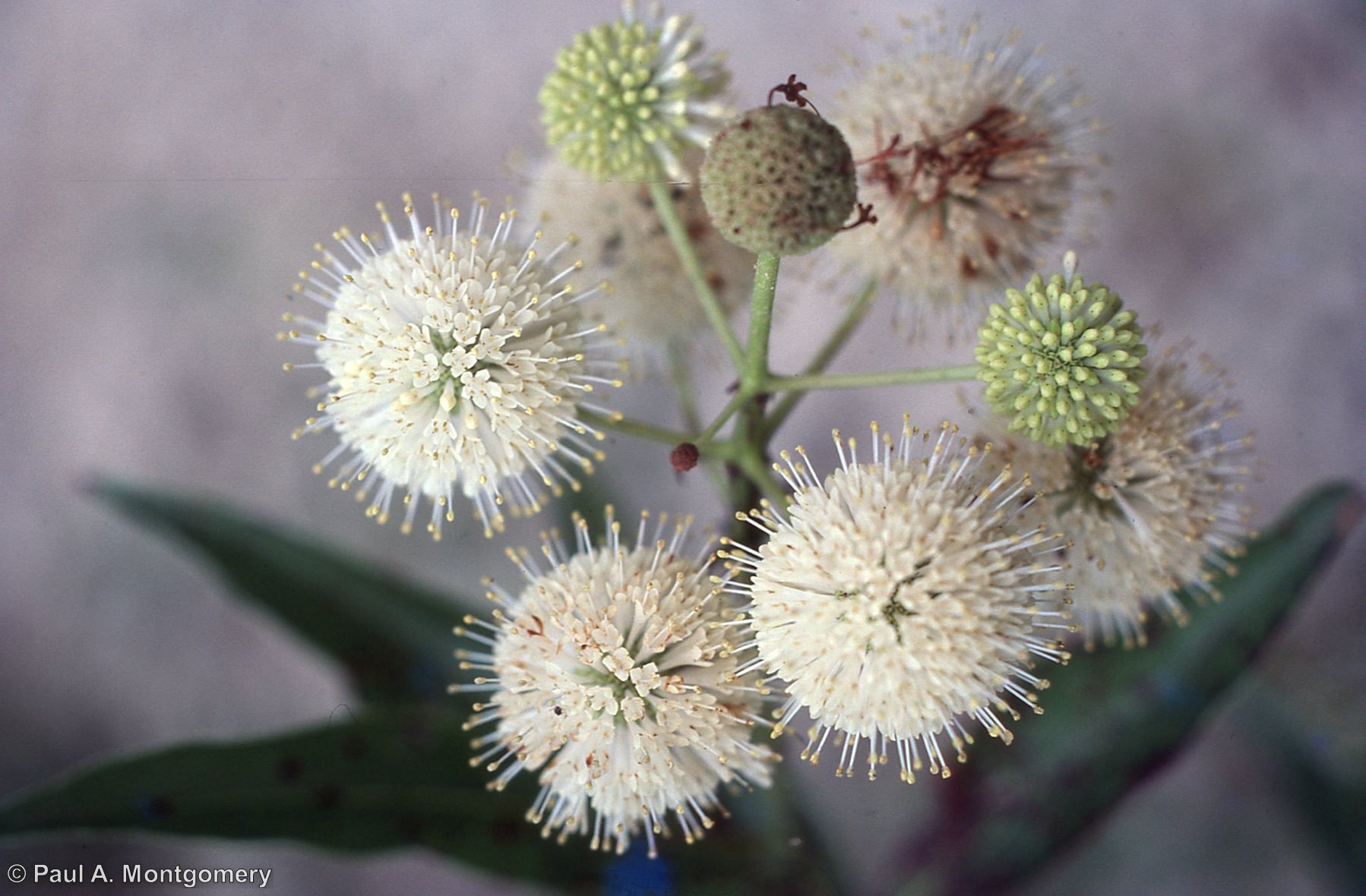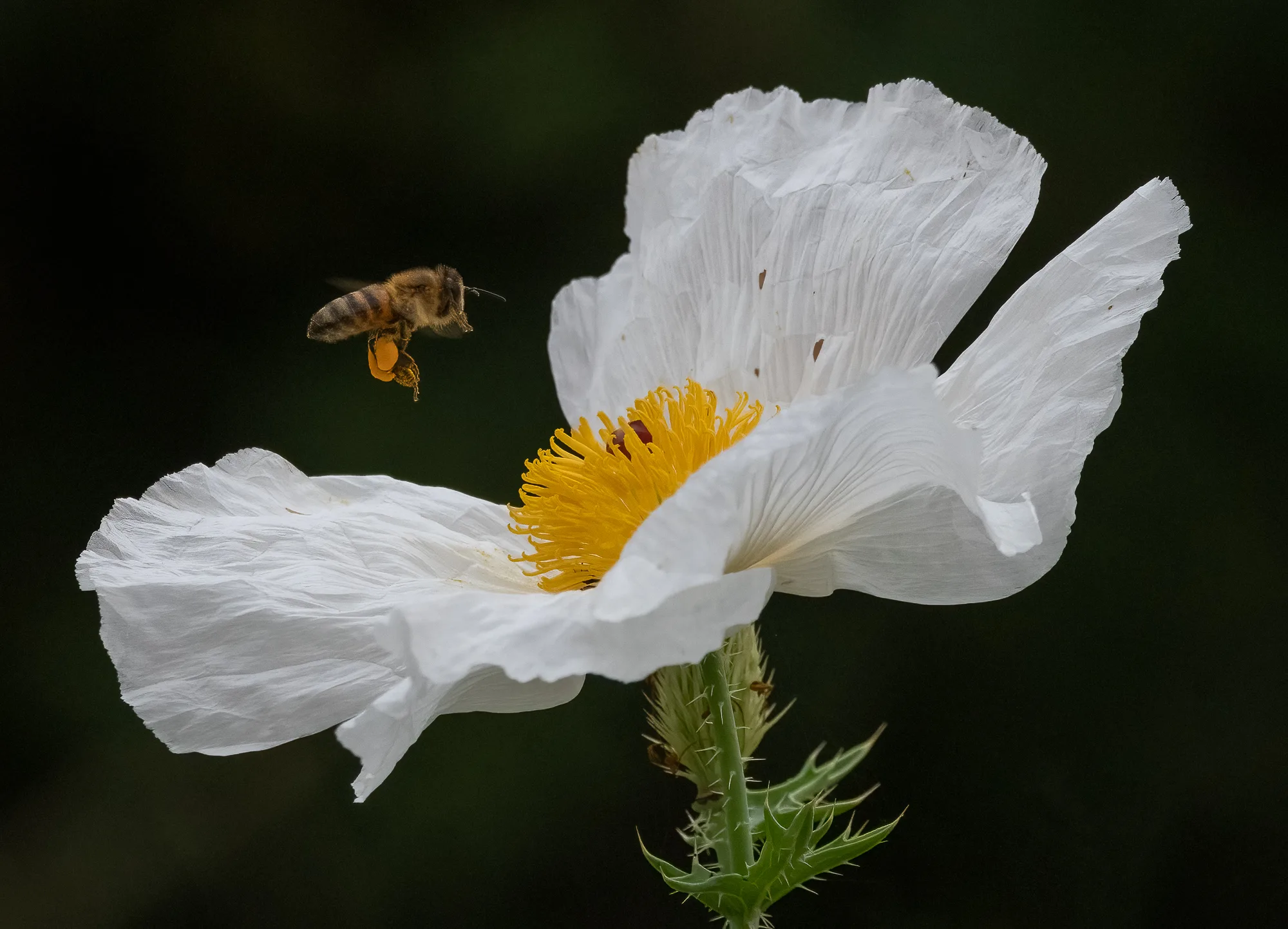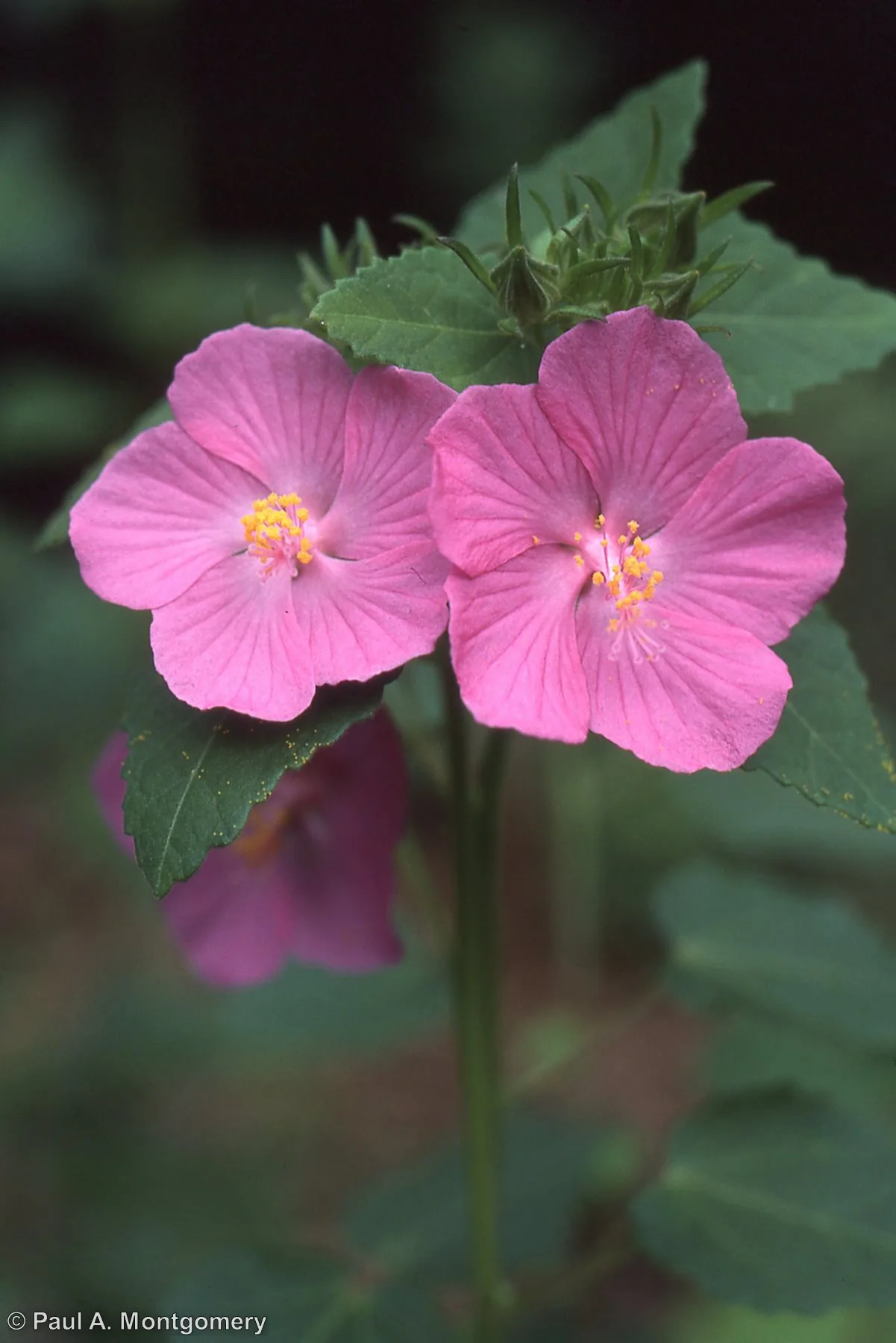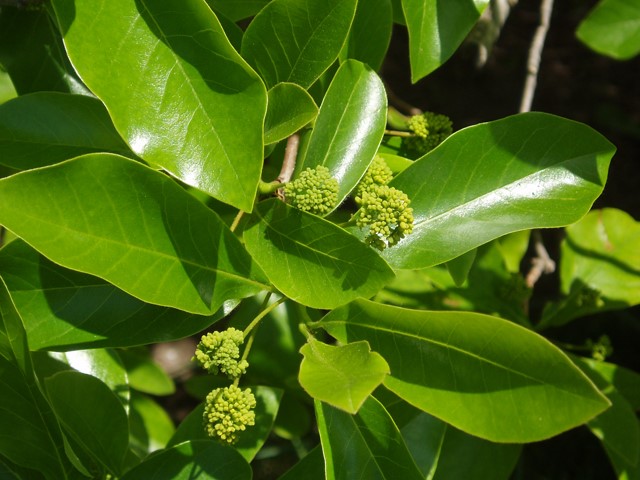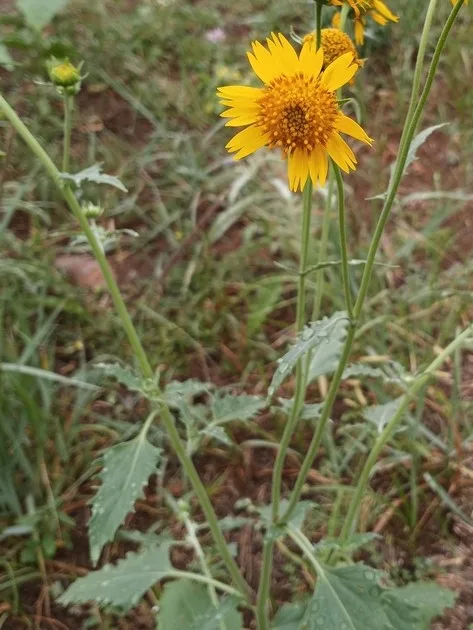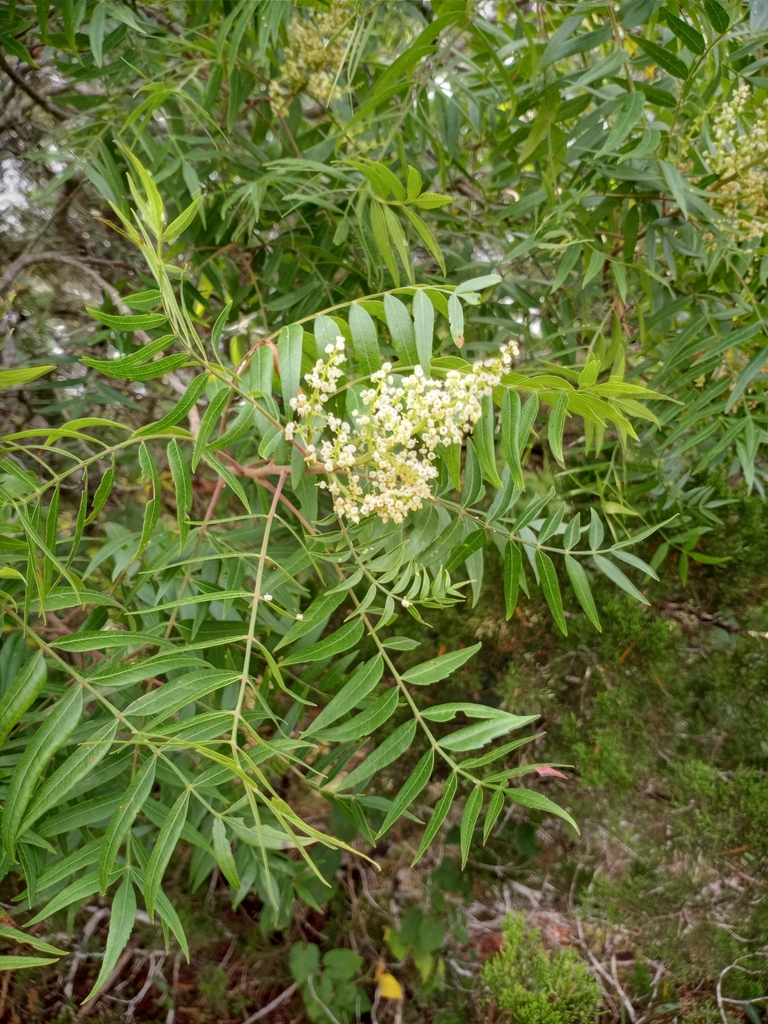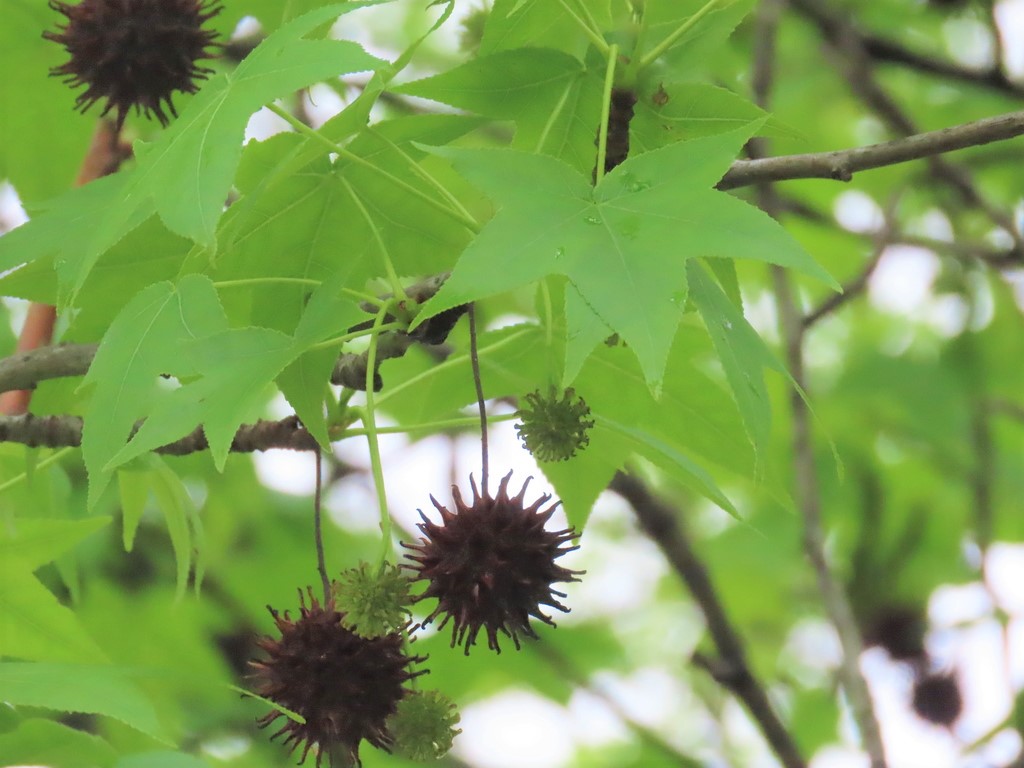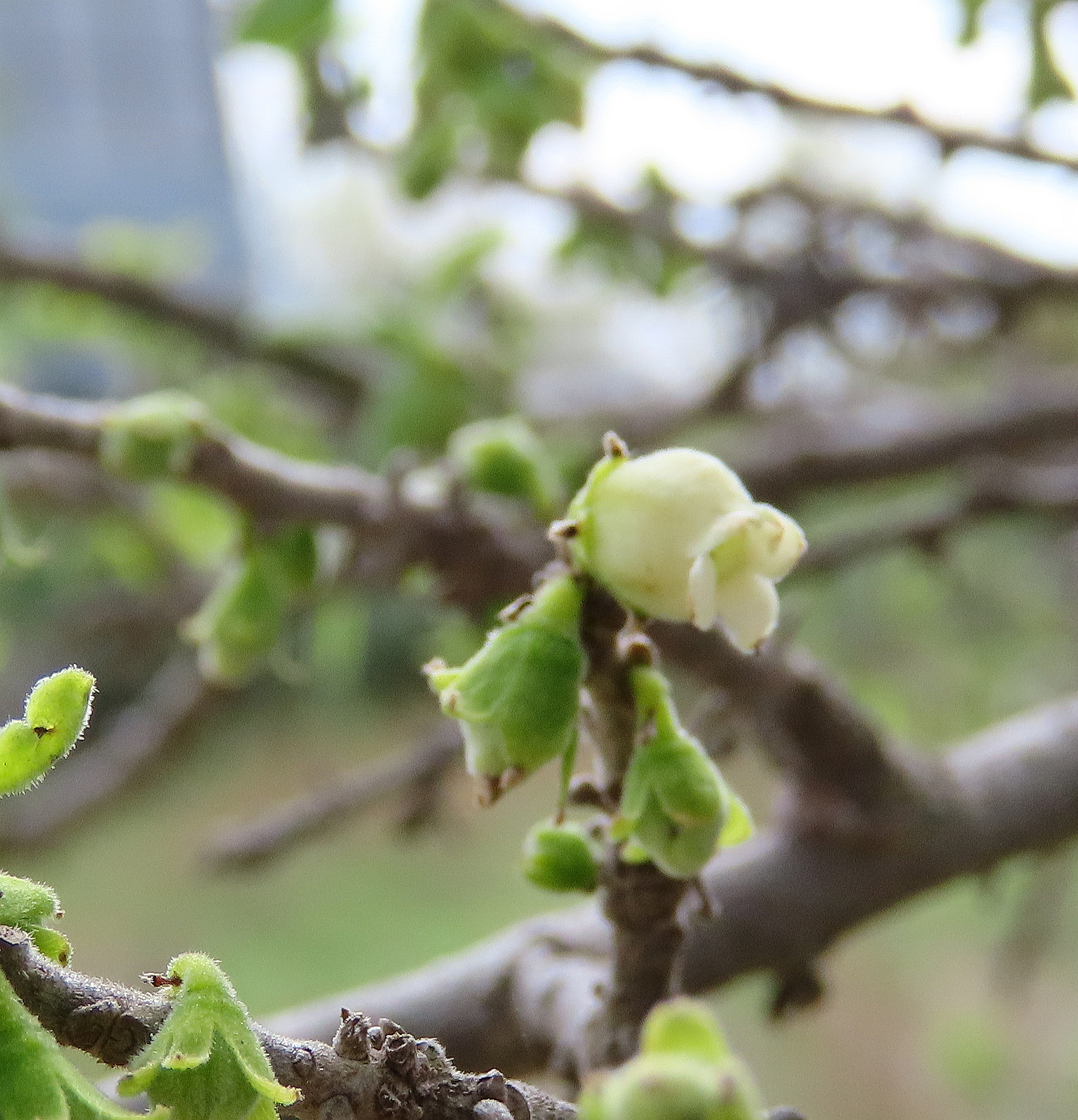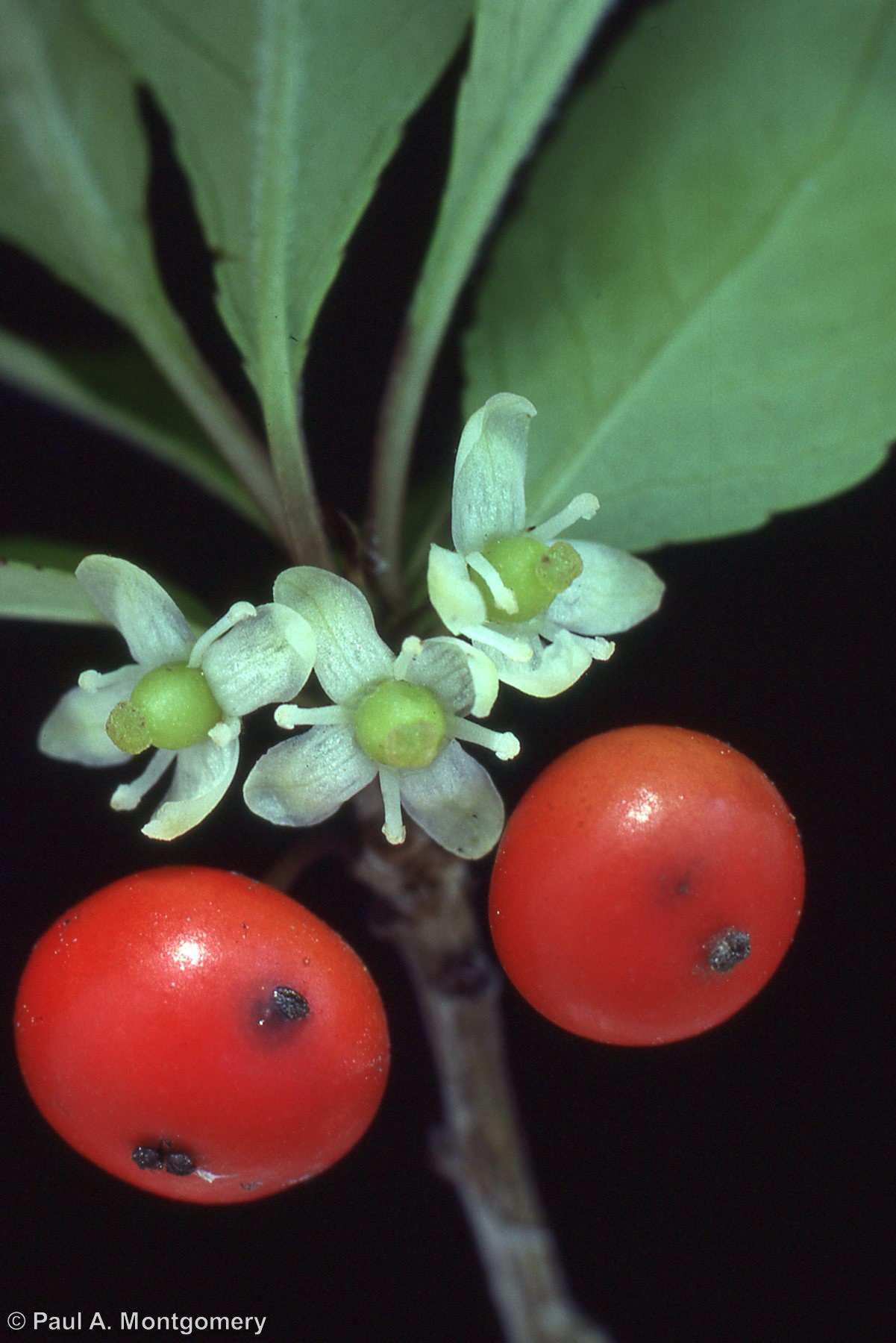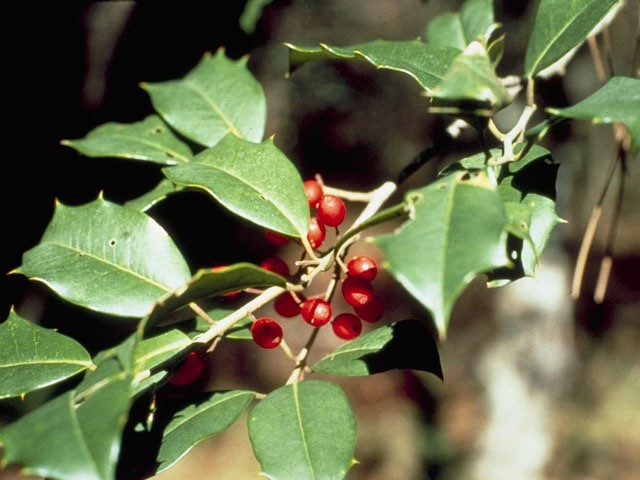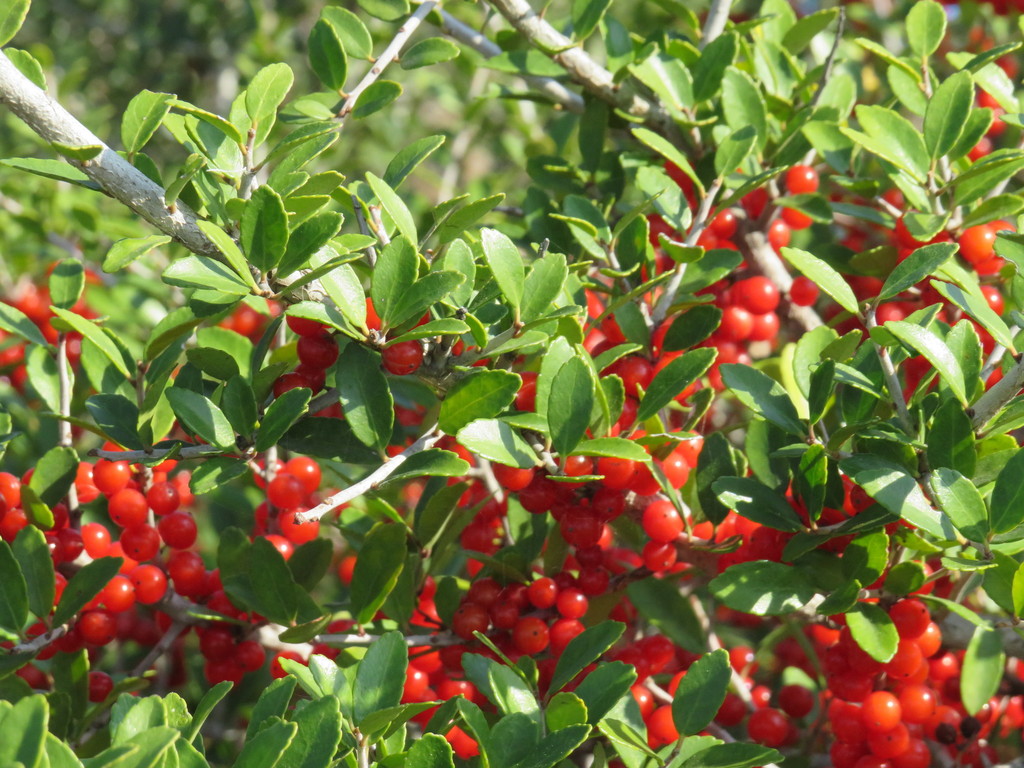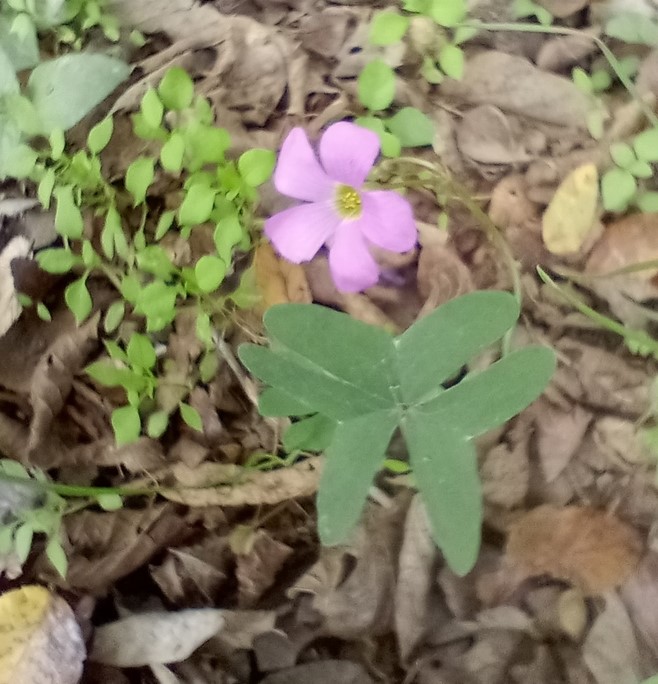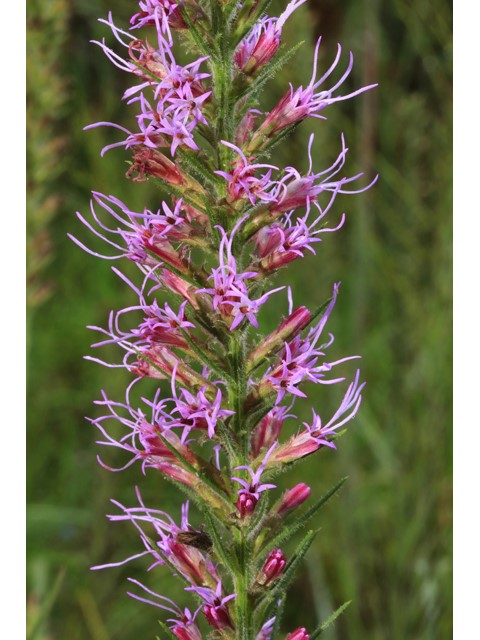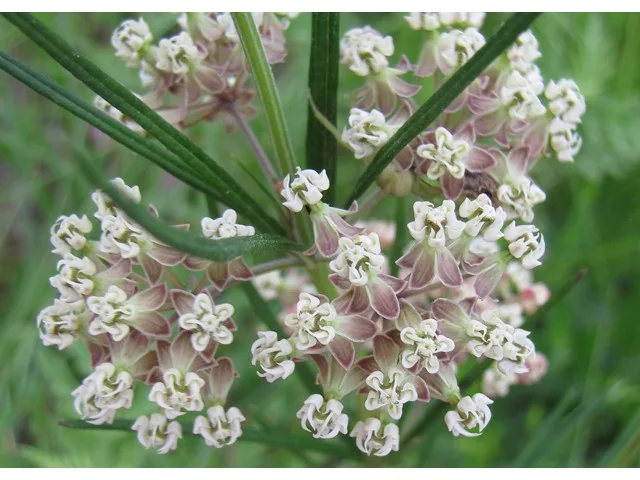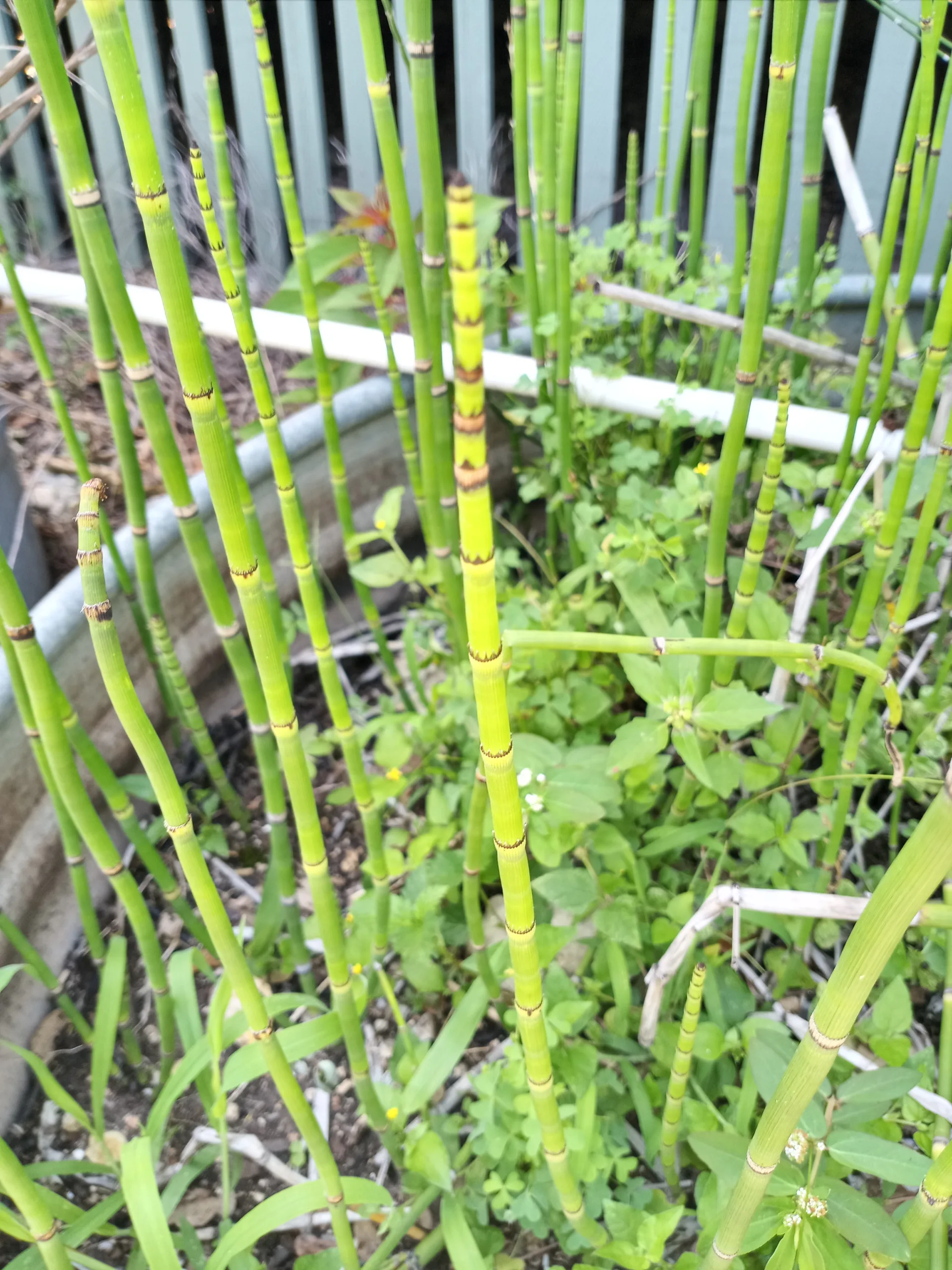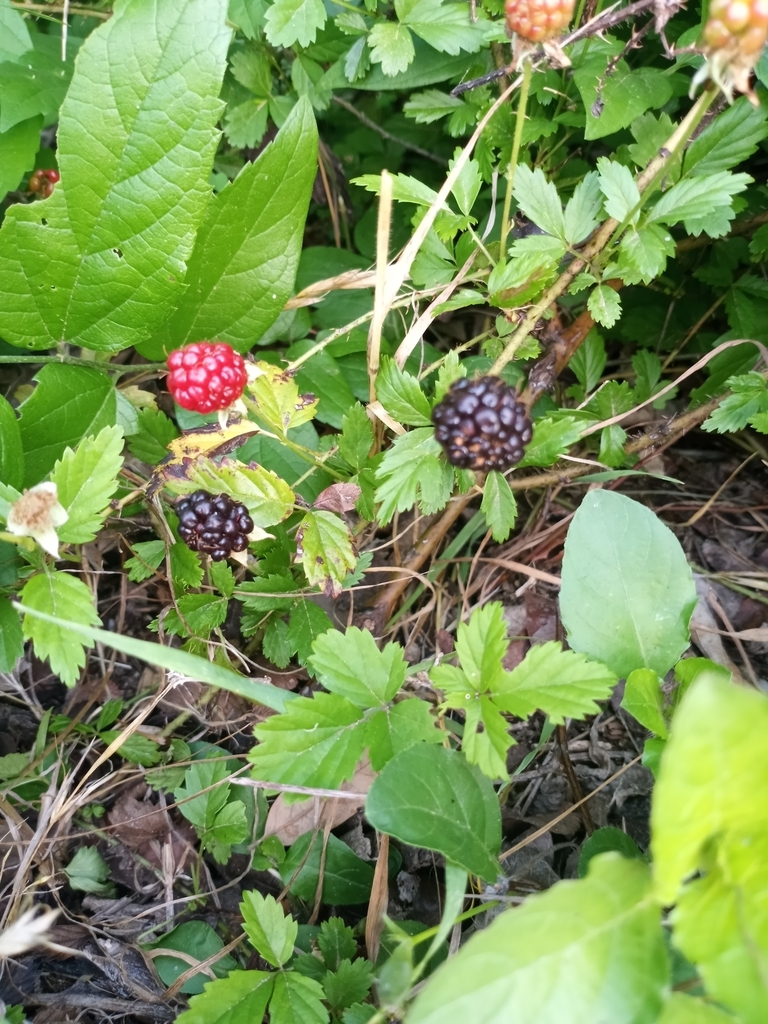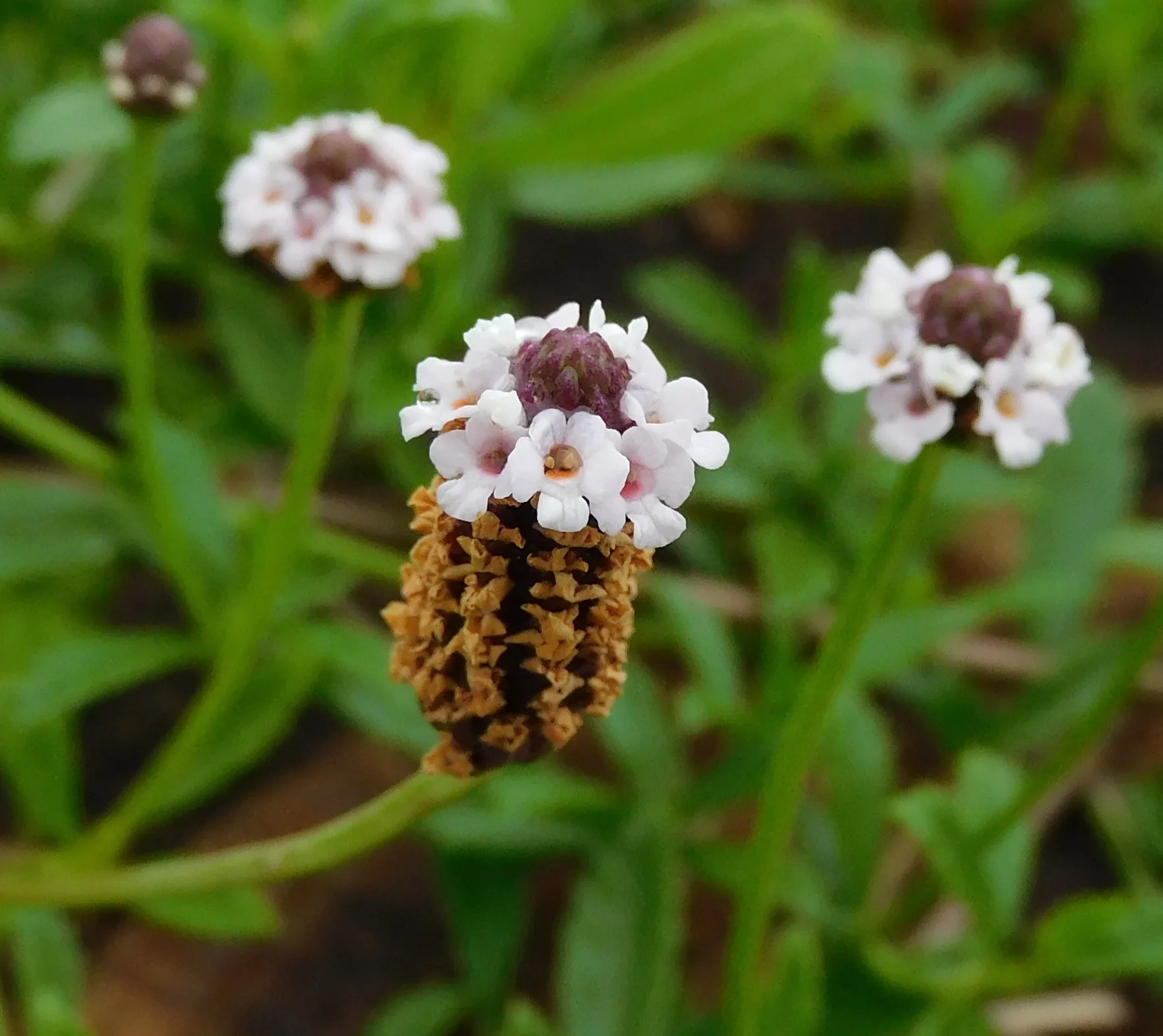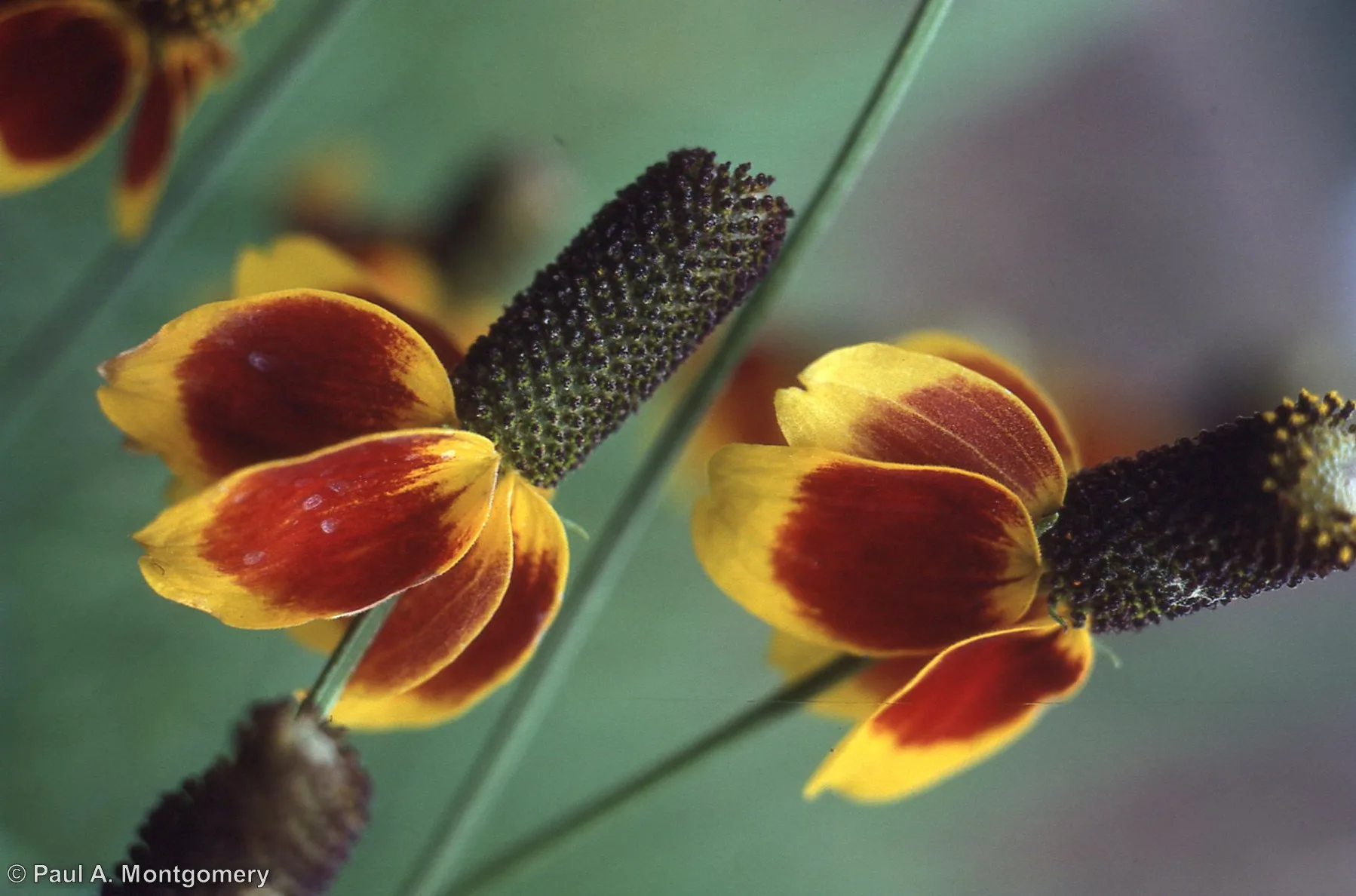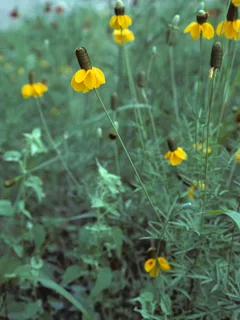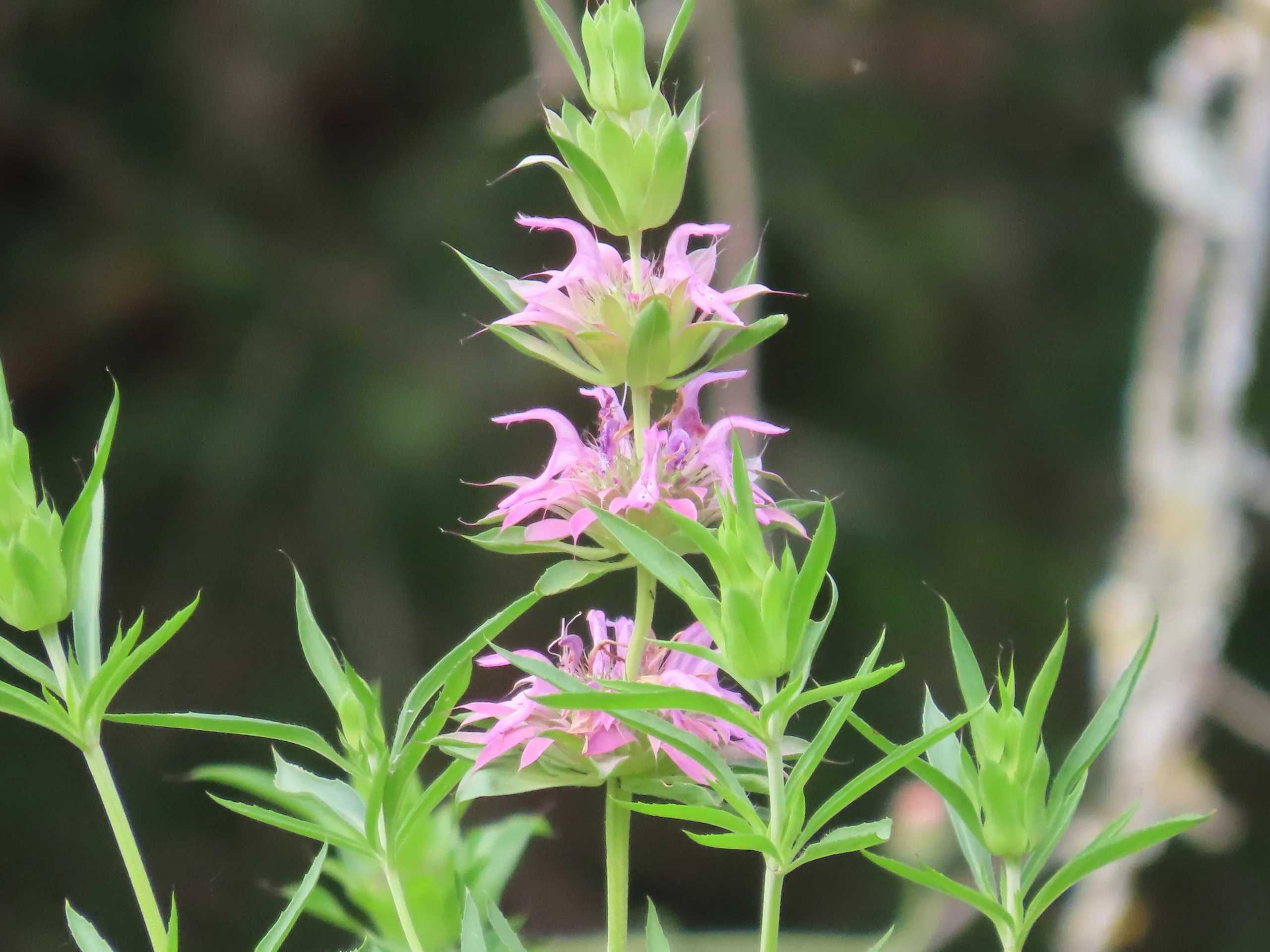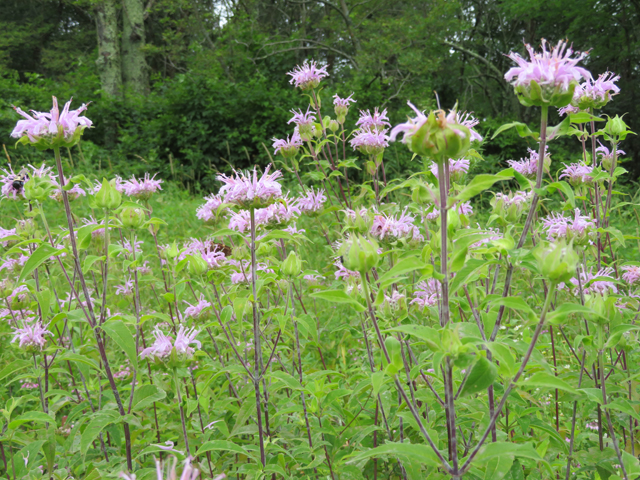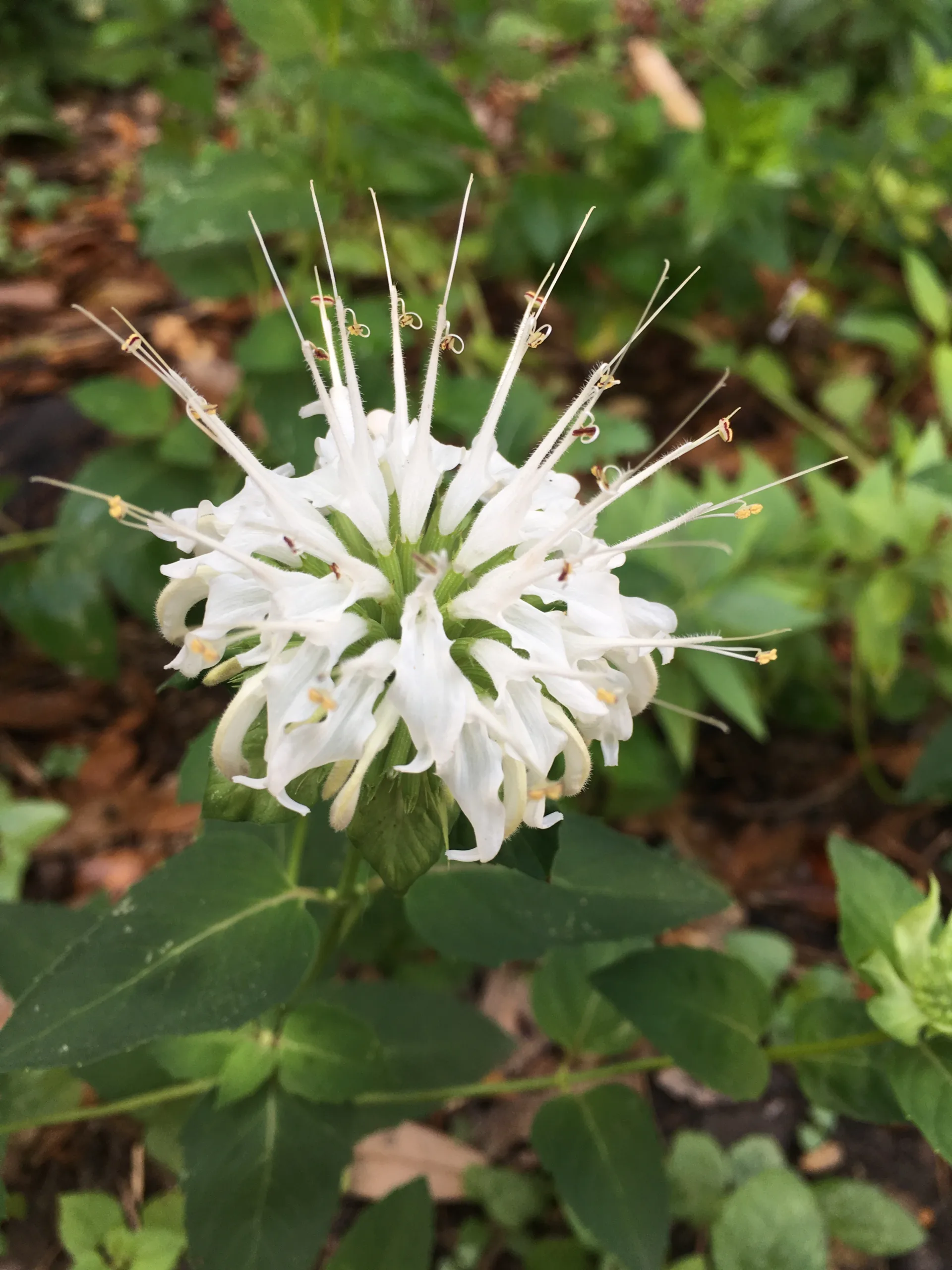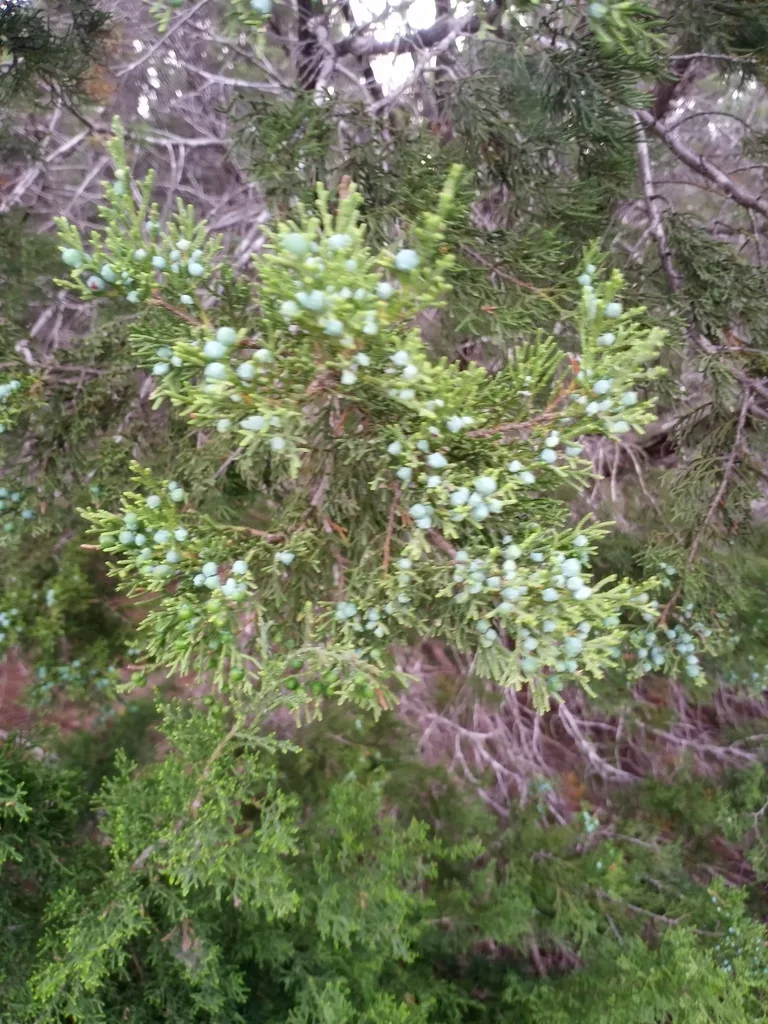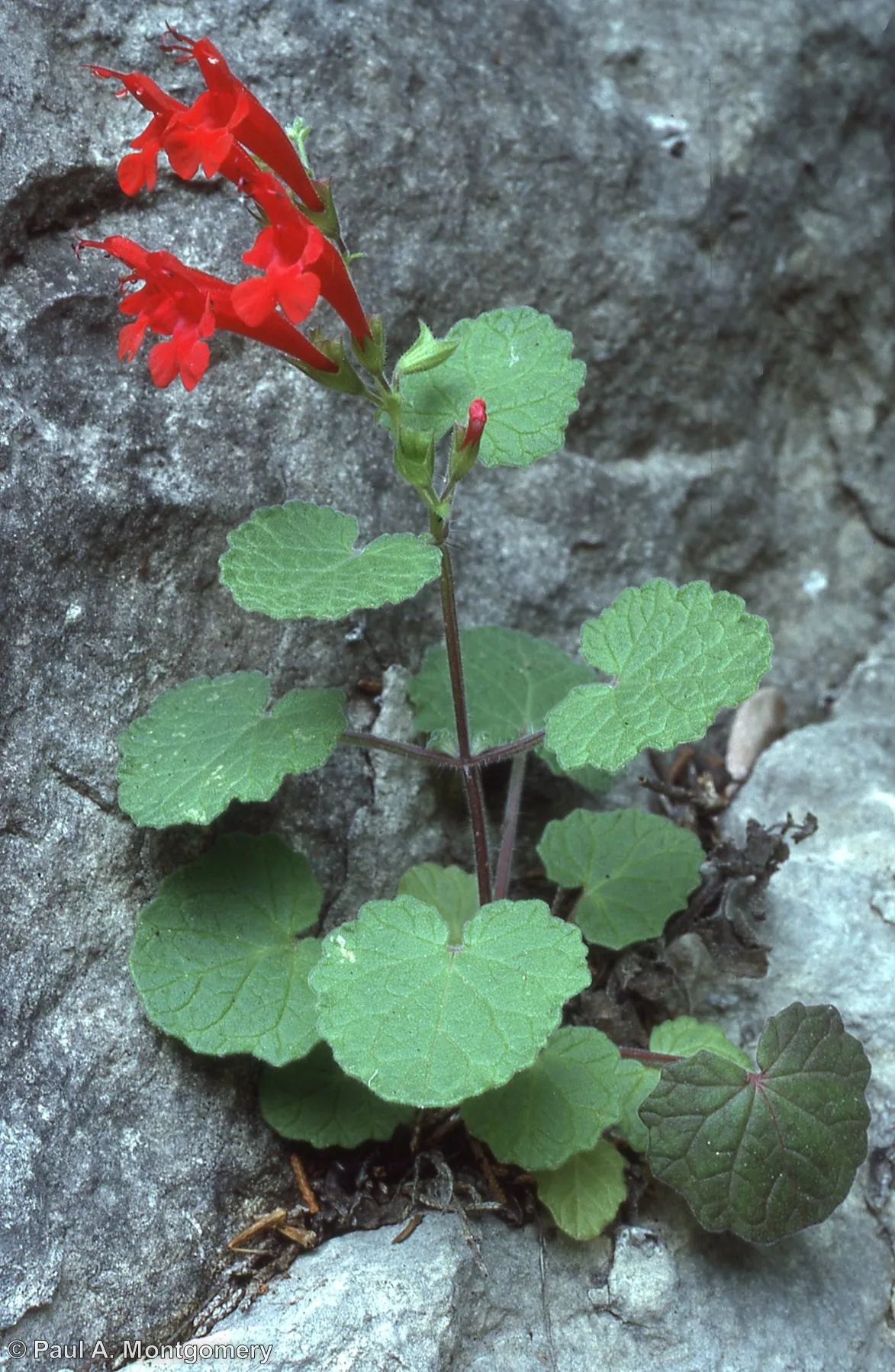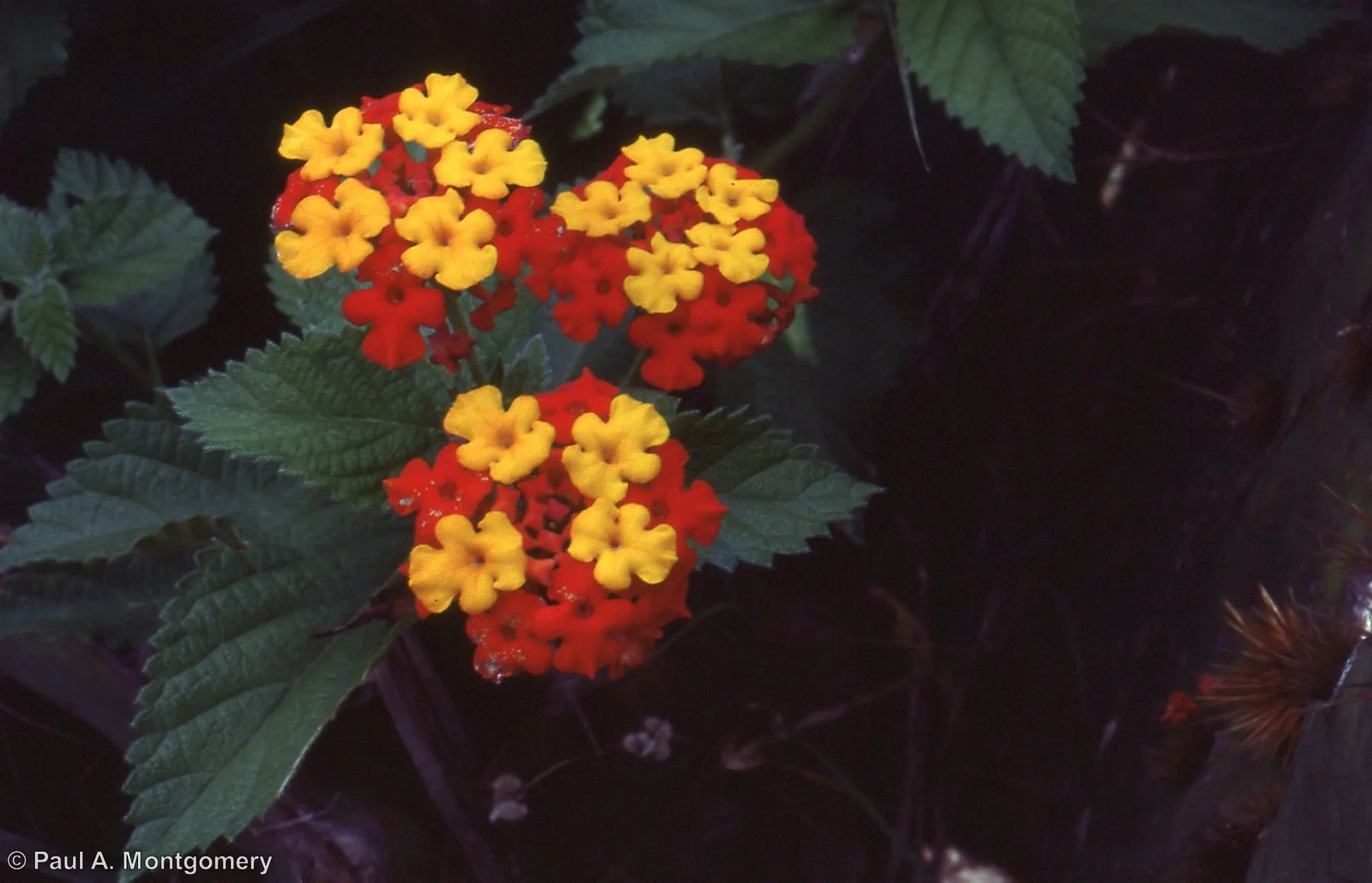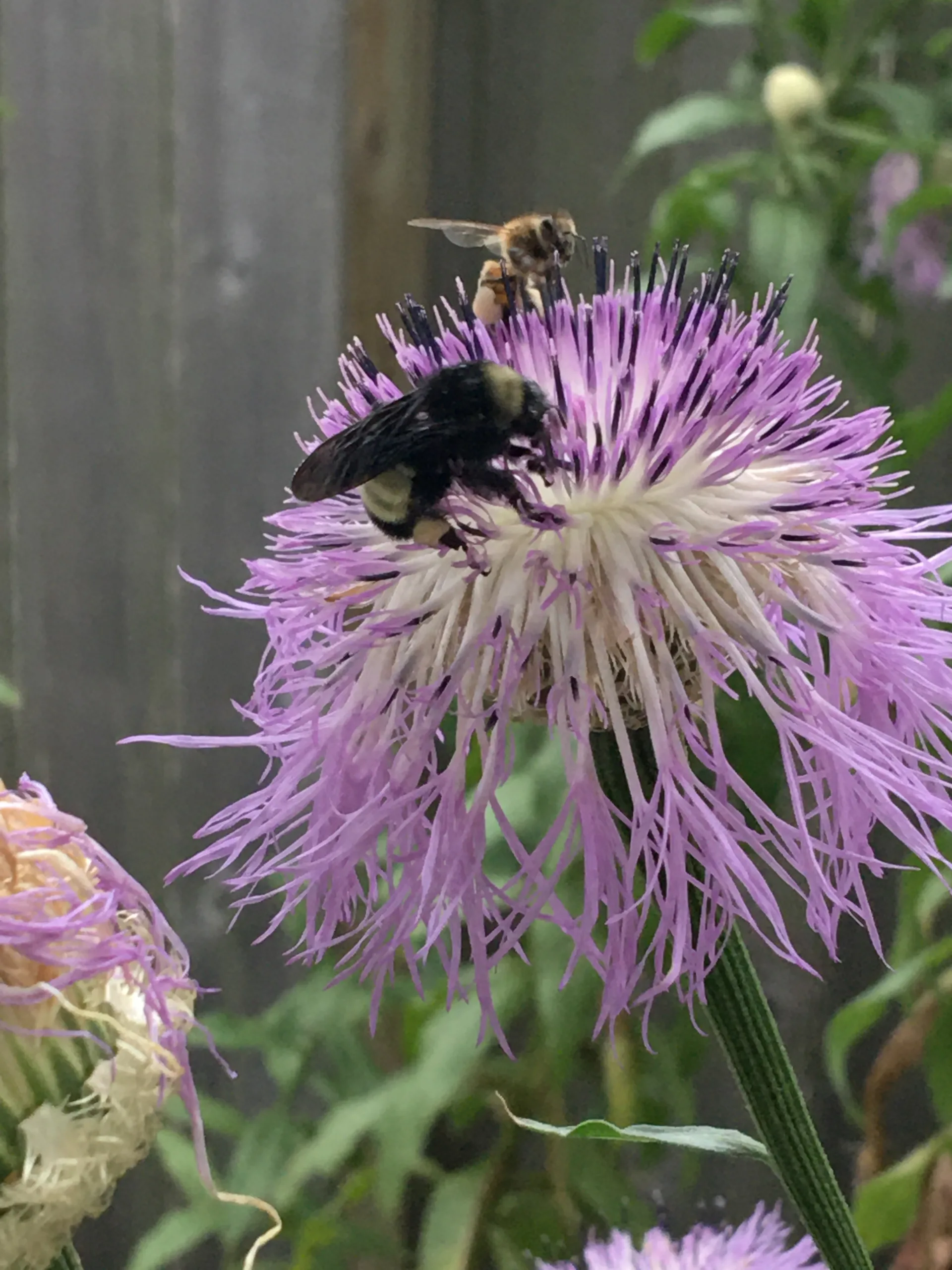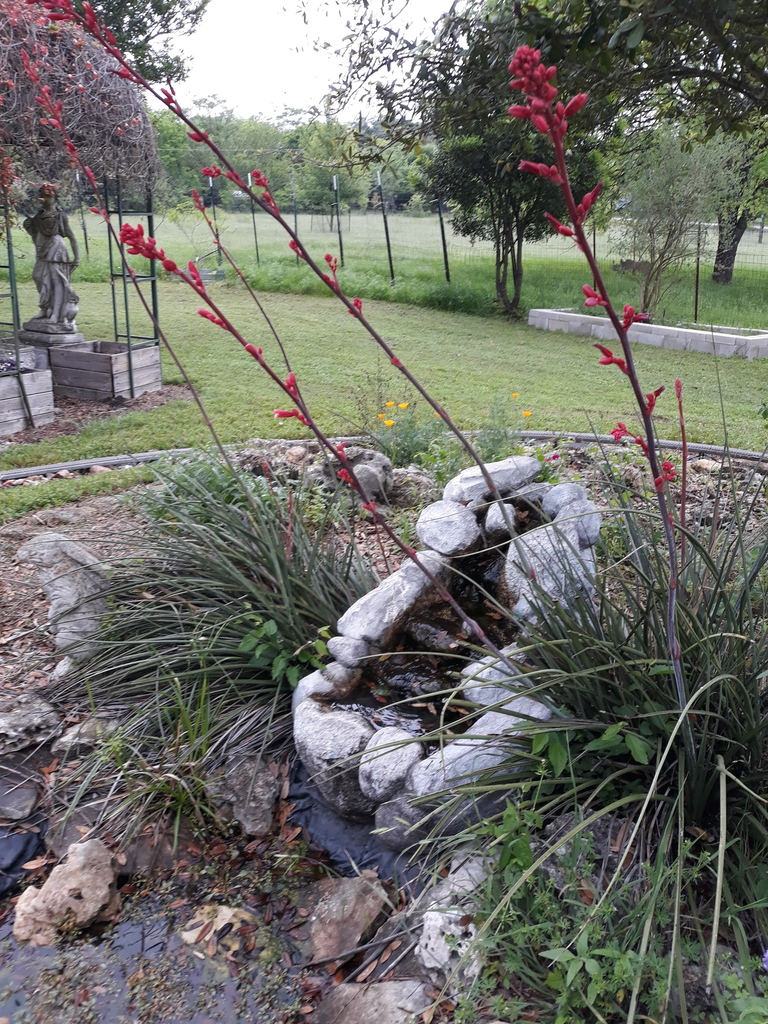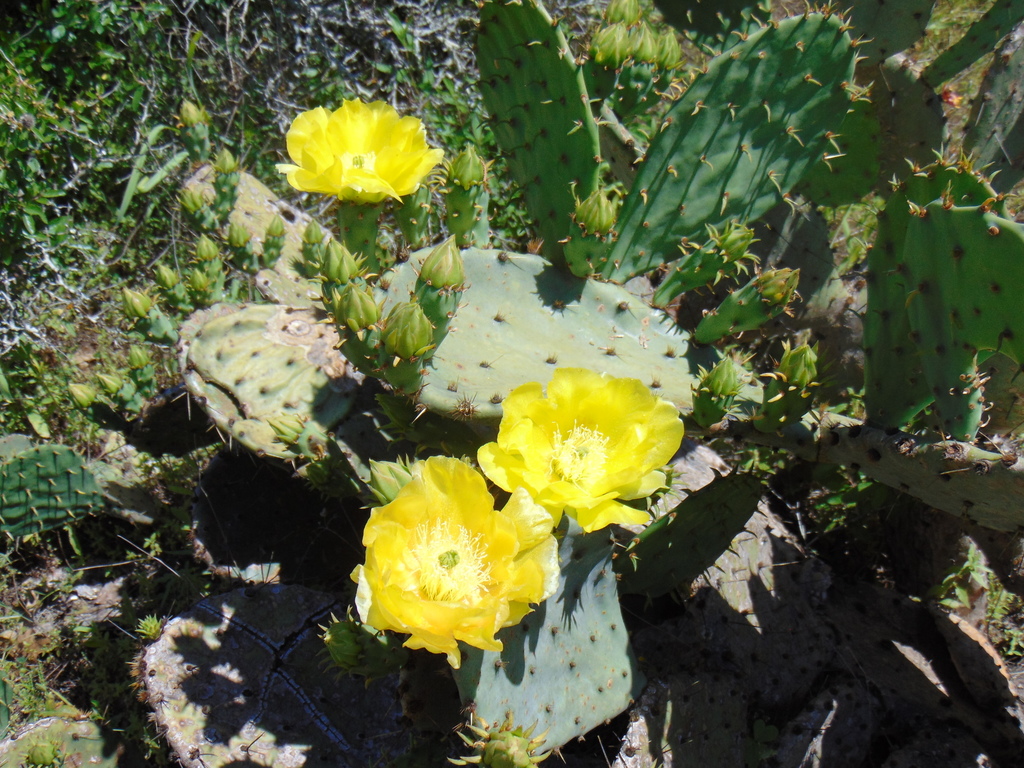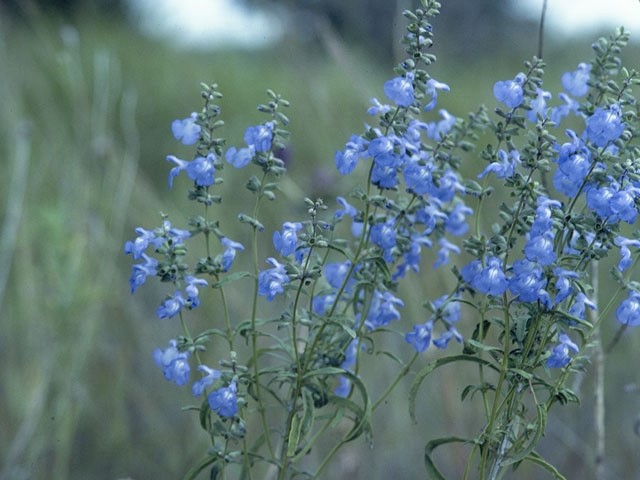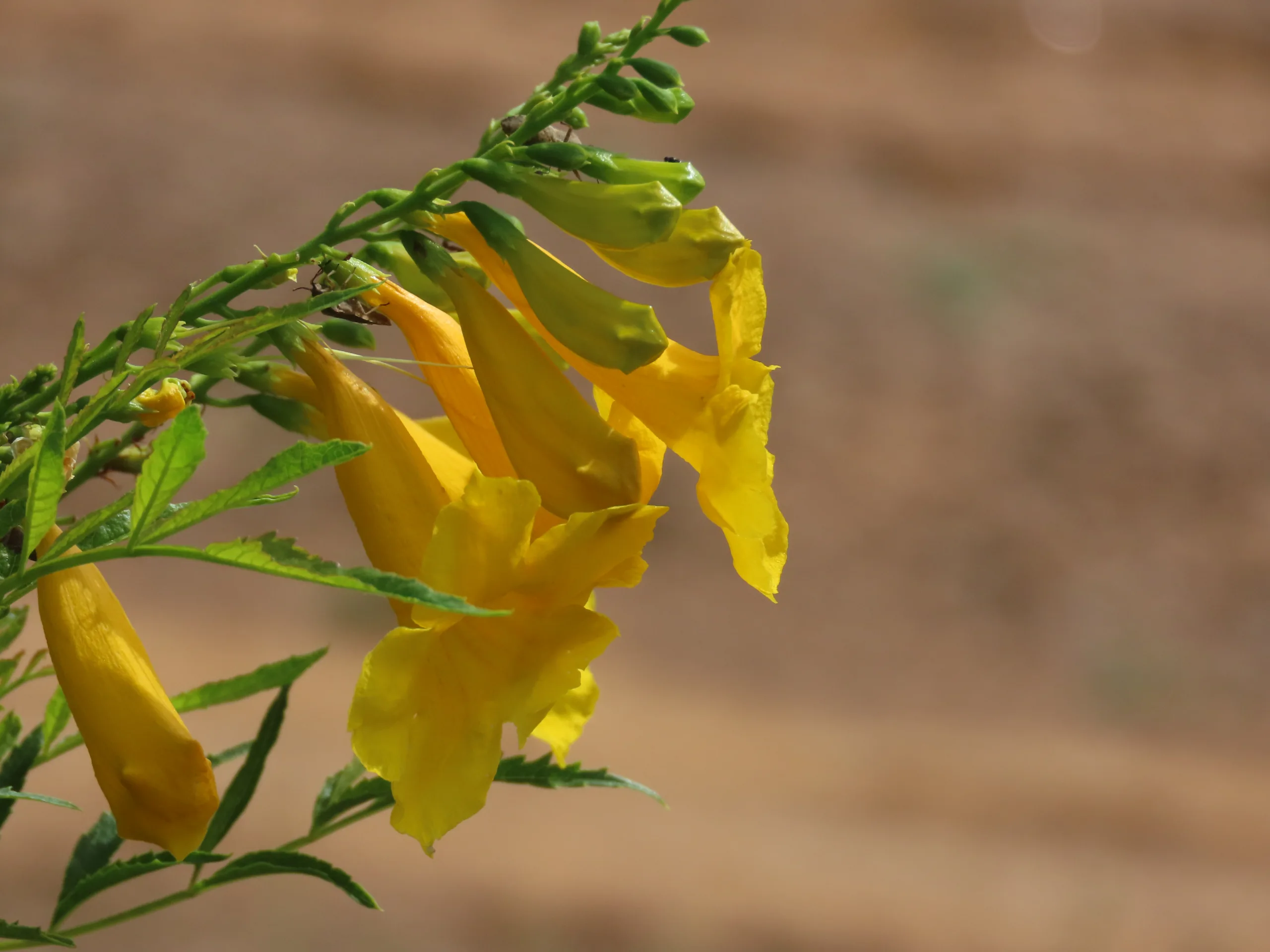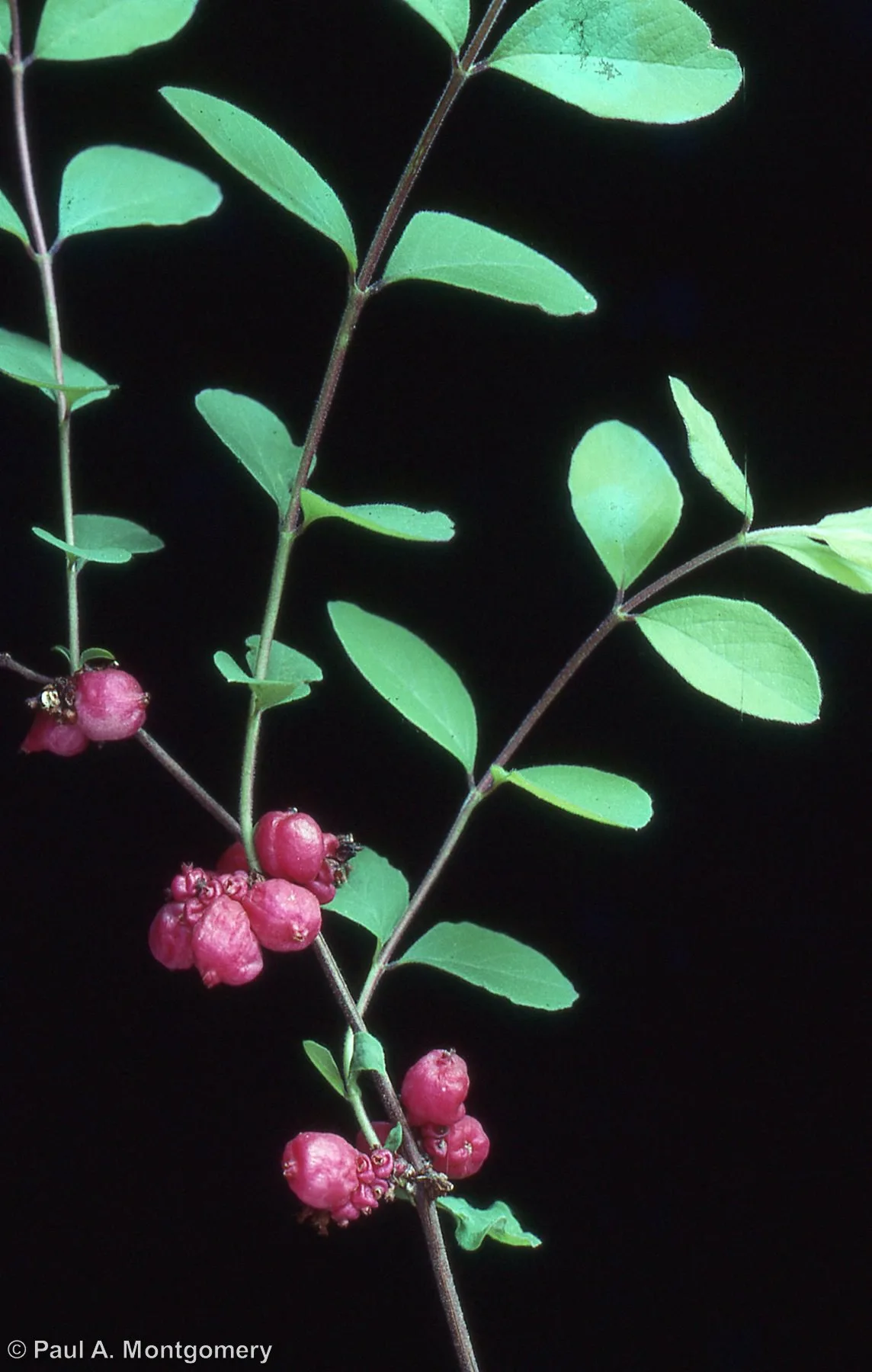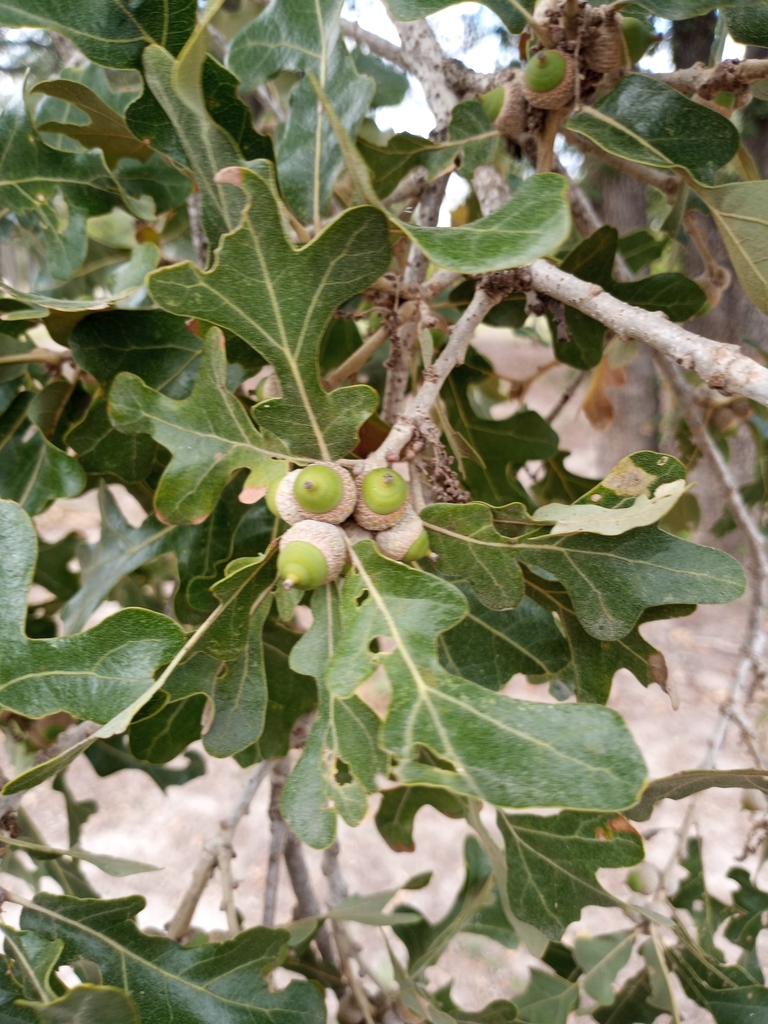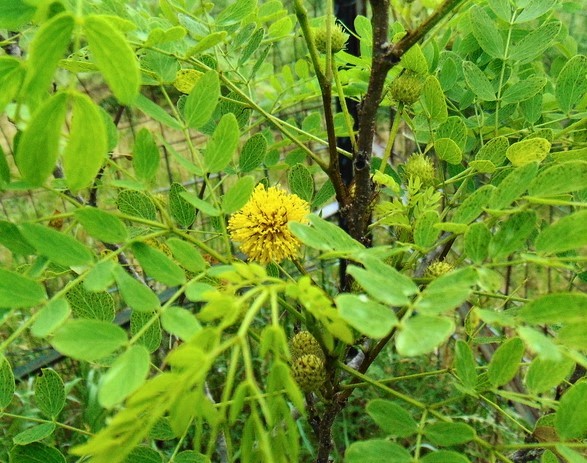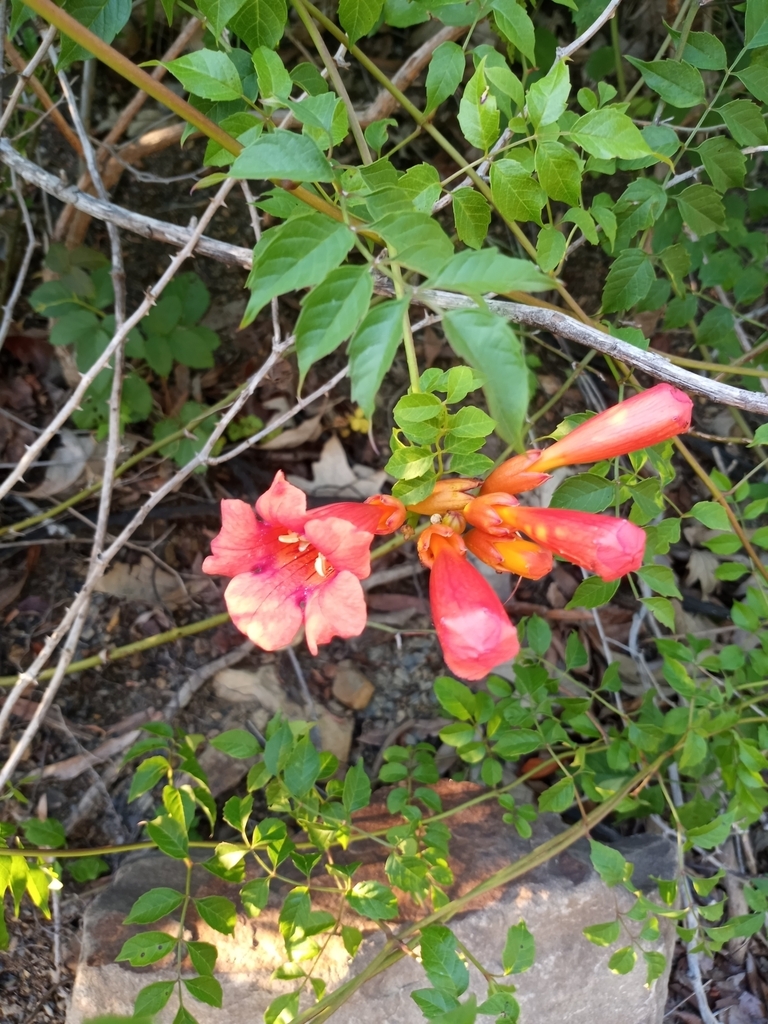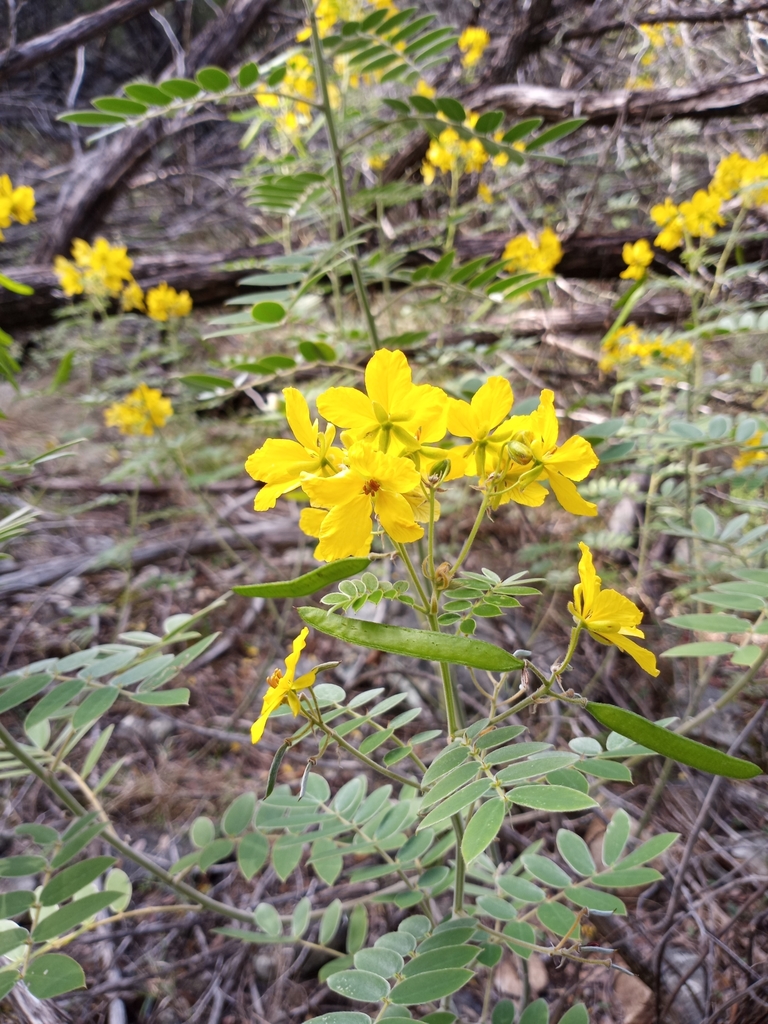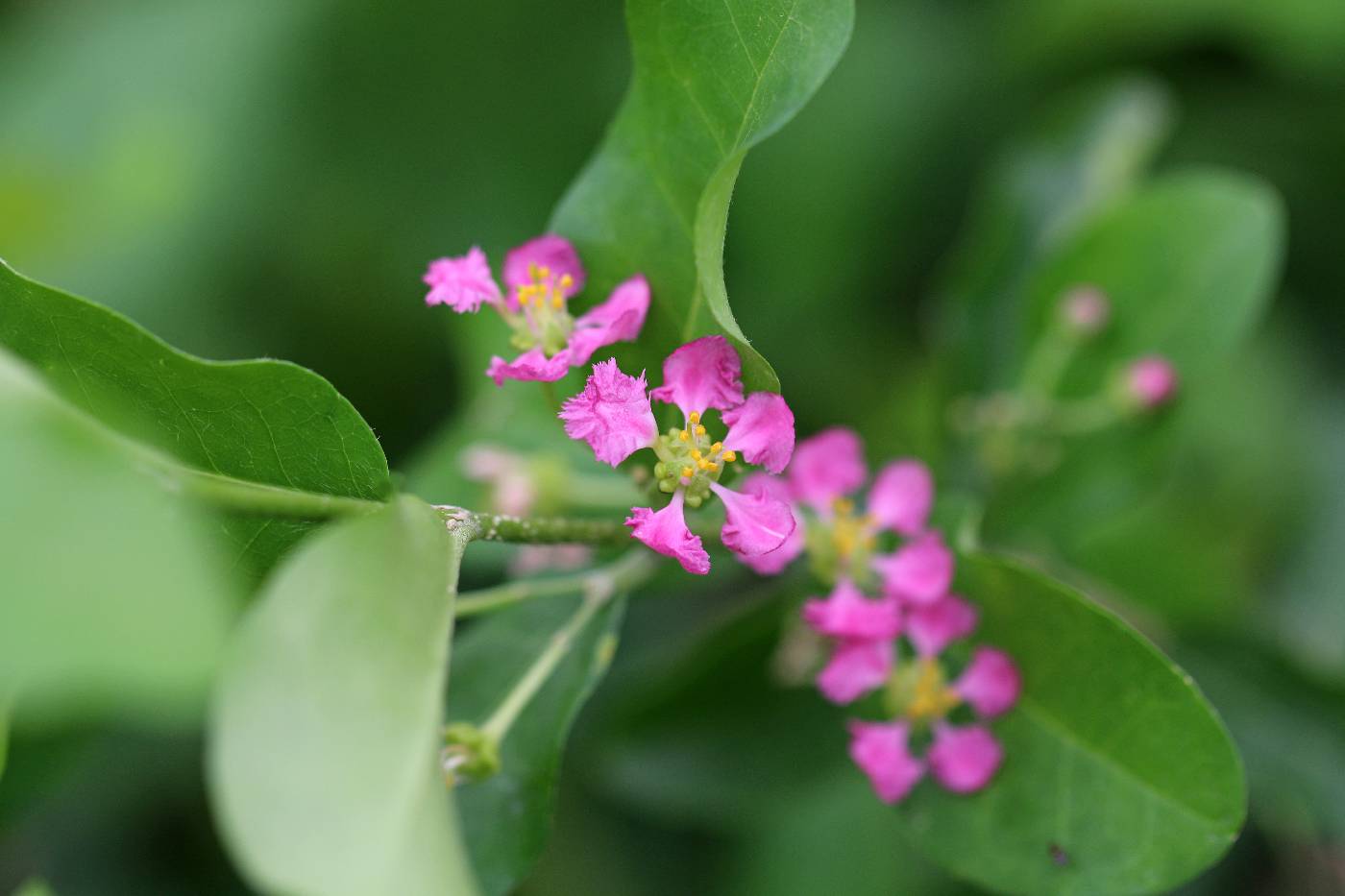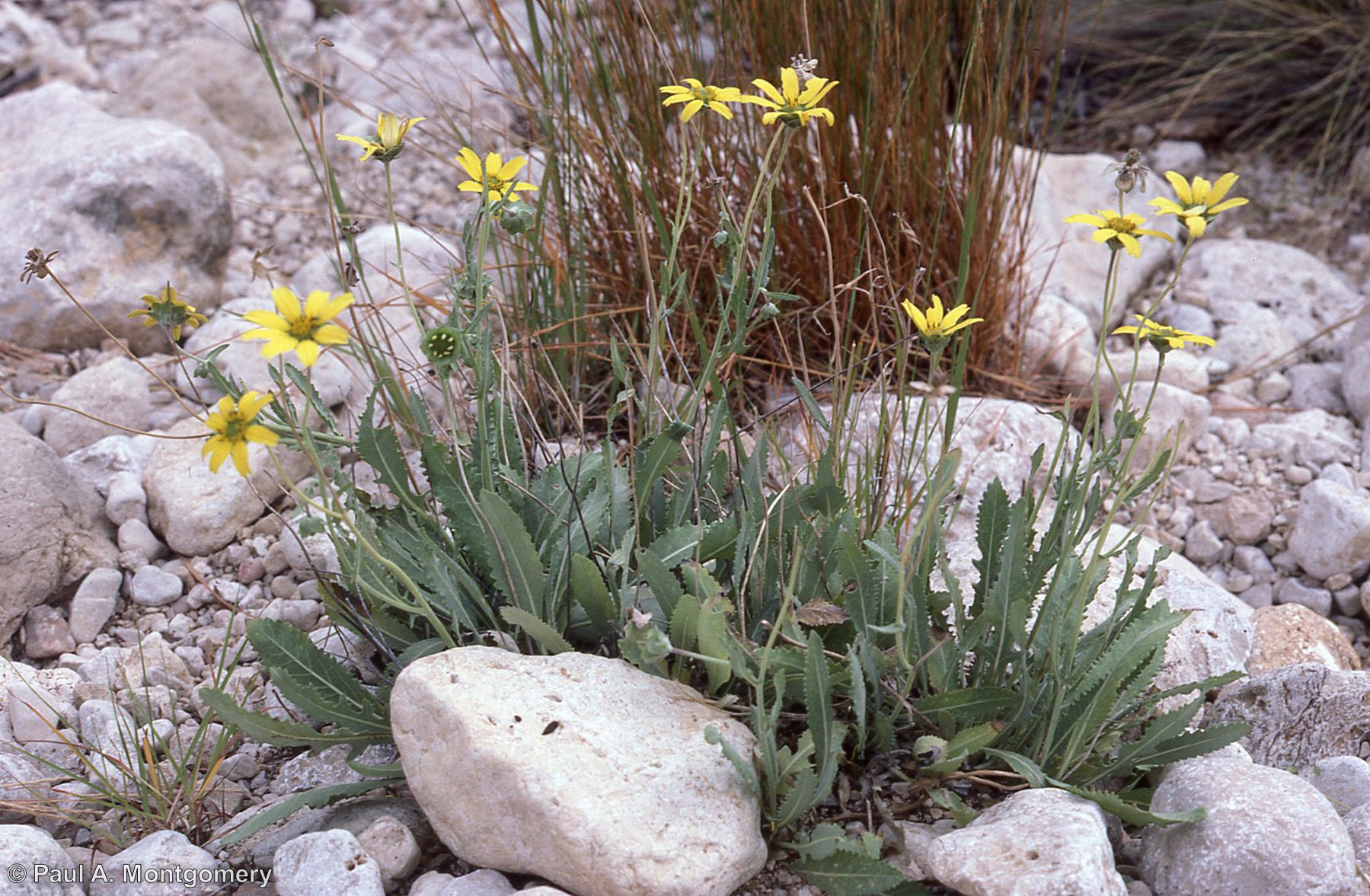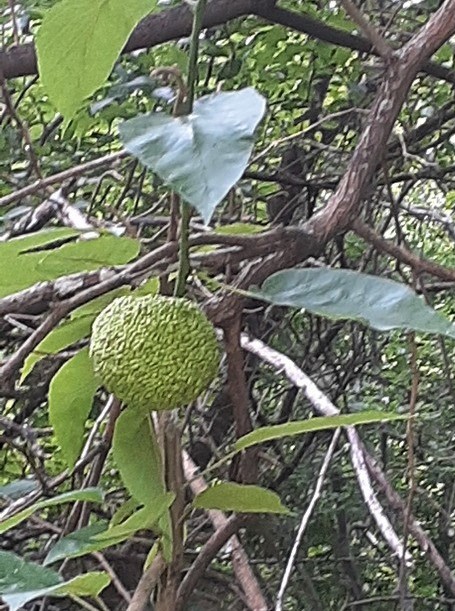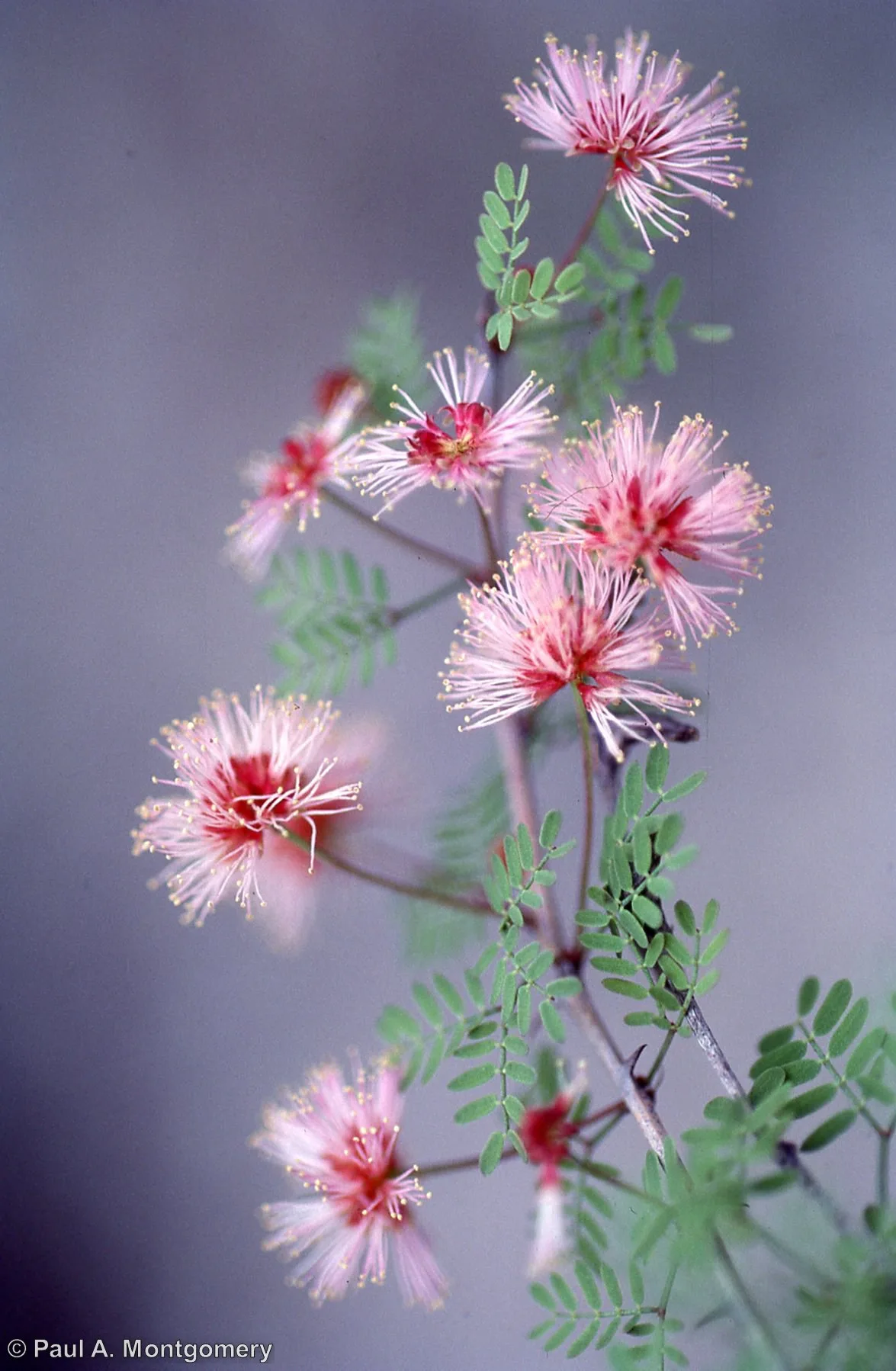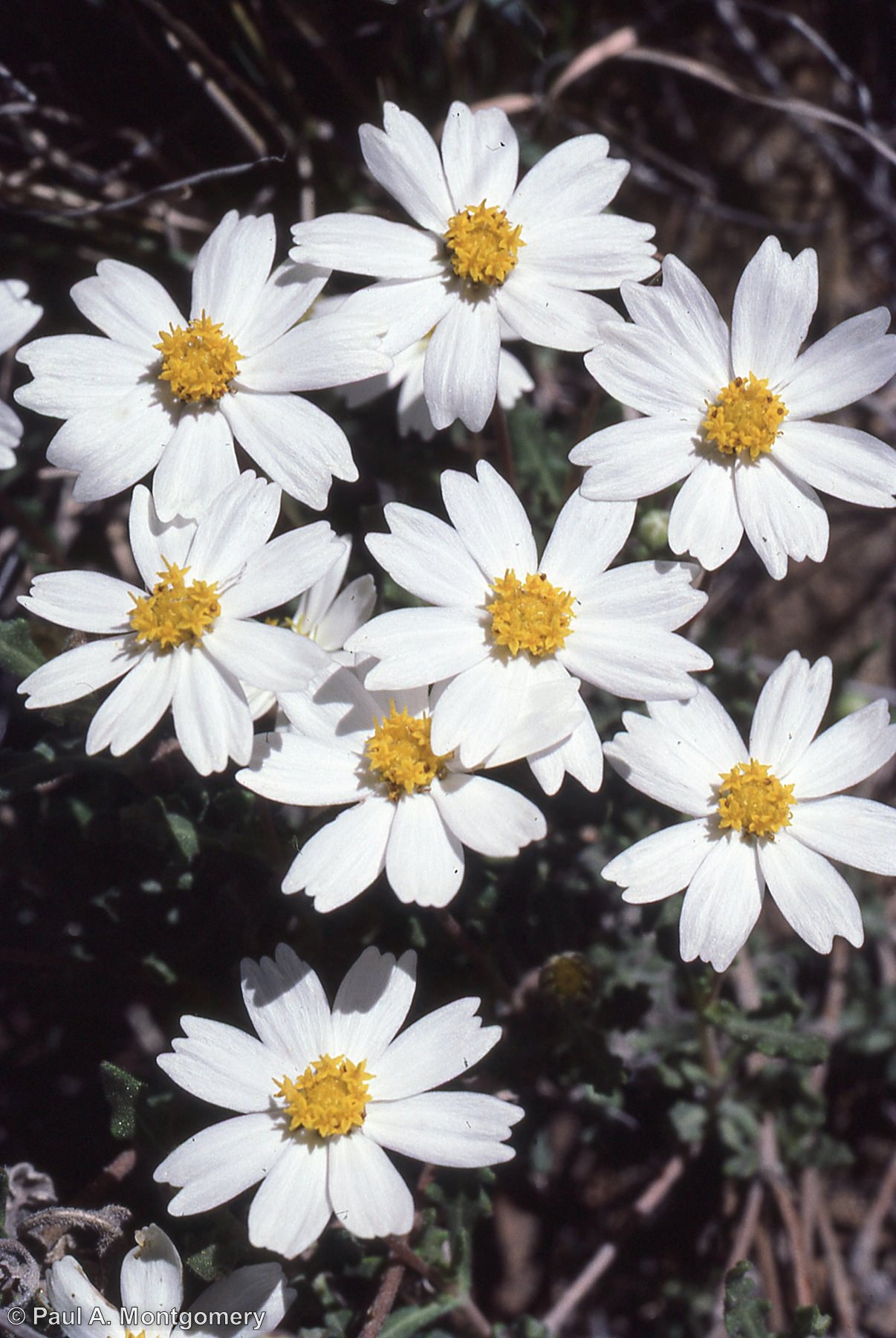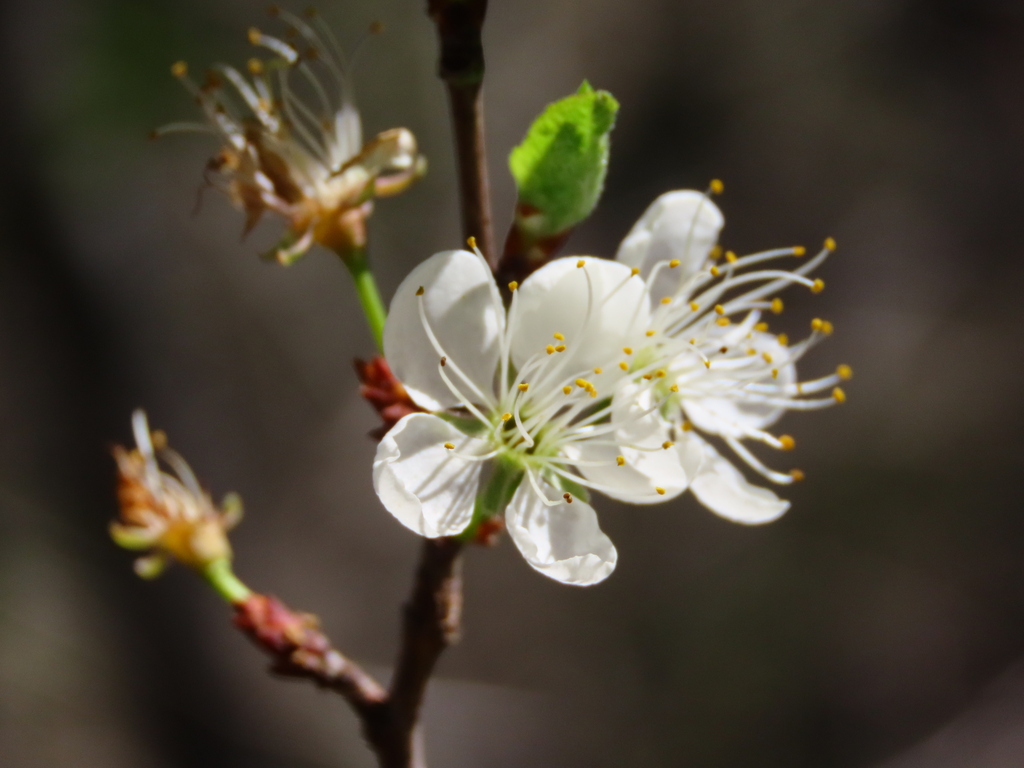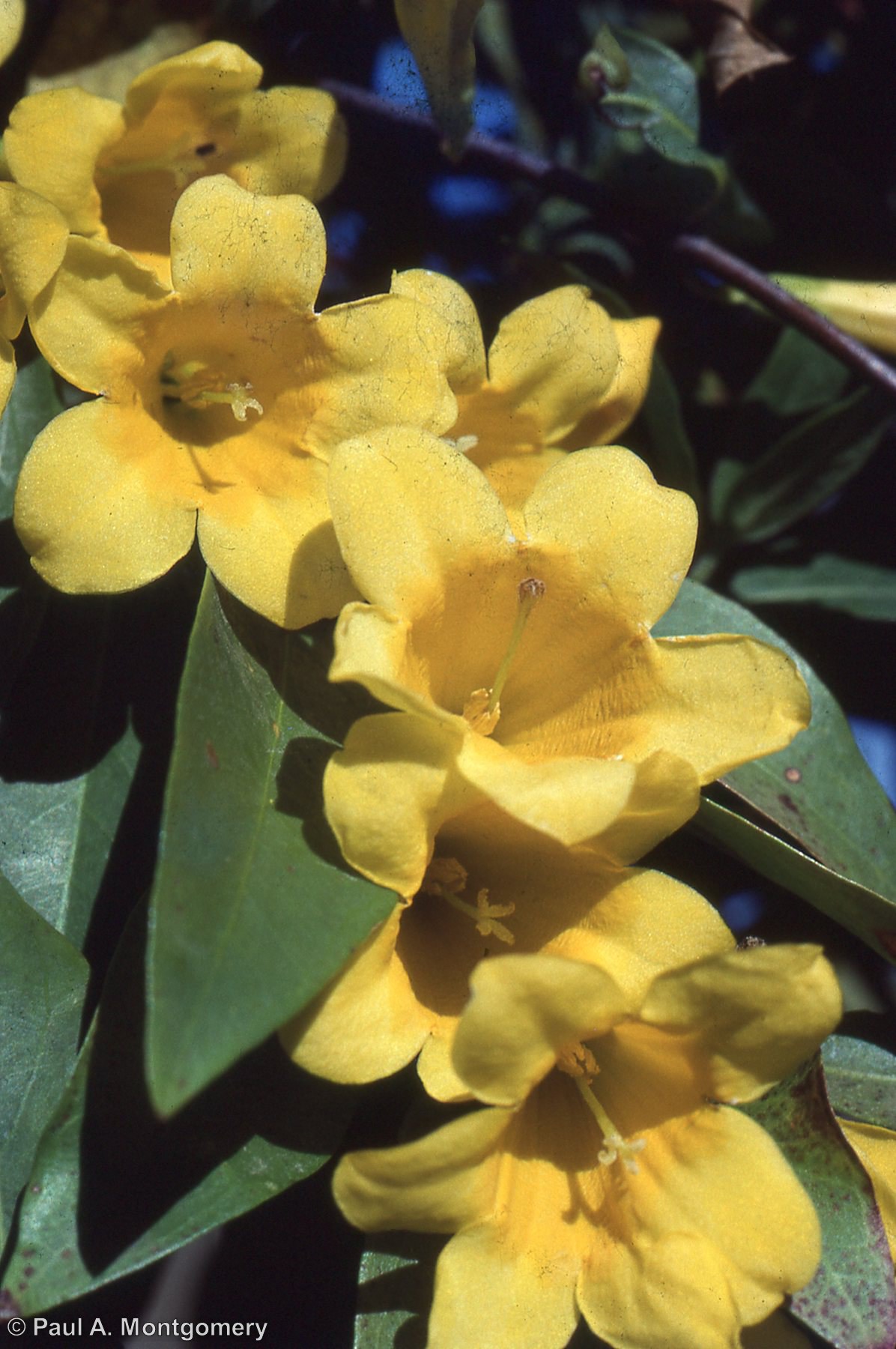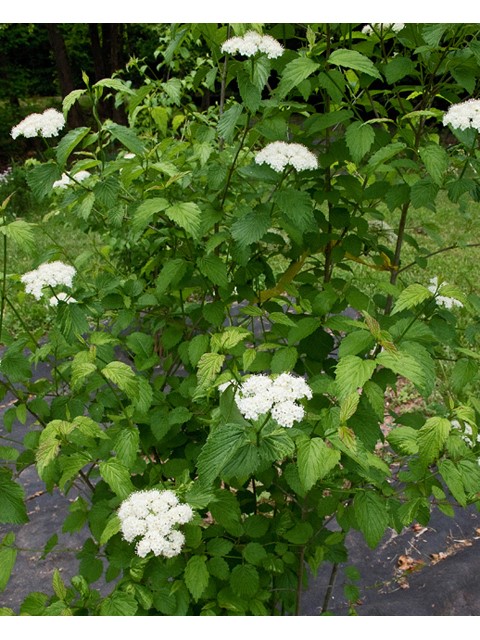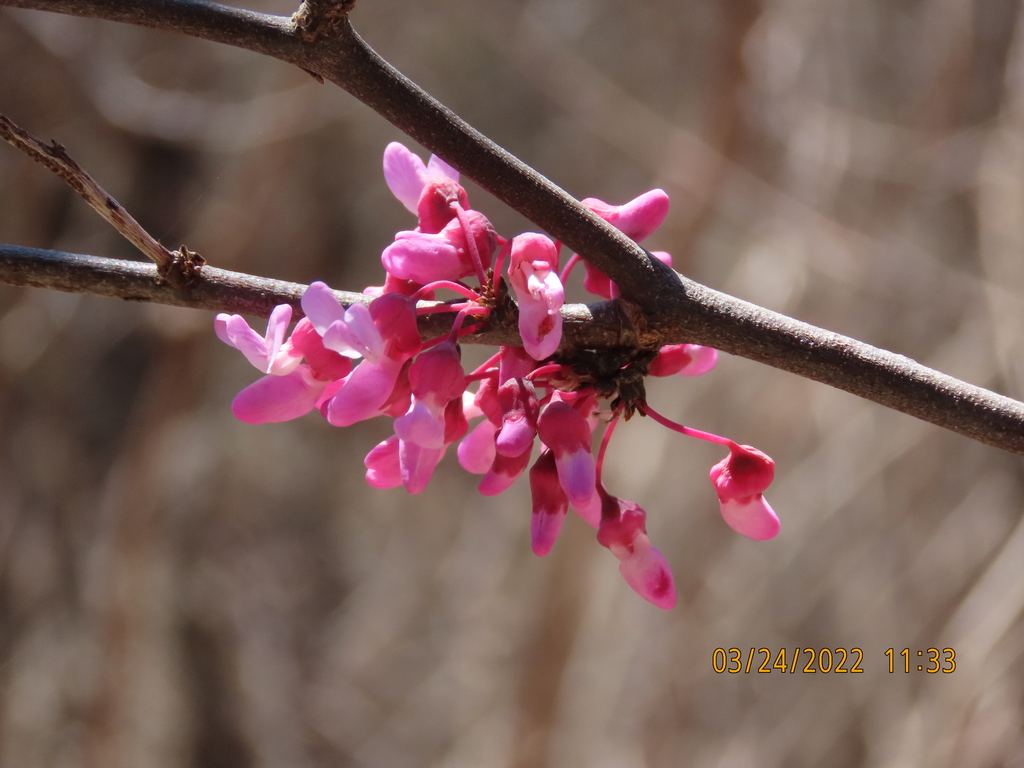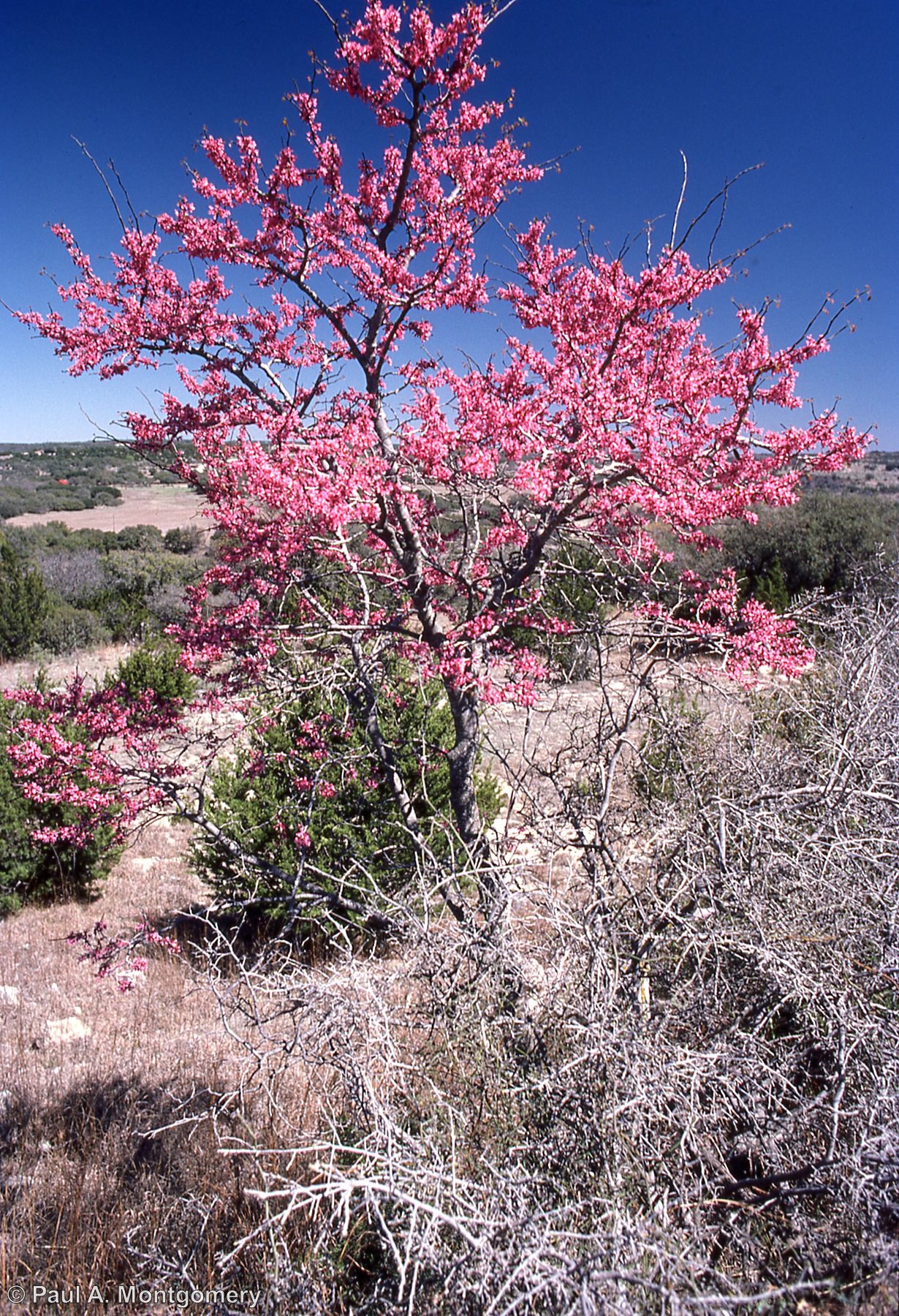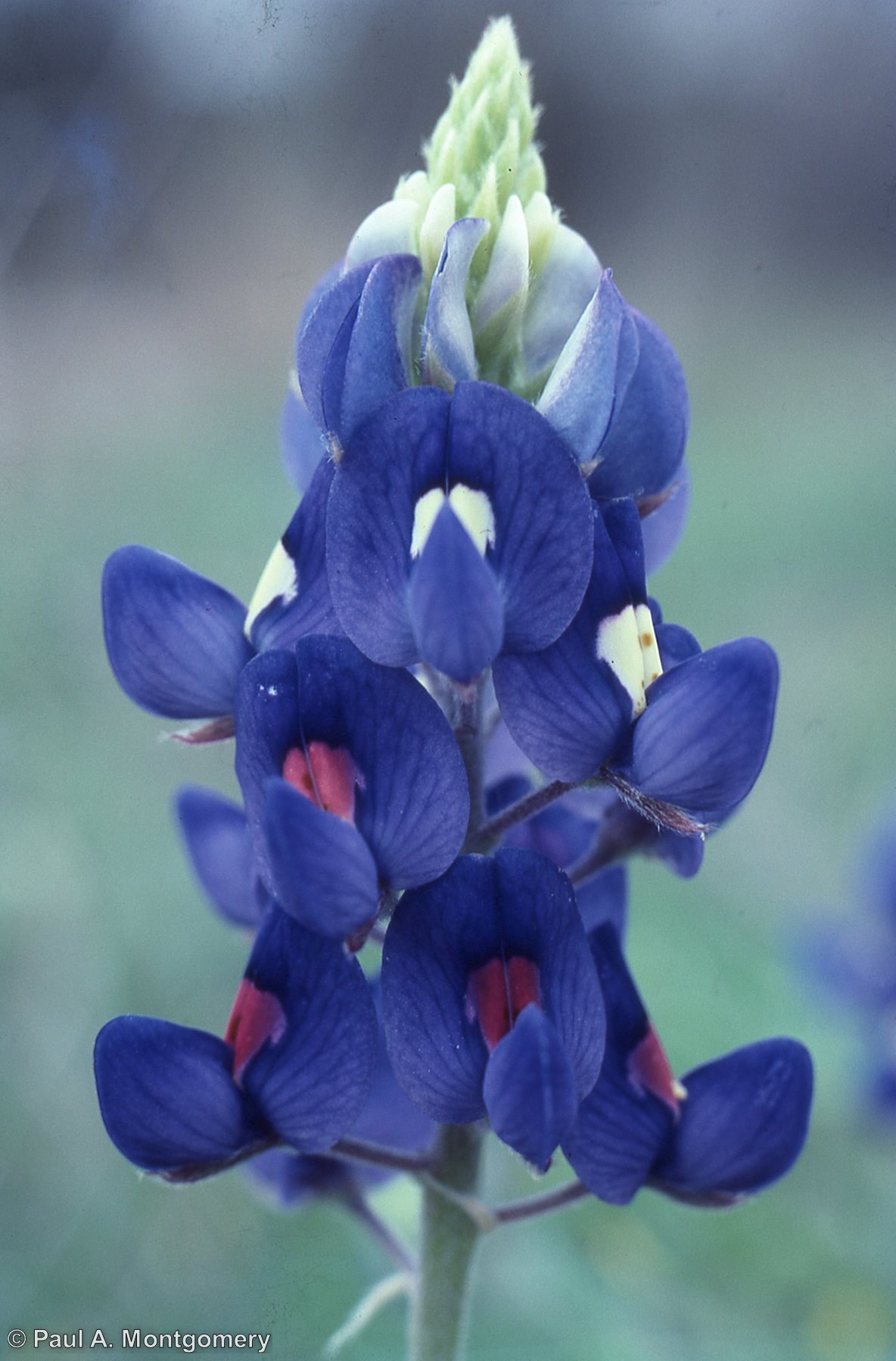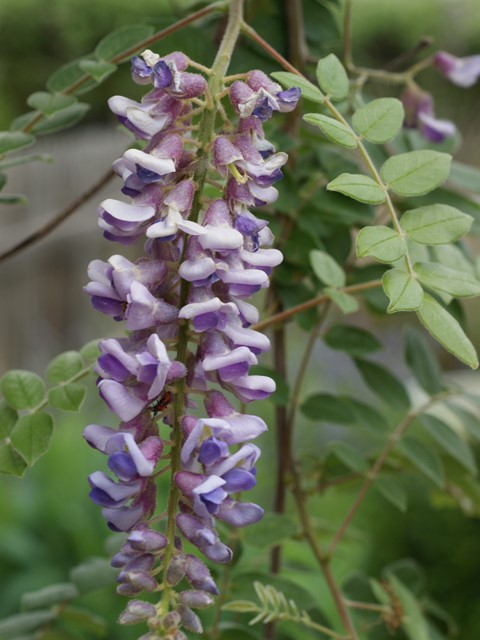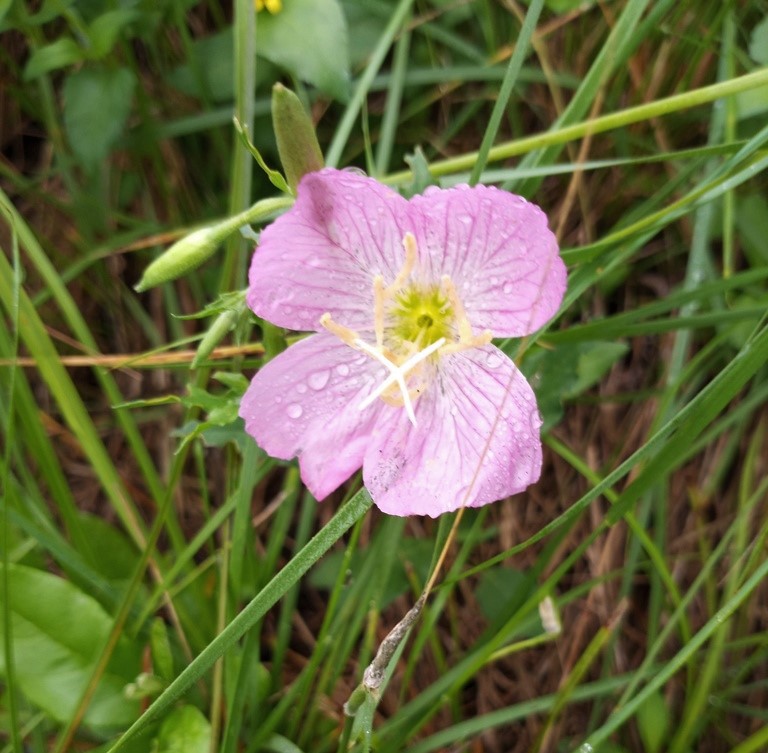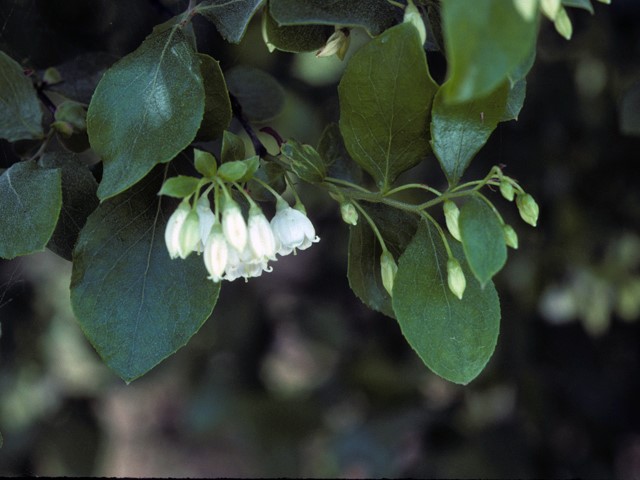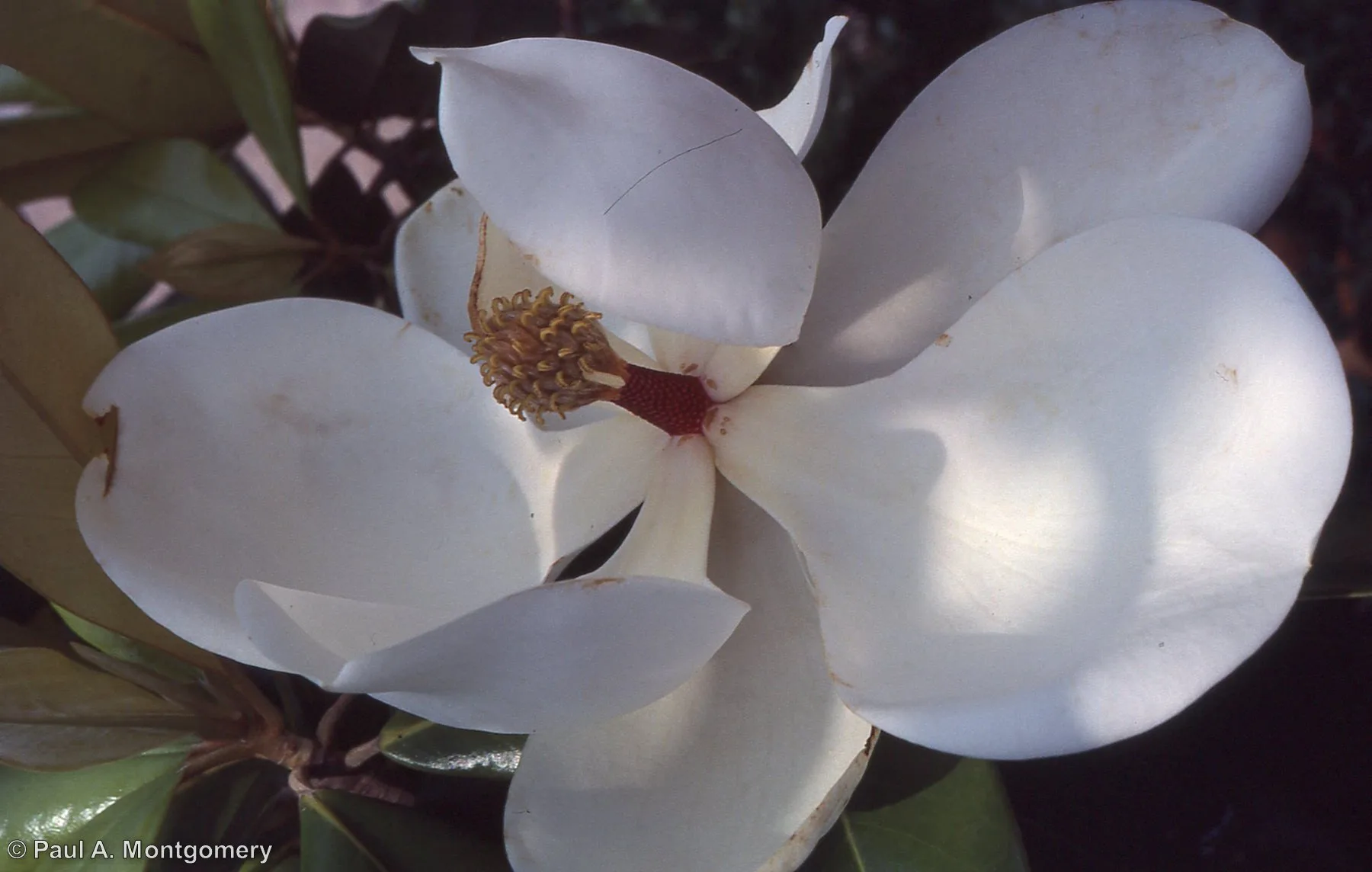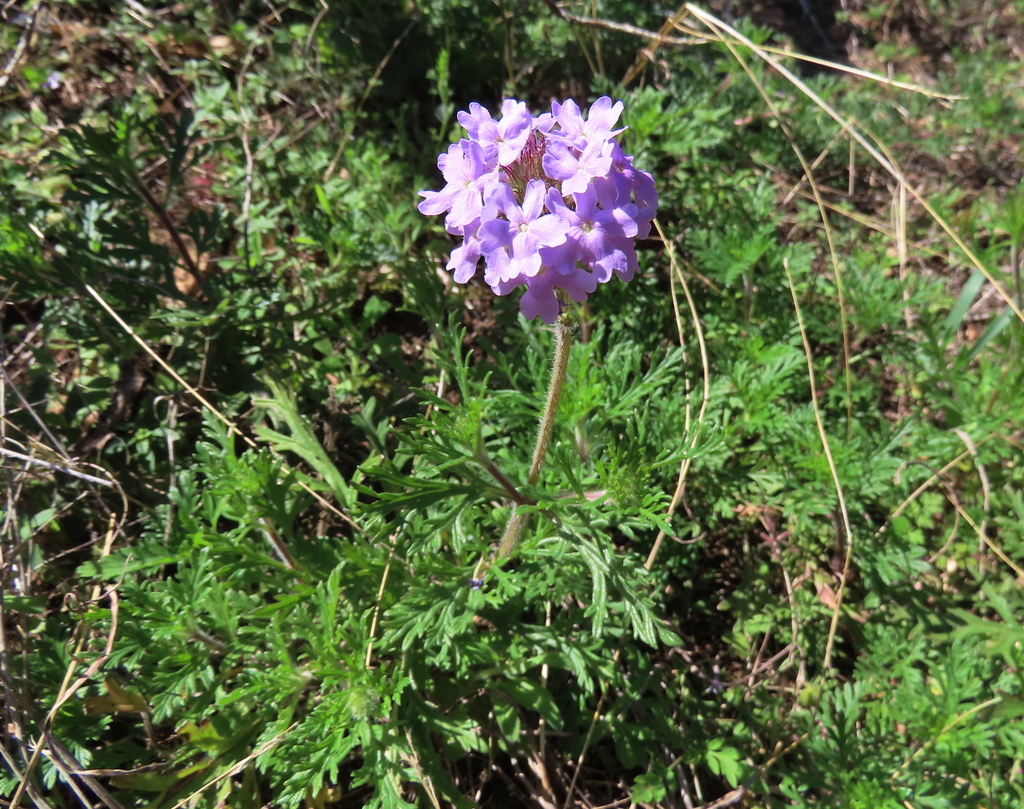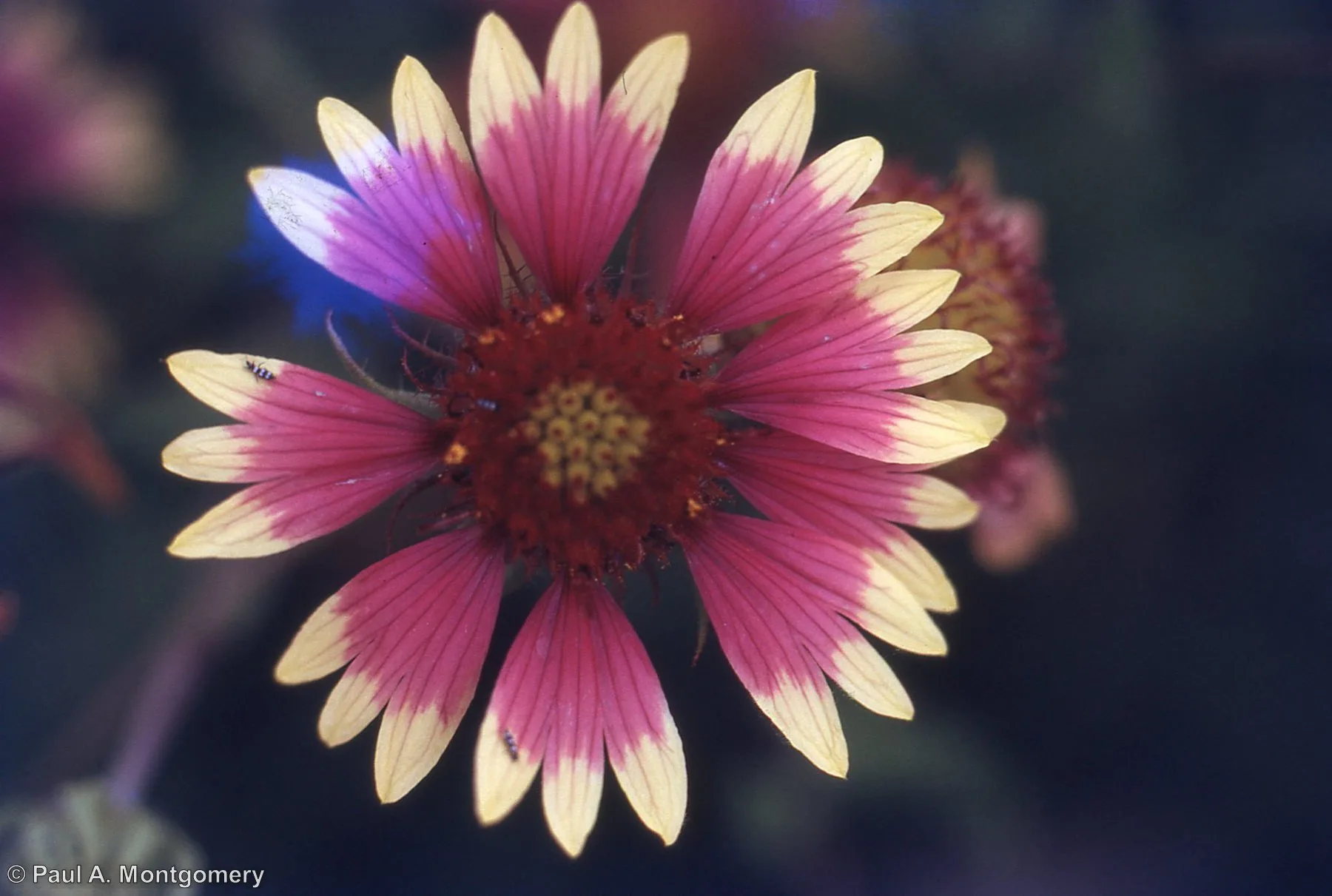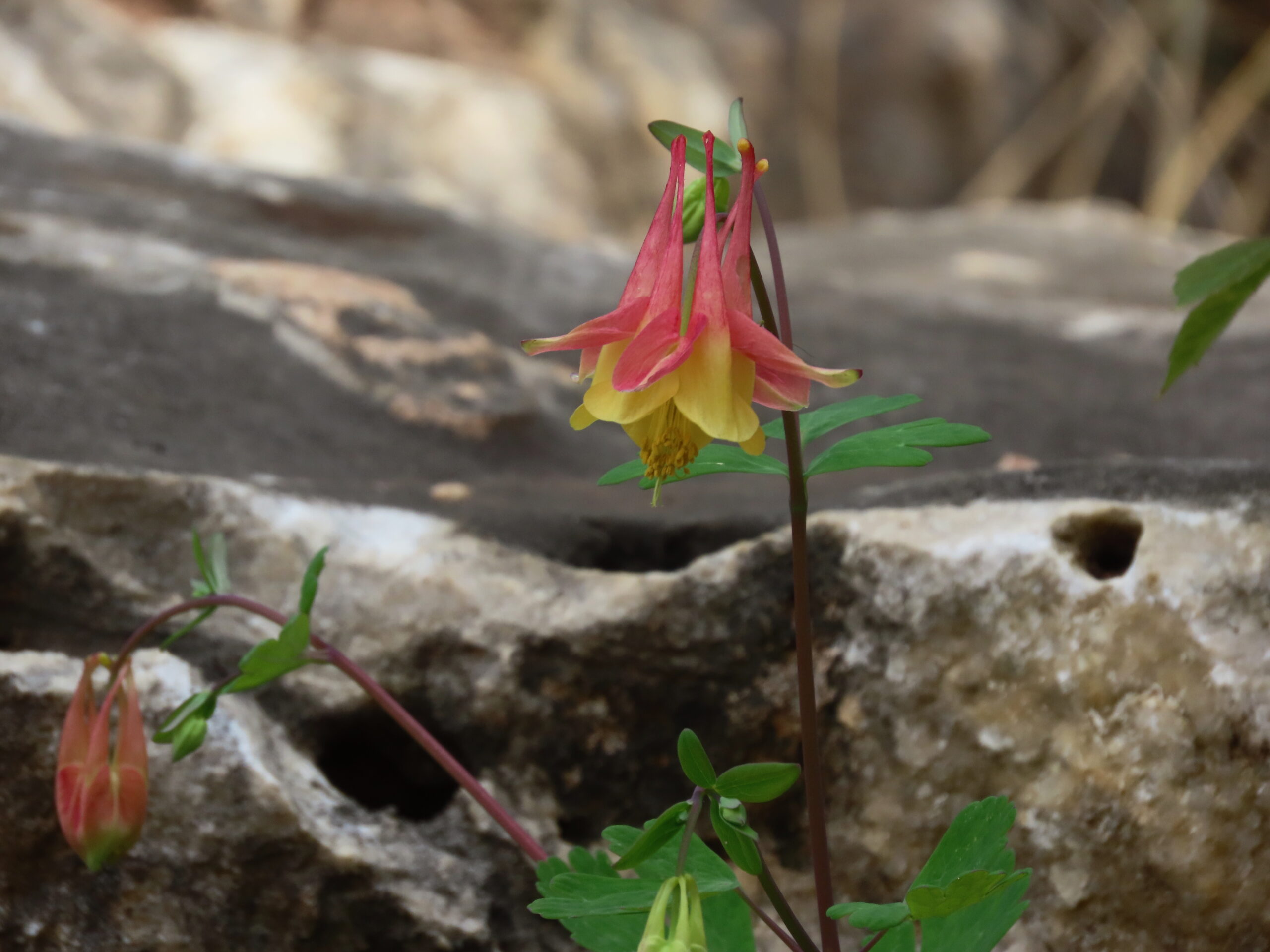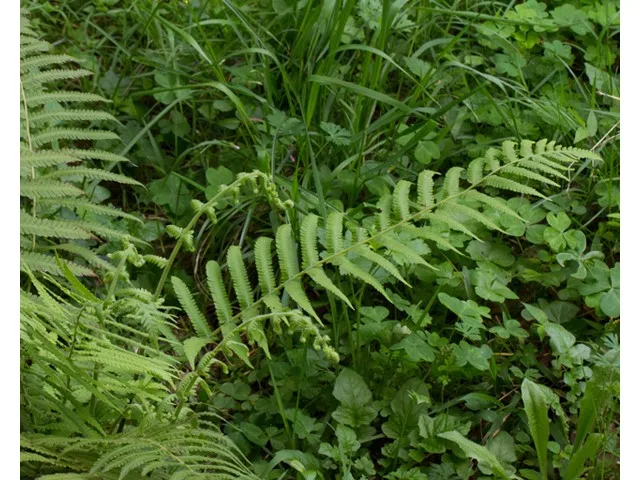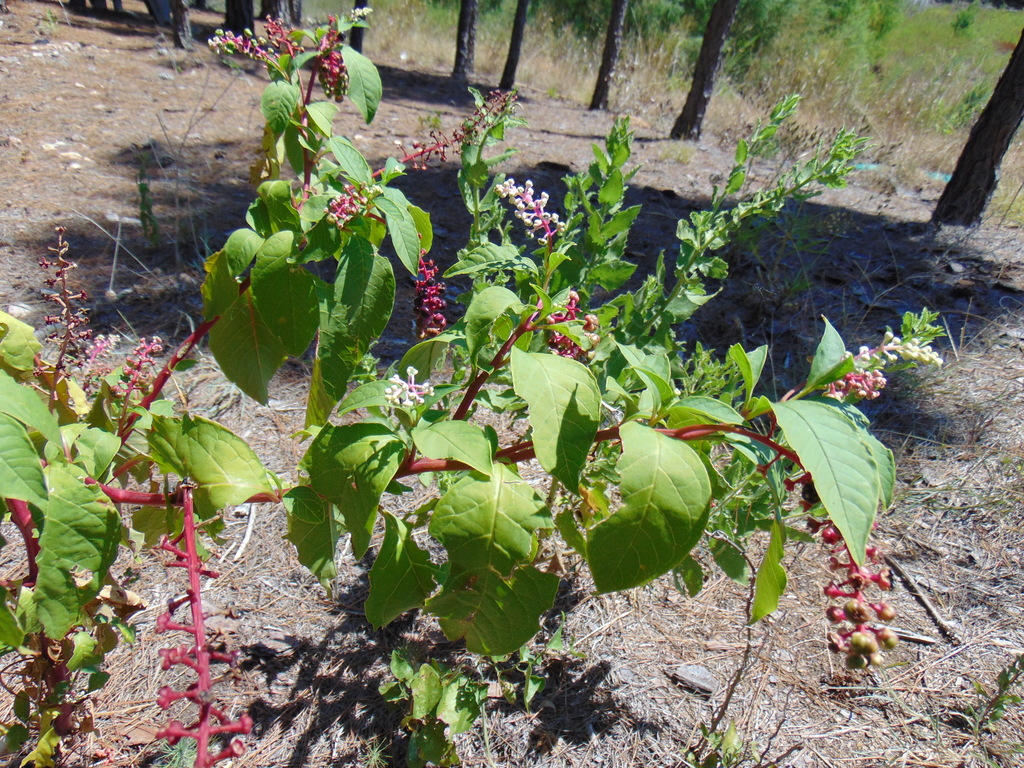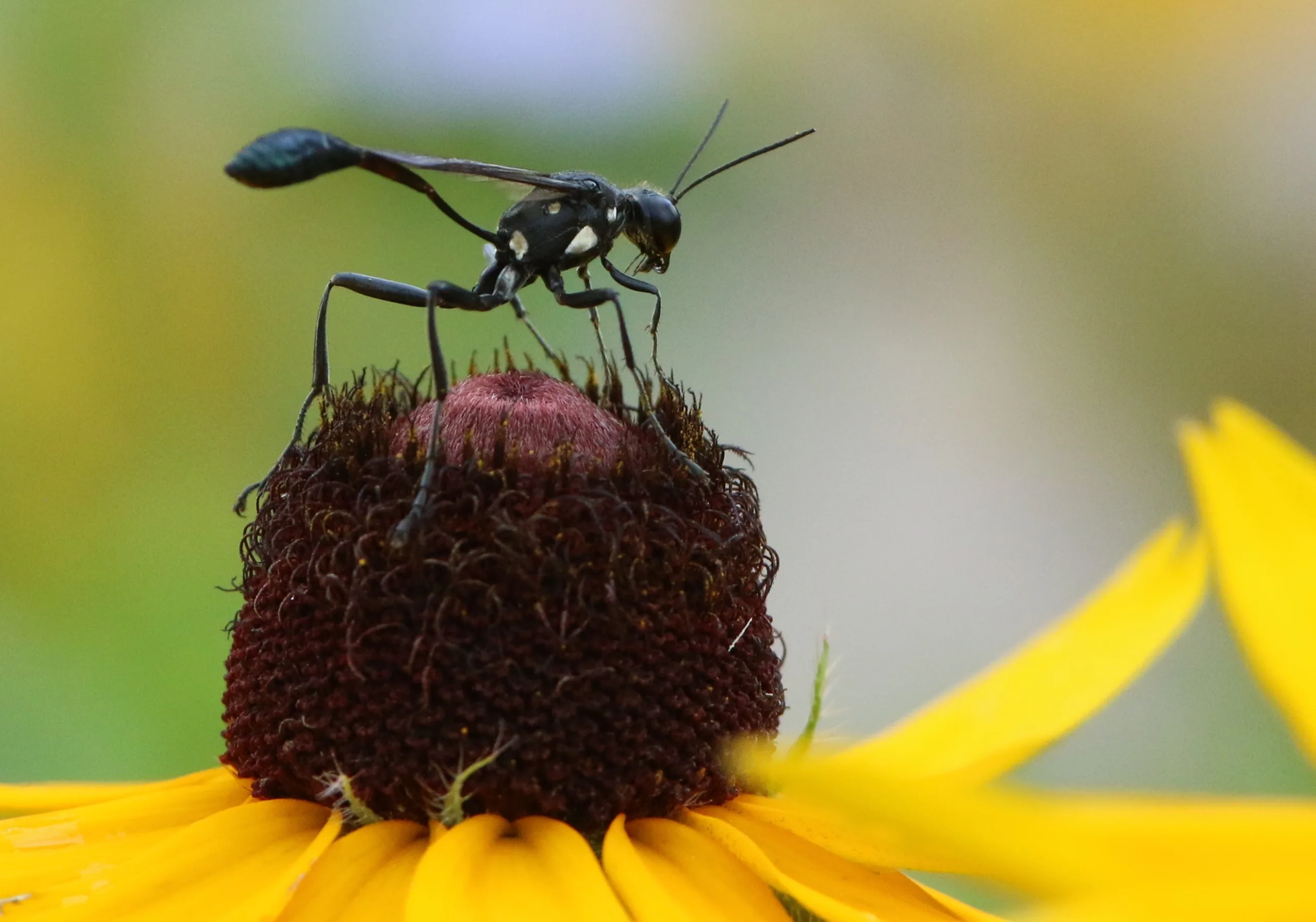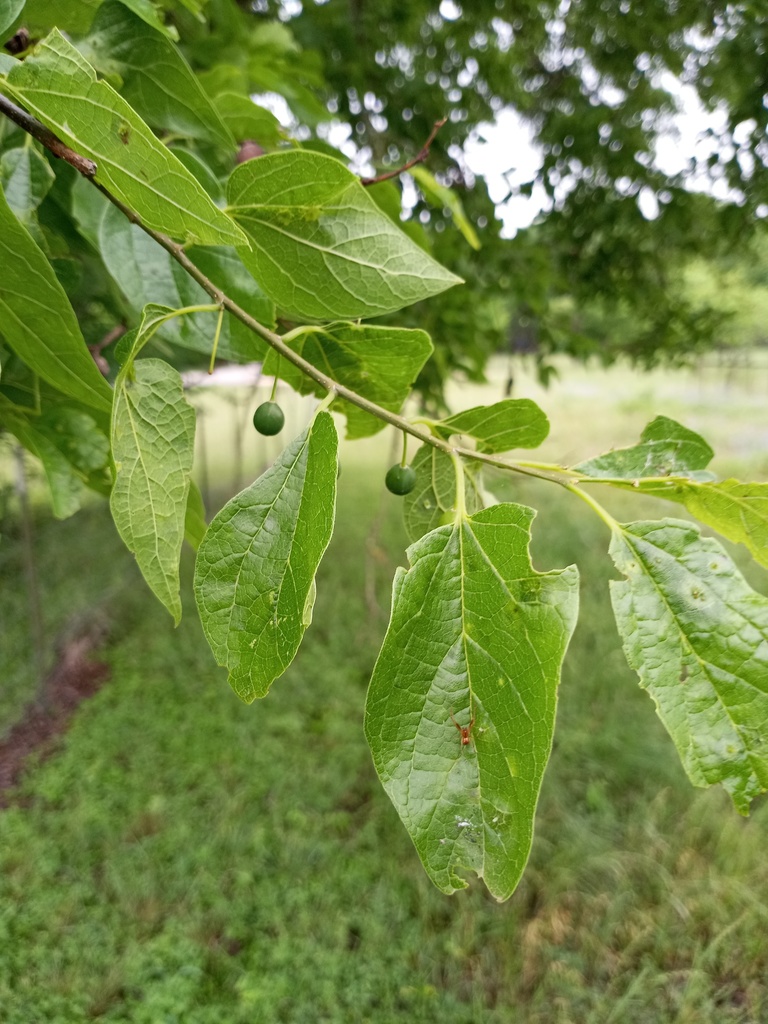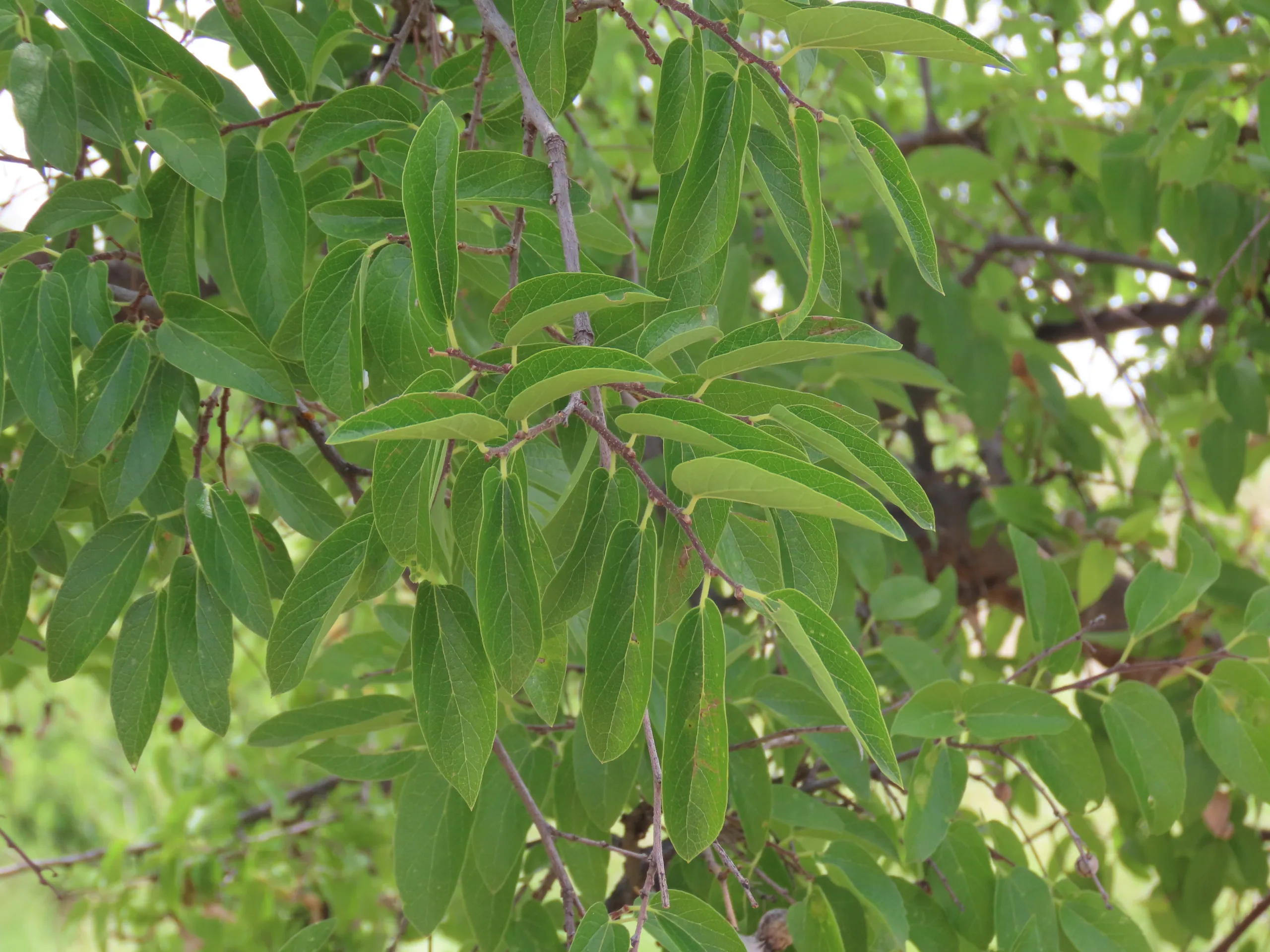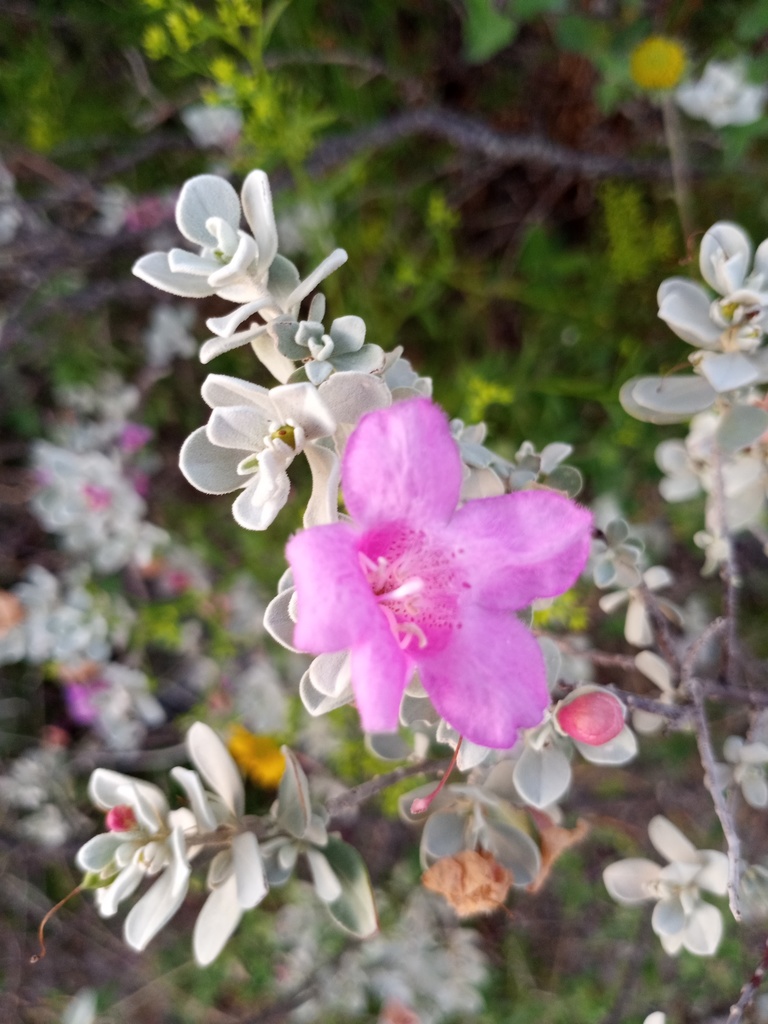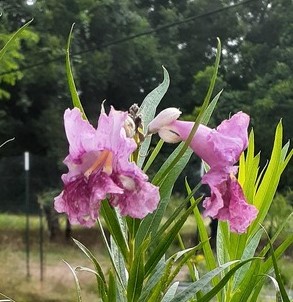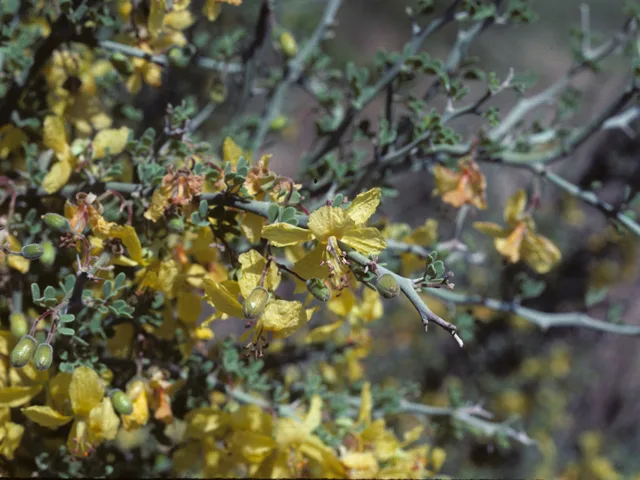| Date | Common Name | Scientific Name | Description | |
|---|---|---|---|---|
| 2022-03-22 |
| Mountain or Carolina Silverbell | Halesia diptera | The Carolina silverbell tree is just starting to bloom. There are two types of silverbell trees available in the area. This one is Halesia tetraptera, the Mountain or Carolina silverbell that has a seed pod with four sides. The other is Halesia diptera, the two-winged silverbell, so named because its seed pod has two "wings." To my knowledge we won't have it for sale at the plant sale, but I did see the two-winged variety at Nature's Way Resources yesterday. Either tree is an asset to your garden. |
| 2022-03-18 |
| Lanceleaf Coreopsis | Coreopsis lanceolata | Very soon we will be seeing fields of yellow wildflowers along the sides of the roads. Many of them will be Lanceleaf Coreopsis, Coreopsis lanceolata. In a twist of fate, it has been introduced to Japan and China where it is listed as an invasive species. Usually plant problems travel in the other direction. Fortunately for us it is supposed to be in Texas. |
| 2022-03-15 |
| Pink Muhly | Muhlenbergia capillaris | If you're thinking about adding some ornamental grasses to your landscape, Pink muhly, Muhlenbergia capillaris, is a stunning addition. It's able to adapt to both clay and sandy soils and is easy to care for. It will be available at the Pines and Prairies plant sale on April 20 at New World Botanical in Montgomery. |
| 2022-03-11 |  | Texas Betony | Stachys coccinea | Texas betony, Stachys coccinea, appears to be a more popular landscape plant in more arid regions of the state but it will grow here. I have a plant that has been growing in my garden for about 10 years despite having to fight off deer, rabbits and competition from other plants. It is a member of the mint family and therefore easy to grow from cuttings. |
| 2022-03-04 |
| Coral Honeysuckle | Lonicera sempervirens | Coral Honeysuckle (Lonicera sempervirens) can be grown on a trellis. However, one of the articles I read about the plant says it is a high fire risk and should not be planted this close to a house. Keep that in mind should you want to grow it like this. It is a beautiful plant and beneficial to a variety of animals and insects. It will be available at the Pines and Prairies spring plant sale. |
| 2022-02-25 |
| Gulf Coast Penstamon | Penstemon tenuis | Today's plant goes by many common names, Brazos Penstemon, Gulf Coast Beardtongue and Sharp-sepal Beardtongue being just a few. For our purposes we are going to call Penstemon tenuis, Gulf Coast Penstemon. It will be available at our next plant sale. There are quite a few informative articles about it on the internet, but I liked this blog by an Austin gardener who talks about how she uses it in her garden. |
| 2022-02-18 |
| Flame Acanthus | Anisacanthus quadrifidus var. wrightii | This week we're back to native plants that do well in the landscape. For many reasons Flame Acanthus, anisacanthus quadrifidus var. wrightii is a superstar. It is deer resistant, heat tolerant, drought tolerant and is covered in beautiful red flowers most of the summer that attract butterflies and hummingbirds. Here's what the Lady Bird Johnson Wildflower Center web site has to say about it. |
| 2022-02-11 |
| Wright's Skullcap | Scutellaria wrightii | Wright's Skullcap, Scutellaria wrightii, is found mostly in the Edwards Plateau area. However, it looks like we could grow it here under the right conditions. One article I read said that it has "minimal" deer resistance, so it's probably not for a lot of us. |
| 2022-02-04 |
| Blue-eyed Grass | Sisyrinchium angustifolium | At first glance it may appear I'm repeating last week's plant, the small bluets but this is Blue-eyed grass, Sisyrinchium angustifolium. Notice the flowers have six petals, not four. Although the narrow leaves make it look like a grass it is actually a member of the iris family. Unfortunately the web site I'm sending you to has lots of pop-up ads but it is the most informative one I could find. Here's hoping it warms up soon and we can return outdoors to enjoy our native plants. |
| 2022-01-31 |  | Small Bluet | Houstonia pusilla | This is another one of those little wildflowers that bloom in the spring that is easily overlooked--the Small Bluet, Houstonia pusilla. Ironically not all bluets are blue. Some are white but they are all small. In keeping with their small size there isn't a lot known about their benefits to wildlife but they are cute. Here's the article I found with the best information. It comes from Illinois so the plant obviously has wide distribution. |
| 2021-10-22 |
| Blue Mistflower | Conoclinium coelestinum | The blue mistflower in my garden is covered in flowers and pollinators. The botanical name is Conoclinium coelestinum. It can get pretty aggressive so plant it where you don't mind it possibly taking over. |
| 2021-10-16 |
| Purple Aster | Symphyotrichum oblongifolium | In keeping with the theme of fall blooming plants we present to you Symphyotrichum oblongifolium. Excuse me if that isn't spelled exactly right. Purple aster is much easier. Attached is an article from the Central Texas Garden web site. If you have never seen their program on PBS I think it is worth watching. Unfortunately this Austin based organization has not made any new shows since the pandemic but the reruns are still being broadcast at 8:30 on Saturday morning. (set your recorder) |
| 2021-10-08 |
| Late Flowering Boneset | Eupatorium serotinum | Here is an amusing article about Late Flowering Boneset, Eupatorium serotinum. It's one of those important native plants that bloom in autumn and provide nectar and pollen when many other flowers have given up. |
| 2021-10-01 |
| Goldenrod | Solidago sp. | Goldenrod (Solidago sp.) gets a bad rap because it blooms at the same time as ragweed. People associate it wrongly with fall allergies. It isn't generally thought of as a landscape plant but it can be a nice blast of fall color at the back of a flower bed where you need something tall but not too bushy. It is host to a variety of butterflies and native bees and is deer resistant. |
| 2021-09-25 |
| Frostweed | Verbesina virginica | Verbesina virginica or as it is more commonly known frostweed is blooming right now. Its nectar is loved by Monarchs, Pipevine swallowtails and a variety of other butterflies. It gets its name from the odd ice formations that form on the stems when they burst during freezing weather. |
| 2021-09-16 | 
| Snow on the Prairie | Euphorbia bicolor | Euphorbia bicolor, commonly known as Snow on the Prairie is starting to bloom now. It is a member of the spurge family and has a milky white sap which can be toxic to livestock. For that reason it seems like it would be a good thing to grow if deer are a problem for you. |
| 2021-09-10 |
| Strawberry Bush or Hearts a'Busting | Euonymus americanus | I have always known Euonymus americanus as "strawberry bush." Doing research I discovered another common name I like, 'Hearts A'busting." Whatever you call it the name comes from the strawberry-like seed pods that open to reveal bright red seeds. It's a nice addition to a woodland bed, if you can protect it from deer. |
| 2021-09-04 |
| Pigeonberry | Rivina humilis | Rivina humilis or "Pigeonberry" is a great little plant for shady areas especially if you have resident deer that eat your garden. I have found it is a little tricky to get started if it isn't happy where you plant it but when you find the right spot it takes off and provides a very nice ground cover. |
| 2021-08-21 |
| Passion Flower | Passiflora sp. | There are 11 different species of passion flower native to Texas with even more common names for them all. The two most common in this area are Maypop, Passiflora incarnata and Yellow Passionflower, Passiflora lutea. Both are host plants for the caterpillars of the Monarch "wannabe", the Gulf Fritillary. |
| 2021-08-14 | 
| Spiderwort | Tradescantia virginiana | Spiderwort can be found growing wild in fields near Magnolia. In areas that are frequently mowed it still blooms, but near the ground instead of on tall stalks. They make very pretty little spots of purple scattered around the field. They look good in the landscape as well. |
| 2021-08-07 |
| Pickerelweed | Pontederia cordata | After watching a hummingbird hovering around the flowers of our blooming pickerelweed and dragonflies perched on the leaves I decided Pontederia cordata would be a good candidate for Plant of the Week. Only when I did a Google search for more information I was directed to sites telling me how to get rid of invasive pickerelweed. It seems the plant is one of those like yaupon that if left unchallenged can take over an area. It is native so the more accurate term is "aggressive." On the other hand it provides many benefits for insects and aquatic life. So it is presented as Plant of the Week with the caveat that if you decide to use it in your pond or water feature be prepared to have to work at keeping it in check or it may be the only plant you have before too long. Here is a link to an Illinois web site with lots of good information. I'd welcome any comments you may have of your own experience with this native plant. |
| 2021-07-30 |
| Obedient Plant or False Dragon Head | Physostegia virginiana | Physostegia virginiana, more commonly known as Obedient Plant or False Dragon Head is starting to bloom in my garden. This member of the mint family wasn't fazed by The Big Chill of February and deer haven't bothered it. In fact it is doing almost too well. I'm sure I will be sharing it |
| 2021-07-24 | 
| St. Andrews Cross | Hypericum hypericoides | Back from Pennsylvania where I toured Longwood Gardens. It is undergoing a massive renovation project so I'll have to go back in 2025. Even with the greenhouses gone it is a great place to visit. Also there were fireflies at night!!! There is quite a lot of St. Andrews Cross (Hypericum hypericoides) popping up at Kleb Woods in far Northwest Harris county in a shady spot. It might be something to try if you have a somewhat shady spot yourself. It will grow in full sun also according to this article. This is not to be confused with St. John's wort , another species of Hypericum. A variety of plants are sold under the "St. John's wort" name--H. prolificum, H. calycinum, H. frondsum and H. perforatum to name a few. Most are not native to the US. |
| 2021-07-17 |
| Spicebush | Lindera benzoin | The plant of the week post is early this week because your friendly local admin is leaving on vacation after being stuck at home for two years. Here is an article by Don Dubois about our native spicebush. Spicebush’s aromatic leaves give it its name. Its leaves have been used to make tea. Spicebush is found in the Texas Hill Country and East Texas. It is not reported from Montgomery County, but the BONAP maps indicate it grows next door in Liberty County. This is a bushy, multi-trunked shrub that will grow to about 10 feet in height and width so give it some room. It will grow well here if given a woods-edge type environment. It prefers good soil with adequate moisture. In February small yellow flowers pop out on bare stems before the leaves appear. These flowers (on female trees) are replaced by green berries that change in mid-summer to a bright red and are sought after by birds. Most interesting is the use of this tree as a caterpillar host plant for the appropriately named spicebush swallowtail. The caterpillar generally hides by day in folded leaves, which betray its presence. It comes out of its shelter at night to feed when wasp predators are sleeping. When small, the caterpillar resembles a brown colored bird-dropping, but as it sheds its skin for the 4th instar it adopts a different defense strategy, mimicking a Texas green snake. It is a very handsome caterpillar with big false eyes. When disturbed, it will extrude smelly “osmeteriums” as a chemical defense. The butterfly is a pretty dark swallowtail with pale blue-green highlights. This is a good plant for a butterfly garden if you have space for it. |
| 2021-07-03 |
| Turk's Cap | Malvaviscus arboreus var. drummondii | Look at almost any list for a native, blooming plant for shady areas and you will see this week's plant. This plant checks all the boxes. It will grow in sand, clay, wet, dry and all soil conditions in between. It provides nectar for hummingbirds and insects and fruit for birds and other wildlife. While it isn't deer-proof, it isn't among their favorite foods so they won't eat it to the ground. |
| 2021-06-20 | 
| False Nettle | Boehmeria cylindrica | This plant, contributed by Donald Dubois, is a must for those butterfly gardening enthusiasts that want to attract red admiral and question mark butterflies to their garden. While both the red admiral and question mark butterflies utilize stinging nettles as caterpillar host plants, this “nettle” does not have stinging barbs so you can include in your garden without gloves. False nettle is native to our area and grows best in shade or partial sun in rich, moist soil. It will freeze back in winter and return early in the spring. It grows to 2-3 feet with inconspicuous greenish flowers. |
| 2021-06-12 | 
For more information... | Texas Bluebell | Eustoma exaltum ssp. russellianum | Ever wonder why a brand of ice cream would be named Bluebell? Perhaps this is the reason! |
| 2021-06-05 |
| Horseherb, Straggler Daisy, Lawn flower | Calyptocarpus vialis | This week's plant is popping out all over Montgomery County right now. Now whenever anyone asks you, "What is that plant with the little yellow flowers...?" you know the answer. People seem to either love it or hate it, but a San Antonio gardening site proposes it as a substitute for St. Augustine grass. |
| 2021-05-29 |
| Texas Spiderlily | Hymenocallis liriosme | Suggested by Gail McConnell and Martin Simonton, the "Texas spiderlily" is actually a member of the amaryllis family. Common names can be confusing. There is also a plant called "red spider lily" which is actually Lycoris radiata. Both have beautiful flowers. |
| 2021-05-22 |  For more information... For more information... | Sundew | Drosera | This week's plant seems quite appropriate given the amount of rain we have had the last few days. We give you Drosera! This picture of the carnivorous sundew was taken by Gail McConnell at Jesse Jones Park. |
| 2021-05-21 |
| Scarlet Buckeye | Aesculus pavia | Martin Simonton of New World Botanical Nursery in Montgomery shared this photo. He says it is one of the first plants to leaf out in the spring and first to lose its leaves in late summer. |
| 2021-05-10 |
| Texas Buttonbush | Cephalanthus occidentalis | The Texas buttonbush is putting on a show right now. It is a great plant for those low places that retain water, which is about everywhere right now. It provides nectar for insects and hummingbirds when it blooms and seeds for birds in the winter. |
| 2021-05-08 | 
| Prairie Indian Plantain | Arnoglossum plantagineum | Courtesy of Donald DuBois, this plant is native to Harris and Montgomery Counties. It can be seen growing along un-mowed roadsides in rural Montgomery County. It has a thick, branched flower stalk growing to about 30" height over a broad-leafed grayish green basal rosette. Its small flowers are pollinated by flower beetles, bees, and flies and are generally ignored by butterflies. This is an April blooming plant. In a garden setting it can be an interesting specimen. |
| 2021-05-01 | 
| Wooly-white or Old Plainsman | Hymenopappus artemisiiifolius | Donald DuBois shares that this plant with a botanical name as long as it is tall can be seen along many of the area roadsides, usually growing in sandy soil. It is common in both Harris and Montgomery County. With a height of about 2-3', it stands out from lower growing vegetation. It is an attractive plant with a grayish green basal rosette of deeply notched leaves, supporting a branched flower stalk with clusters of small pinkish-white flowers. In a garden setting it is a well-behaved biennial, popping up randomly but never thickly. It adds another layer of diversity that attracts some of our smaller insects. It is pollinated by a variety of small insects, including the beetles, bees, flies and wasps that are important contributors to a healthy ecosystem. |
| 2021-04-25 |
| White Prickly-Poppy | Argemone albiflora | Donald DuBois shares that this native plant found in Montgomery and Harris counties is under-appreciated and rarely present in gardens. This eye-catching plant is usually 2-3' tall with tulip-sized white flowers with yellow centers and often grows in vacant lots or open fields. It is presently blooming in the area. This plant does not generally attract butterflies but is visited by other insects, especially bees. Some bees use it as a shelter as well as a source of pollen. |
| 2021-08-24 |
| Rock Rose or Rose Mallow | Pavonia lasiopetala | Pavonia lasiopetala, more commonly known as rock rose or rose mallow, looks like it is covered with little hot pink hibiscus flowers. It blooms all summer and is a prolific re-seeder. It provides nectar for insects and hummingbirds. It isn't exactly deer-resistant, but for what it's worth, they don't like it enough to eat it to the ground. |
| 2021-10-30 | 
| Narrow Leaf Mountain Mint | Pycnanthemum tenuifolium | Pycnanthemum tenuifolium or narrow leaf mountain mint can be a nice addition to the landscape. Although not actually a member of the mint family it has a minty fragrance and can grow aggressively in wet areas like mint does. This article once again is from the North Carolina State University site but the plant is also native to parts of Texas. |
| 2021-11-05 |
| Black Gum or Black Tupelo | Nyssa sylvatica | The leaves of Nyssa sylvatica, commonly called black gum or black tupelo are starting to turn bright red. So hum Van Morrison's "Tupelo Honey" while you read more about this special tree. |
| 2021-11-12 | 
| Texas Poinsettia | Euphorbia herterophylla | The Texas poinsettia, Euphorbia herterophylla isn't as showy as its more famous cousin, Euphorbia pulcherrima which is popping up in shops and nurseries all over town this time of year. Still it is a pretty little plant and a nice addition to any heritage or butterfly garden. I hadn't realized it is an annual because it reseeds so prolifically that there are always poinsettias growing in the heritage garden at Kleb Woods. |
| 2021-11-19 |
| Cowpen Daisy | Verbesina encelioides | Consider adding cowpen daisy, Verbesina encelioides, to your collection of native plants. This hardy annual grows easily from seed and is avoided by deer. It is a favorite of butterflies and bees. |
| 2021-11-26 |
| Shining or Winged Sumac | Rhus copallinum | In this part of Texas we are just starting to see some autumn color. Unfortunately the prettiest colors come from the Chinese tallow trees. There are several native trees that do show us yellow leaves in the fall but if you want bright red leaves think about planting sumac. There are between 6 and 10 species of sumacs in Texas. Poison sumac isn't one of them. It's botanical name is Toxicodendron vernix and it is more closely related to poison ivy than other sumacs. Sumac is the genus Rhus. My research tells me that shining sumac aka winged sumac, Rhus copallinum, is the more common variety in the eastern part of Texas. If you decide to grow it, but aware that it suckers and will form a thicket if left to its own devices. I have mine planted in the middle of the yard. |
| 2021-12-04 |
| Sweetgum | Liquidambar styraciflua | A number of plants have been suggested for our Plant of the Week but I have become fixated on the few trees that are now giving us what passes for Fall Color on the Gulf Coast. Today I am profiling the tree many of us love to hate, Liquidambar styraciflua, Sweetgum. For many the greatest complaint is the seed pods aka gum balls that fall all over the ground and make walking treacherous. We have a sweetgum tree next to our driveway that showers us with the prickly little gems every year. I collect as many as I can to use in drainage in the bottom of flower pots. This works especially well if you are potting up something you will later plant in the ground. You don't have to worry about fishing them out like you do with gravel or styrofoam peanuts or other non-biodegradable materials. I understand some people sell them on Ebay for craft use. You can find information about growing the tree here on Texas web sites but I'm sharing this one from a man in Georgia who loves the trees. |
| 2021-12-11 |
| Texas Persimmon | Diospyros texana | Texas Arbor Day was last month but this is still a good time to plant trees. The Texas persimmon, Diospyros texana, is a good choice if you want a small tree with interesting bark to use in place of crepe myrtle. We are a little east of its native range but it will grow in a variety of soils and conditions so it is still a possibility in this area. It has separate male and female trees so if your tree never produces fruit you have planted a male one. |
| 2021-12-17 |
| Yaupon Holly | Ilex vomitora | Deck the halls with boughs of yaupon. Fa, la, la, la, la, la, la, la, la. I think that's enough las. Our own, often annoying, Ilex vomitora is the Gulf Coast version of holly. Most of you all probably know that it is the only native plant from which a caffeinated beverage can be made. The berries can be toxic to humans but the leaves are not. Doing research for this post I came across so many interesting articles I couldn't choose so you are getting three. The first is a gardening description of the plant and the second two are about the history of yaupon tea how to make it. Some day I'm going to give it a try. Happy reading. History of Yaupon Tea How to Make Yaupon Tea |
| 2021-12-27 | 
| Heartleaf or Dwarf Stinging Nettle | Urtica chamaedryoides | In keeping with last week's theme of "one man's weed is another man's desirable plant" I give you Urtica chamaedryoides or heartleaf nettle, also called dwarf stinging nettle. This photo was taken at the back of our property this morning. As you can see it is doing quite well. It is a nuisance but also a rather nice edible plant provided you handle it with care. I like to use it as a substitute for spinach in minestrone. Just be sure to wear gloves when harvesting it and soak the leaves in warm water for at least ten minutes then rinse them carefully. That will wash off the formic acid which is the origin of the sting. |
| 2021-12-27 | 
| Blue Wood Sedge | Carex flaccosperma | Happy New Year. Here's hoping 2022 is happier and healthier for us all. Luckily gardening is considered a form of exercise so we can help make the world a little better by planting native plants and keep fit at the same time. |
| 2022-01-07 | 
| Crow Poison or False Garlic | Nothoscordum bivalve | Last spring I had a discussion with Fred Collins, director at Kleb Woods, about the most common, common name for the little white flowers that will soon be cropping up all over the place--Nothoscordum bivalve. He has always heard it called "crow poison" and I learned it as "false garlic." It isn't a garlic and it may or may not be toxic so neither name really fits. Now we know why botanical names, although harder to remember, are important for plants. I have lifted a paragraph from a page by the Illinois Wildflower Organization to show how vital even such a small flower can be to the natural world. "Faunal Associations: The nectar of the flowers attracts cuckoo bees (Nomada spp.), green metallic bees (Augochlorella spp.) and other Halictid bees, Andrenid bees (Andrena spp.), bee flies, and small to medium-sized butterflies. One of the Andrenid bees, Andrena nothoscordi, is a specialist pollinator (oligolege or monolege) of False Garlic (Nothoscordum bivalve). This bee and other small bees also collect pollen from the flowers. Syrphid flies may visit the flowers occasionally to feed on the pollen, but they are less effective at cross-pollination. White-tailed Deer have been observed to feed on the foliage of False Garlic in areas of south Texas with loam or clay-loam soil (Chamrad & Box, 1968), although some authors consider this plant to be poisonous (Pammel, 1911). There is also sophisticated archaeological evidence that prehistoric people, thousands of years ago, cooked the bulbs of this plant in rock ovens in east Texas (Short et al., 2015)." |
| 2022-01-15 |  | Henbit | Lamium amplexicaule | This month instead of profiling landscape plants I am writing about those little plants that come up in late winter. You may wonder about them, ignore them or swear at the weeds and yank them out of the ground. Much to my surprise when I started researching the plant I wanted to tell about today I found it on both edible plant pages and invasive plant lists. Henbit (Lamium amplexicaule) is a member of the mint plant that originated in Europe. It is used as a salad green in many places. It has so thoroughly naturalized that it is found in many parts of North America. At the risk of being labeled a heretic I decided to go ahead and post about it even though it isn't a "native plant." It opens the discussion about what makes a plant invasive and are all introduced plants bad. Clearly Chinese tallow trees are bad even though the flowers are a favorite of honeybees. They only bloom for a couple weeks and the rest of the time they just grow and reproduce and take up space that could be occupied by more wildlife friendly plants. Henbit is a good source of pollinator food at a time when not much else is blooming. It is edible and can be grazed by herbivores. On the other hand it is a member of the mint family and as such spreads readily. Discuss. |
| 2022-01-22 |
| Wood Sorrel | Oxalis drummondii | This wood sorrel was just begging to be plant of the week when I spotted it in our garden. I suspect it is Oxalis drummondii although iNaturalist says it might be articulata, debilus, or one of several other oxalis species. The plants grow from a bulb so if you want to remove them you have to dig. I'm leaving this one where it is. |
| 2022-01-29 | 
| Small Bluet | Houstonia pusilla | Today's plant is another one of those little wildflowers that bloom in the spring that is easily overlooked--the Small Bluet, Houstonia pusilla. Ironically not all bluets are blue. Some are white but they are all small. In keeping with their small size there isn't a lot known about their benefits to wildlife but they are cute. |
| 2022-03-25 |
| Pink Muhly | Muhlenbergia capillaris | Thinking about adding some ornamental grasses to your landscape? Pink muhly, Muhlenbergia capillaris, is a stunning addition. It's able to adapt to both clay and sandy soils and is easy to care for. It will be available at the Pines and Prairies plant sale on April 20 at New World Botanical in Montgomery. |
| 2022-03-27 |
| Carolina Silverbell | Halesia tetraptera | You get a bonus plant this week because I couldn't resist sharing a photo of our Carolina silverbell tree that is just starting to bloom. Unfortunately the camera focused on the trunk of the tree behind it but you get the idea. There are two types of silverbell trees available in the area. This one is Halesia tetraptera, the Mountain or Carolina silverbell that has a seed pod with four sides. The other is Halesia diptera the two-winged silverbell, so named because its seed pod has two "wings." To my knowledge we won't have it for sale at the plant sale but I did see the two-winged variety at Nature's Way Resources yesterday. Either tree is an asset to your garden. |
| 2022-04-01 |
| Prairie Blazingstar or Gayfeather | Liatris pycnostachya | Prairie Blazingstar (Liatris pycnostachya) is a showy addition to the garden that is also beneficial for hummingbirds and other pollinators. As the name implies in the wild it is found in open, prairie areas. The tall blooms may need to be staked. I grow it inside a loop of fence wire like a tomato cage. It will be available at the upcoming Pines and Prairies plant sale. |
| 2022-04-05 |
| Whorled Milkweed | Asclepias verticillata | It's time to start thinking about Monarch butterflies which are migrating through our area. Most people are aware of the fact that their caterpillars eat milkweed exclusively and the removal of that particular "weed" is one of the contributing factors in the butterflies' decline. Many of us grow the tropical milkweed, Asclepias tuberosa in our gardens, but a native plant, Asclepias verticillata or whorled milkweed will be available a |
| 2022-04_08 |  
| Canna Lilies | Canna flaccida and Canna glauca | Two varieties of native cannas will be featured at the Pines and Prairies plant sale on April 23. The one on top is Canna flaccida and the one on the bottom is Canna glauca. These are plants that like a lot of water and are usually found along stream banks or in swampy areas. If you have a rain garden or bog-type water feature, consider one of these plants. |
| 2022-04-15 |
| Horsetail Rush | Equisetum hyemale | Horsetail rush aka horsetail reed, Equisetum hyemale, is a popular addition to water gardens. In nature it is often found in riparian areas. If it is happy it can become quite aggressive so it is wise to grow it in pots as an accent plant as seen here. It will be available at the plant sale. |
| 2022-04-23 |
| Gulf Coast Penstemon | Penstemon tenuis | For all of you who bought Gulf Coast Penstemon (Penstemon tenuis) at the plant sale this morning, here is a little more information about your new plant. To all of you who didn't, aren't you sorry? Maybe next time. |
| 2022-04-29 |  | Solomon's Seal | Polygonatum biflorum | This photo of Solomon's Seal, Polygonatum biflorum, was taken by Sue Zuchowski in the Little Thicket Nature Sanctuary. This would be an interesting addition to a woodland garden or any area with low light where it is hard to get plants to grow. |
| 2022-05-06 | 
| Toadflax | Nuttallanthus texanus | It's nearing the end of its blooming season but I'm still finding patches of toadflax, Nuttallanthus texanus, in our yard. I love the pretty little purple flowers. So do bees and butterflies. It's also the larval plant for Common Buckeye butterflies. |
| 2022-05-14 |
| Dewberry and Blackberry | Rubus trivialis and Rubus argutus | When we first moved to the Houston area nearly 40 years ago I was often surprised to see people parked on the side of the road in the spring bent over, looking for something. I later learned they were picking dewberries. With all the development in the following years there are fewer and fewer of those wild dewberry patches, but they are still found, sometimes to a gardener's dismay, growing in uncultivated areas. Another common name for them is "brambles" which is descriptive of their tangled growth. My husband insists on calling them blackberries. He isn't wrong. Dewberries are blackberries but not all blackberries are dewberries. Dewberry (Rubus trivialis) is a low-growing, trailing plant. The fruit is small and ripens in late spring/early summer. Blackberry (Rubus argutus) is a more upright shrub. The fruit is larger and ripens a little later. It has been developed into the berries that are grown commercially. While less common in this area than dewberries, they can be found growing wild. Both kinds are tasty, especially in a cobbler. |
| 2022-05-20 | 
| Chili Tepin | Capsicum annum v glabriusculum | The chili tepin is the state chile pepper of Texas. Yes, there really is such a thing. It is often confused with the chile pequin, another native pepper; however, tepin has round fruit whereas pequin has an elongated fruit. Both of them are very hot. Recipes can be found online for salsas made with these peppers but they are not for the faint of heart or sensitive of tongue. |
| 2022-05-27 |
| Frog Fruit | Phyla nodiflora | Frog fruit is a frequently overlooked ground cover plant that has gained popularity as a lawn substitute in recent years. It doesn't produce a lot of seed so it isn't available from seed companies. Pines and Prairies NPSOT has had it from time to time at plant sales. If you know someone who has it growing, you might be able to get a plug of it and start your own colony. |
| 2022-06-03 |
| Mexican Hat or Prairie Coneflower | Ratibida columnifera | Mexican Hat is currently blooming in our wildflower bed. I have to admit this photo isn't of my garden. This short-lived perennial grows easily from seed and re-seeds itself. It's a good pollen and nectar flower to add to a butterfly garden. This article states that it is deer-resistant but another piece I read says the deer will eat the flowers if not the leaves. So unless you are terribly fond of the foliage if you have a deer problem it is probably best to protect the plants while it is blooming. |
| 2022-06-10 |
| Beebalm | Monarda sp | There is a good reason we try to identify native plants by their botanical names rather than common ones. Often the same name is used for different plants in different parts of the country. Consider how many variations on "butterfly bush" there are. The flip side is having many different common names for the same plant. I've heard Rudbeckia hirta called Black-eyed Susan, Brown-eyed Susan and One-eyed Susan. That last one gives me the willies. And then there's monarda. I tried to find the number of species of monarda there are in Texas but couldn't come up with an exact number. There is Spotted beebalm, (Monarda punctata), Shrubby beebalm, (Monarda fruiticulosa), Horsemint (Monarda citriodora) Wild bergamot (Monarda fistulosa) to name a few. On top of that the landscaping industry has discovered Monarda and there are a variety of cultivars available in nurseries. I have no idea what type is currently blooming in my butterfly garden only that it is purple, pretty and in a war of attrition with the blue mistflower over garden dominance. |
| 2022-06-18 |
| Mountain Cedar or Ashe Juniper | Juniperus ashei | Today's plant of the week isn't actually indigenous to our area but it can be found here and many people feel its effects. I'm talking about Mountain Cedar. A lot of people are allergic to its pollen and suffer from what they call "cedar fever." The correct name for this tree is Ashe juniper, Juniperus ashei. It isn't a cedar at all but rather a member of the cypress family. The Edwards Plateau is the main home of Ashe juniper where it is a valuable link in the ecosystem and is essential to the lives of endangered golden-cheek warblers. Old growth trees are drought tolerant while stabilizing soil on the sides of hills and canyons. The tree is a victim of its own success, however. The wood is resistant to rot and perfect for fence posts. It is also a natural insect repellent. As a result most of those old trees have been harvested leaving thick stands of shrubby trees. Fire suppression in grasslands have led to it becoming an unwelcome invader to the prairie. I became interested in Ashe juniper, in part after watching a "Plant Party" webinar conducted by a group from Texas Parks and Wildlife, TAMU Agrilife extension service, and others. One of the speakers this week talked about the "cedar choppers," a group of people who made a living cutting down juniper trees. Here's a link to recordings of some of their previous programs. For more information...  |
| 2022-07-21 |
| Texas Lantana | Lantana urticoides | A tried and true plant for hot dry weather in Texas is native lantana, Lantana urticoides. It is heat resistant, drought resistant, deer resistant and has pretty flowers. What's not to love? The problem is its close relative Lantana camara which is an invasive plant from Central and South America. Because it is such a great plant many cultivars of it have been developed by the nursery trade. It's a very good chance that a lantana you find at the garden center is a type of lantana camara. Telling the difference can be tricky. According to "Mr. Smarty Plants" on the Ladybird Johnson Wildflower Center, "Most sources state that Lantana urticoides (Texas lantana) flower color varies from yellow to orange while Lantana camara has creamy flowers that turn pink as they age, as described at this site." That is the only difference between the two species that I can find reported. It appears that there is much hybridization between the two species, with various resulting flower colors. And I have seen different flower color variations of orange and cream in a pasture presumably containing only L. urticoides. So there may not be a way to tell "for sure". This is not encouraging; however, if you can find native lantana, it is a great plant and if what you are growing is more likely a cultivar of camara, make sure to deadhead the flowers so they don't develop seeds. |
| 2022-07-15 |
| Basket Flower | Centaurea americana | We got an inch and a half of rain yesterday in our little patch of Texas, so in celebration I'm departing from the xeriscape theme of the last two weeks to give you an annual wildflower for this week's plant of the week. Basket flower, Centaurea americana is a showy pollinator friendly plant that is also nice for cut-flower arrangements. It can be easily grown from seeds which can be ordered online from the Native American Seed Company and is included in some of their mixes. Here's more information if you would like to add it to your garden. For more information...  |
| 2022-07-08 |
| Red Yucca | Hesperaloe parviflora | In keeping with the theme of drought, this week's plant is red yucca, Hesperaloe parviflora. This plant, which is not really a yucca but a member of the Century-plant family, is native to central Texas and parts south. This year it would most likely be very happy in Montgomery County. Whenever or wherever you plant it be sure to give it good drainage. Rock gardens are good sites. Deer will graze on it but it is a great hummingbird plant if deer aren't a problem in your garden. |
| 2022-07-01 |
| Prickly Pear Cactus | Opuntia engelmannii v. lindheimeri | In keeping with conditions around here and much of Texas, today's plant of the week is the prickly pear cactus. There are hundreds of varieties of Opuntia but the one known as "Texas prickly pear" is Opuntia engelmannii var. lindheimeri. Spineless varieties of Opuntia have been developed that are more friendly in the landscape should you be thinking about growing it. Most parts of the plant are edible but the spines all over it make preparing them challenging. Several years ago a neighbor had a bumper crop of the fruit from his cactus, aka "tunas" and offered some to me. After my husband burned off the spines with his flame thrower I made jelly according to a recipe I found online. My kitchen counter looked like I had murdered "Hello Kitty" but when it was all done I had some pretty tasty jelly. I've also seen recipes for prickly pear wine but I haven't tried that. This article about prickly pear cactus from the San Antonio Master Naturalists talks about cochineal, an insect which grows at the base of the spines on the cactus and is used to produce a beautiful red dye. It was a valuable commodity exploited and sent back to Europe by early Spanish settlers. |
| 2022-06-24 |  | Virginia Snakeroot | Aristolochia serpentaria | Virginia Snakeroot is another host plant for the pipevine swallowtail butterfly. It would be a good plant for a shady garden and is deer resistant. I suspect the problem will be finding it. For more information...  |
| 2022-07-29 |
| Purple Skullcap | Scutellaria wrightii | Nothing really inspired me for this week's plant of the week so I went to a list of native plants and spotted skullcap. The native variety for our area is Scutellaria wrightii. |
| 2022-08-05 |
| Blue Sage | Salvia azurea | The flower in today's photo is Salvia azurea, Blue Sage or Pitcher Sage. A more commonly used variety of salvia is Salvia farinacea, or Mealy Blue Sage. Both are native. There are lots of crosses and cultivars. One of the most popular is Indigo Spires which resulted from an accidental cross between Salvia farinacea and Salvia longispicata. It is a favorite of bumblebees. All salvias seem to be easily propagated from cuttings and many can be grown from seed. They are a wonderful addition to your garden. |
| 2022-08-12 |
| Esperanza (Yellow Bells or Yellow Trumpet) | Tecoma stans | Esperanza (Tecoma stans) has a variety of common names including Yellow Bells and Yellow Trumpet. It will die back in the winter but usually will return from the roots if they are well protected with mulch. It is related to the red trumpet vine that will take over your yard when you aren't looking, but Esperanza is not as aggressive and is more of a shrub, not a vine. In areas where it does not freeze back it can reach a height of 15 to 20 feet. That's not likely to happen in Montgomery County. |
| 2022-08-19 | 
| Purple Gerardia or Purple False Foxglove | Agalinis purpurea | This weeks plant Agalinis purpurea and its close cousin Agalinis heterophylla will be plants featured at our plant sale October 7 and 8. The two are very similar, but the latter is slightly paler. Also known as Purple Gerardia and Purple False Foxglove, this annual is a "partially parasitic" plant. It photosynthesizes for itself but the roots also can tap into the roots of neighboring plants for additional nutrition. This is more common than you might think. The often seen, spring blooming Indian Paintbrush does it too. This plant is found throughout the eastern United States. |
| 2022-08-26 |  | Rain Lilies | Cooperia, Zephrantes, and Habranthus spp. | The majority of bulb plants that we grow originated in other parts of the world and arrived here often via Holland. There are native bulb plants however. In honor of recent rains we give you the Texas rain lilies, Cooperia pedunculata and its cousin, Cooperia drummondii. The blooms from these pretty little plants often pop up a couple of days after a good rain. Somehow they can tell the difference between rain and a good sprinkling from a hose. There are bulbs known as rain lilies that belong to three different species. Besides Cooperia there are Zephrantes and Habranthus. These are all native to the US but not necessarily to Texas. |
| 2022-09-03 |
| Coralberry | Symphoricarpos orbiculatus | Coralberry would be a good choice for a plant in a woodland garden. A variety of insects visit the flowers for nectar and birds feed on the berries. The only downside for people with friendly neighborhood deer is that deer like to nosh on it too. Members of Pines and Prairies are busy taking cuttings of a coralberry plant and hope to have some available at the fall plant sale. |
| 2022-09-09 | 
| Bitterweed | Helenium amarum | Perhaps you have been wondering what the yellow flowers by the side of the road are this month. Wonder no more. It is bitterweed or bitter sneezeweed, Helenium amarum. It gets its name because it is bitter and it blooms at the same time as ragweed. Like goldenrod it gets blamed for causing allergies although it is innocent. At least of that. I's taste causes the milk of cows that graze on it to taste bitter. This plant thrives in areas that have been disturbed, thus it is seen along roadsides, putting on quite a show right now. This is another one of those times when it is good to know the botanical name of a plant because there is also a "Western bitterweed" Hymenoxys odorata which is highly toxic to sheep and the bane of sheep ranchers. There is also a Texas bitterweed, Hymenoxys texana which is on the endangered species list because development has destroyed the habitat where it was found. |
| 2022-11-12 |
| Post Oak | Quercus stellata | Trees are plants too. Doug Tallamy is a huge proponent of oak trees. He calls them a "keystone species," a plant essential to a healthy environment. Of the 86 species of oak trees in Texas, the most common is the Post Oak, Qurecus stellata. Part of the area encompassed by Pines and Prairies is the ecoregion historically known as the Post Oak Savannah, although much of it now can better be described as suburbia. The tree gets its name because the hard wood was often used to make fence posts. The link below focuses on growing the tree for itself rather than its benefit to the landscape. It treats all the insects that feed on it as pests rather than bird food. The author probably wouldn't celebrate the fact that post oaks are the host plant for northern hairstreak and Horace's duskywing butterflies. |
| 2022-09-16 |
| Goldenball Lead Tree | Leucaena retusa | The Goldenball lead tree, Leucaena retusa, is usually found in central and west Texas. That doesn't mean we can't try it here. It likes rocky soil so good drainage is essential. It is a pretty shrub that would be a good substitute for the invasive Golden Rain tree. |
| 2022-09-22 |
| Trumpet Vine | Campsis radicans | Vines, vines, vines!! Texas seems to be endowed with an abundance of vining plants. Some we love and want to grow like passion vine. Some we fight whenever we see it like poison ivy. Some are considered invasive like Japanese honeysuckle and English ivy. Campsis radicans, trumpet vine or trumpet creeper checks al the boxes. It's beautiful red/orange, trumpet shaped flowers are a favorite of hummingbirds, but left alone it might take over the entire southeast. If you do a Google search on the topic you will get articles that tell you how lovely it is and how to grow it. There are others that tell you it is invasive and to avoid it at all cost. This article addresses both sides. It tells you where and how to grow it if you are so inclined. |
| 2022-09-25 | 
| False Indigo | Amorpha paniculata | Today's bonus plant is panicled false indigo, amorpha paniculata. Nobody has much to say about this plant, but it likes our acidic East Texas soil so it ought to do well in our gardens here. |
| 2022-09-30 |
| Lendheimer's Senna | Senna lindheimeriana | An unusual plant is Lindheimer's senna, Senna lindheimeriana. Like the false indigo profiled in an earlier post this one likes the rocky soil of the Edwards Plateau so it will need good drainage. |
| 2022-10-14 | 
| Stone Breaker | Phyllanthus sp | Every now and then I like to profile a plant that you probably don't want to grow in your garden but have anyway. Today's such plant is Stone Breaker. There are several different species of this genus, Phyllanthus. They more than likely arrived here from South America or Asia but have naturalized. The name comes not from it's ability to crack rocks but because it is thought to be an herbal remedy for kidney stones. |
| 2022-10-21 | 
| Common or Annual Sunflower | Helianthus annus | When you think of sunflowers, many things come to mind. There are the enormous ones that grow lots of seeds used for bird food. There are the smaller plants that are grown commercially for sunflower oil, and there are the flowers we see blooming along the side of the road right now. The Ladybird Johnson Wildlife center lists 81 plants in the genus Helianthus that are native to Texas. I've decided just to profile one type today, the Common or Annual Sunflower, Helianthus annus. It's a beautiful sunny day so why not learn about sunny flowers? |
| 2022-10-28 | 
| Branched Dicliptera | Dicliptera brachiata | Branched dicliptera, Dicliptera brachiata, isn't a very showy plant, but it is a superstar in the pollinator garden this time of year. The plants in our garden are teeming with little bees and butterflies this week. It's the larval host for the Texan Crescent Butterfly. Pay heed to what it says about dicliptera spreading seeds prolifically. If you decide to grow it in your garden make sure it is in a place where you would like a lot of it. |
| 2022-11-05 |
| Barbados Cherry | Malpighia glabra | Barbados cherry is a small, shrubby tree that can reach a height of 18 feet but is usually smaller. There is a dwarf variety, Malpighia punicifolia "Nana" which seems to be more often available in local garden centers. As its name suggests, it is more commonly found in Mexico, Central America, and the Caribbean but it is native to South Texas. It has to be protected from deer but it is worth the effort. |
| 2022-11-18 | 
| Paw Paw Tree | Asimina triloba | A recent Facebook post touts the wonders of paw paw trees. Growing up in Southern California I had never heard of them until a school bus driver taught the students a song about "Pretty little Mary, way down yonder in the paw paw patch." Paw Paw, Asimina triloba, a fruit tree native to the eastern United States, is gaining interest among home gardeners. The fruit isn't sold commercially because it has such a short shelf life. I'm posting aninformative article, but I read this on the Aggie-horticulture page: "Paw Paws are pollinated by flies, so some people hang road kill in their trees when they bloom to attract flies." I can't say that I recommend that. |
| 2022-11-25 |
| American Holly | Ilex opaca | In keeping with the Christmas season this week's plant is American Holly, Ilex opaca. Most people don't realize there is one native to much of the eastern US. A Wikipedia page seems to have the most information about it, not related to any cultivars. One caveat: The article speaks of making a tea from the leaves; however, the Ladybird Johnson Wildflower Center says all Ilex species may be somewhat toxic if ingested. I think I would stick to Earl Grey! |
| 2022-12-02 | 
| Green Ash | Faxinus pennsylvanica | There is beautiful autumn color in the trees around here. This week I noticed the yellow and green leaves with red veins of the green ash tree, so today we present Fraxinus pennsylvanica, the green ash tree. Green ash is a great landscape tree but it is in danger of extinction due to the invasive emerald ash borer, an insect that is making its way south via larvae in transported firewood; therefore, don't buy firewood from places which may have the beetles. Two links are attached, one from the Ladybird Johnson Wildflower Center and one from Wikipedia with detailed information about green ash trees and the beetle problem. Enjoy the autumn color now before it is time to clean all the leaves off your driveway! |
| 2022-12-09 |
| Chocolate Daisy | Berlandiera lyrata | This week's plant doesn't have any seasonal connection unless you think of hot chocolate and the holidays. I just learned about it and want to try to grow it myself. It's Berlandiera lyrata, the chocolate daisy. It is said this plant smells and tastes like chocolate so that gets my attention right away. Apparently deer don't like chocolate or at any rate don't like this plant--another plus for many of us. It is native to Texas and is a good plant for a pollinator garden. |
| 2022-12-16 | 
| Calico Asters | Symphyotrichum lateriflorum | Some of the little, daisy-like flowers seen recently might be calico asters, Symphyotrichum lateriflorum. This aster grows as a small shrub, blooming in the late summer into fall. It gets it name from the fact that the flower changes color from white to purplish-red as it ages, creating a variety of colors on the same plant. It is a beneficial plant for native bees. |
| 2022-12-23 |
| Bois d'Arc | Maclura pomifera | Today's plant is Maclura pomifera, the Osage orange, called by early French settlers, Bois d'arc because the wood was good for making bows. Many people first become aware of this tree when they come across the enormous green fruit that doesn't look like anything else they have ever seen. They are commonly called "horse apples" or "hedge apples" not to be confused with road apples. There is nothing currently alive that eats them. Usually plants won't go to the bother of producing fruit unless the plan is for an animal to eat it and poop out the seeds in a new location thus expanding the territory of the plant. It is believed that this ancient plant was eaten by the giant sloths and mammoths that once roamed North America. They went extinct but the trees remain. |
| 2022-12-30 | 
| Resurrection Fern | Pleopeltis polypodiodes | There are 124 different species found in Texas. I couldn't decide which one to chose until I recalled the recent rain and the resulting resurrection fern growing on an oak tree in our back yard. Pleopeltis polypodiodes gets its common name from the fact that it can dry out during droughts until it looks totally dead then spring back to life after the first hint of rain. It can lose an amazing 97% of its moisture and still survive. |
| 2023-01-06 |
| Fragrant Mimosa | Mimosa borealis | "Central Texas Gardener," a program out of Austin features plants native to Austin, so not all the plants they talk about do well here. We do not have their rocky soil and they do not have our humidity. However, my ears perk up and I start taking notes when they mention that a plant is "native." One such plant is Fragrant Mimosa, Mimosa borealis. It has fragrant flowers which attract pollinators but according to one report should not be planted near traffic areas because of its thorns. Seemingly conflicting descriptions say it is deer resistant but is often grazed by livestock. |
| 2023-01-13 | 
| Devil's Walkingstick | Aralia spinosa | A friend recently found a strange plant growing on his property and identified it as Devil's Walkingstick, Aralia spinosa. It is easy to see why it got that name looking at the close up picture. It is sometimes confused with Hercules Club, Zanthoxylum clava-herculis, an equally formidable looking plant but quite different. As hard as they may be to remember, botanical names are important. Both plants are useful pollinator plants and are worthy additions to a landscape but I don't think you would want to use them in a small yard or anywhere near a pathway. |
| 2023-01-20 | 
| Catbrier, Greenbrier or Sawbrier | Smilax sp. | According to Wikipedia there are between 300 and 350 species within the genus Smilax with common names like Catbrier, Greenbrier and Sawbrier. The Catbriar is Smilax glauca; Greenbrier is Smilax rotundifolia. It's an interesting plant. The new shoots look very much like asparagus and can be cooked and eaten. The shoots grow from tubers which can grow to be several inches thick and over a foot long. They can be used as a food source. Then there are the thorns all along the stems. I've been told the vine stops growing thorns when it gets more than six feet off the ground because they are no longer needed for protection but I have not been able to verify that. Most of the articles I found talk about how to get rid of it. I've selected two. Both are informative but the second is more technical and includes a key for identifying several different briars found in Florida. Many of them grow here as well. |
| 2023-01-27 |
| Blackfoot Daisy | Melampodium leucanthum | Now for a plant that works well in the landscape, not one that it just interesting and/or annoying. This week's plant is Melampodium leucanthum, the blackfoot daisy. It is a plant that needs good drainage and can stand the heat of summer although it appreciates a little shade in the hottest part of the day. It is a good pollinator plant and some sites say it is deer resistant. Just don't give it too much water after it is established. |
| 2023-02-03 |
| Mexican Plum | Prunus Mexicana | It won't be long before the beautiful Mexican Plum trees, Prunus Mexicana, start to bloom. They are among the first flowering trees to show off in the spring. |
| 2023-02-10 |
| Carolina Jessamine | Gelsemium sempervirens | I frequently draw my inspiration for Plant of the Week from things I see on our own property. Yesterday I was walking around when I noticed bright, yellow trumpet flowers on the ground. I looked up to see that the trees were full of blooming Carolina jessamine, Gelsemium sempervirens. This native vine is often mistakenly called Carolina jasmine but it is in a completely different genus from the jasmine plants. It appears to be deer resistant. Several articles I read mention that it is poisonous which could explain why. As long as you aren't planning on eating it, it makes a showy addition to the garden this time of year. |
| 2023-02-18 |
| Southern Arrrowwood | Viburnum dentatum | Nothing inspired me for this week's plant so I went to one of the many lists of suggestions that I have. I've chosen Southern Arrrowwood, Viburnum dentatum. This native shrub would make a good addition to the landscape. There are many cultivars of viburnum so it may be a little tricky finding the variety that started it all. |
| 2023-02-24 |
| Eastern Redbud | Cercis texensis and canadensis | The redbud trees have started blooming! Ours is teeming with bees. There are a variety of different redbuds but the botanical name is Cercis canadensis. There is also a texensis variety that is a little different. This article explains the difference. It is a wonderful, small ornamental tree for the landscape but has a few downsides. It only lives 20 to 30 years. One of ours is in decline as I write. It is also prone to a variety of pests and diseases, among them verticillium wilt. That shouldn't deter you from growing them. Once established they are drought tolerant. Most of all they are gorgeous when they are in bloom. |
| 2023-03-02 |
| Texas Bluebonnet | Lupinus texensis | I recently became aware that Plant of the Week has been a feature of this Facebook page for two years now. That's over 100 different native plants profiled with more to come. (I'm lucky I'm not trying to do this in Rhode Island.) In honor of our anniversary this week's plant is the iconic Texas bluebonnet, Lupinus texensis, the state flower of Texas. Actually the original state flower selected by the legislature in 1901 was Lupinus subcarnosus. It turns out there are a number of different species of bluebonnet in different regions and the people in every region thought theirs should be the official state flower. In 1971 the official statute was amended to include Lupinus texensis and any other variety of bluebonnet yet recorded. So now Texas has 6 official state flowers, sort of. |
| 2023-03-10 | 
| Black Locust | Robinia pseudoacacia | Spring is a mixed blessing in Texas. It's unfortunate that the pine and oak trees bloom at the same time as the redbud and parsley hawthorn trees. Recently at Kleb Woods a blooming tree was pointed out to me that I did not recognize. It turned out to be a black locust tree, Robinia pseudoacacia. Research showed me that it, like spring, is a mixed blessing. It has beautiful flowers which helps bees make delicious honey. It has strong wood that is prized for fence posts as it resists rot. It is easy to grow. BUT It suckers and can form dense thickets, crowding out other plants and it has enormous thorns. In some parts of the country it is considered invasive and cannot be imported. It is toxic to livestock, especially horses. |
| 2023-03-17 |
| American Wisteria | Wisteria frutescens | Recently I have noticed a number of yards with blooming wisteria growing all through the trees. This is more than likely the invasive Asian wisteria. It is a beautiful vine when it blooms but it is very aggressive and shoots seeds all over the place after it blooms. What you may not know is that there is an American wisteria, Wisteria frutescens, which is native to parts of Texas and is less aggressive. |
| 2023-03-24 | 
| Bull Thistle | Cirsium horridulum | There are quite a lot of plants native to Texas that we don't really want to have growing in our yards and yet they are an important part of the natural food web. A prime example of this is Cirsium horridulum, aka bull thistle, bristle thistle and a bunch of other common names. As you might guess from the botanical name this plant isn't particularly loved by the human population. However a friend suggested it be the plant of the week after she documented seeing 20 different types of insects including 4 different types of bees and 10 different types of butterflies, various beetles and other bugs. She took the closeup photo of her thistle flower with some of its visitors. In addition the leaves are a larval food for painted lady and little metalmark butterflies. This obviously is not a plant you want next to a walkway or where people and pets play but if you have an out of the way spot where one pops up let it grow. It will be a favorite restaurant for your 6-legged neighbors. |
| 2023-03-30 |
| Evening Primrose | Oenothera speciosa | I just love the pink evening primrose that is blooming all along the roadsides right now. I was puzzled by that name as well as the other name commonly used, buttercup. In the Midwest buttercups are small yellow flowers, and these pink flowers bloom during the day. This plant, Oenothera speciosa, is just one of nearly 150 different members of the genus Oenothera. Many, if not most, bloom at night. Even speciosa blooms at night in northern parts of the country but we are treated to the flowers during the day. As for buttercup, that comes from the yellow center of the flowers. |
| 2023-04-07 | 
| Wild Onion | Allium stellatum | I am told that this plant can become quite invasive if left to its own devices. It readily goes to seed and also spreads underground. In fact the photo I shared came from an article titled "Five invasive ground covers to avoid." I have had little luck trying to get it established in my yard, however. I guess it grows where it wants to and it isn't my garden. |
| 2023-04-13 | 
| Philadephia Fleabane | Erigeron philadephicus | Erigeron philadelphicus, the fleabane daisy is frequently spotted along the sides of roads every spring. It is also known as Philadelphia fleabane. It is one of the plants that will be available at the plant sale this coming Saturday. At one time it was believed to repel fleas, thus the name. That appears not to be the case but it is a favorite of native bees and the larval host for the northern metalmark butterfly. |
| 2023-04-21 |
| Farkleberry Tree | Vaccinium arboreum | I was delighted this week to discover a small farkleberry tree blooming on our property. This unassuming plant had gone unnoticed by us for years because it blends in with the yaupon so well, but it stands out when it is covered with little bell-shaped flowers. There is some debate about whether the correct common name for this plant, Vaccinium arboreum, is farkleberry or sparkleberry. It is also sometimes called winter huckleberry. I find farklebery most amusing so that's the one I use. It is a member of the same genus as blueberries and huckleberries and does produce a small black fruit which is edible but not always tasty. It is visited by a variety of pollinators and birds like the fruit. It is the larval plant for the Henry's Elfin and Striped hairstreak butterflies. All in all it is a very nice plant. I think I'll try growing more of it from seed when the fruit arrives. |
| 2023-04-28 | 
| Texas Dandelion | Pyrrhopappus pauciflorus | Today's post is in defense of the dandelion, not true dandelions in the genus taraxacum which were imported from Europe, but the Texas dandelion Pyrrhopappus pauciflorus. This is usually called "false dandelion" or "smallflower desert-chicory.” It looks enough like true dandelions to give homeowners who are proud of their lawns fits but is not considered invasive. The flowers are loved by many insects who come to it for pollen. It really is quite a pretty little flower. It's hard to find articles about it because a Google search of "dandelion" comes up with sites about how to get rid of them. |
| 2023-05-05 |
| Southern Magnolia | Magnolia grandiflora | Sometimes native plants make their way into the mainstream of garden landscaping and people forget they are native plants. Often horticulturalists work with them and create cultivars to make them showier or smaller or hardier but they started out as natives. That is the case with the southern magnolia, Magnolia grandiflora. I was surprised when I learned they were native to east Texas. They look so exotic, like they might be related to Asian camellias. If you have room for them and don't mind dealing with the big, heavy leaves when they drop it is a great tree to add to your landscape. |
| 2023-05-12 |
| Prairie Verbena | Glandularia bipinnatifida | The verbenaceae family, verbena aka vervain is an enormous group of herbs, shrubs, and trees which encompasses as many as 3000 different species. Teak trees, lantana and frog fruit are just a few of the diverse plants that fall under this umbrella. Today's plant is prairie verbena, Glandularia bipinnatifida. It is a low-growing, flowering plant that is currently starting to bloom in my garden. It is reported to be highly deer resistant. We'll see. I have yet to meet a deer that reads these articles. |
| 2023-05-19 |
| Texas Spider Lily | Hymenocallis liriosme | After all the rain we got last weekend it seems appropriate to feature a plant that likes water and can often be seen in roadside ditches. Today's plant is Texas spider lily, Hymenocallis liriosme. This is different from the red spider lily, Lycoris radiata which is also a member of the amaryllis family but a different genus. Surprisingly I could find very little information about the plant other than where to buy the bulbs. Anybody have a story about this plant to share? |
| 2023-05-26 |
| Indian Blanket | Gaillardia pulchella | Fields and roadsides which haven't been mowed are a sea of yellow right now. These are fields of what I have heard called DYC's, "damn yellow composites." There are so many yellow, daisy shaped flowers in the world that botanists have a hard time telling them apart. One late spring flower that changes it up a bit with it's rusty center is Indian Blanket, Gaillardia pulchella. Of course it isn't the only flower with a rusty center and sometimes it is all yellow but that's nature for you. It is an annual but it readily produces seeds which will germinate the next year. |
| 2023-06-02 | 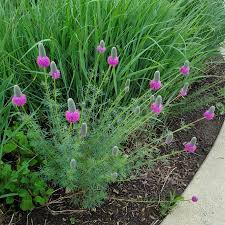
| Crimson Clover | Trifolium incarnatum | I used to think crimson clover, Trifolium incarnatum, was native to Texas but it was introduced to the US and is widely used in agriculture as a cover crop. It has escaped into other areas. Purple prairie clover, Dalea purpurea, is native. It is not in the same genus as true clovers but it is a legume and has many of the same benefits. I looked at several articles but the Wikipedia entry has the most information. |
| 2023-06-09 | 
| Woolly Croton | Croton capitatus | When we purchased our property in Magnolia it was covered with a fuzzy, grayish plant we were told was goatweed. I spent the next year trying to get rid of it. Later I heard someone talk about using it in the landscape because the silvery leaves made a nice color contrast. The plant has many common names but the botanical one is Croton capitatus, woolly croton. It is common in pastures and disturbed areas. It is poisonous to livestock so don't grow it in your pasture if you have grazing horses. It is a good addition to a butterfly garden as it is the larval plant for gray hairstreak and goatweed leafwing butterflies. |
| 2023-06-16 |
| Golden Columbine and Eastern Red Columbine | Aquilegia chrysantha and canadensis | Many of us are familiar with the large blue and white columbine that is the state flower of Colorado but there are also species of columbine native to Texas. They are wonderful plants for shady areas where not much else will bloom. To be honest I became confused when I started doing research for this post. I am familiar with the Eastern Red Columbine, Aquilegia canadensis, and the Golden Columbine, Aquilegia chrysantha. There is also something called Hinkley's columbine which according to the Ladybird Johnson Wildflower center is rare, but which seems to be sold in nurseries. Can somebody straighten me out on that? Years ago I planted both the red and yellow varieties in my garden. The individual plants only live a few years but they reseed prolifically and I still have the offspring of plants I bought nearly 40 years ago. However through the years the two species hybridized and now I only have yellow columbine left. That must be the genetically dominant color. So, if you want red columbine, don't plant any yellow columbine near it. |
| 2023-06-23 |
| Wood Fern | Thelypteris kunthii | In an effort to cool things down a little today's plant is the wood fern, Thelypteris kunthii. It likes shade and who doesn't when the temperature is 100 degrees outside. I often find it growing in odd places like between the rocks of a terrace wall. Besides the link to the Ladybird Johnson wildflower center for this specific fern I'm sharing a link to a guide to ferns found in Texas. Keep in mind that just because a plant is found in Texas that doesn't mean it is native. Many plants have naturalized when they escaped from someone's landscape. |
| 2023-06-30 |
| Poke Weed | Phytolacca americana | This week's plant is a rerun. The inspiration for a Plant of the Week feature came from an article I shared about poke weed, Phytolacca americana. We only had a handful of followers then so I figure sharing information about this plant again will be new to most of you. One of my grandmothers was from Arkansas and loved to eat "poke salad" which much to her regret didn't grow near her new home in suburban Los Angeles. Calling the plant poke salad is misleading as the raw leaves are poisonous. They have to be boiled at least three times and rinsed in between cooking before they are edible. According to Grandma it was quite tasty then. I confess I've never tried it. There is quite a lot of information about this plant on the internet. Some posts call it a noxious weed and tell how to get rid of it. I am happy to see it, however, for all the reasons mentioned in this article. Have a good holiday weekend. |
| 2023-07-07 |
| Black-eyed Susan | Rudbeckia hirta | There is quite a lot of information about this plant on the internet. Some posts call it a noxious weed and tell how to get rid of it. I am happy to see it, however, for all the reasons mentioned in this article. Have a good holiday weekend. |
| 2023-07-14 |
| Sugar Hackberry | Celtis laevigata | I thought surely we must have written about Black-Eyed Susan, Rudbeckia hirta, before but I don't see any mention of it in my log of past plants. Since I'm seeing it bloom everywhere I go right now it has to be the plant of the week. Their sunny faces are in keeping with my mood today. |
| 2023-07-21 | 
| Rustweed | Polypremum procumbens | This week I noticed a low-growing plant with tiny white flowers growing in the well-trampled area under my clothesline. iNaturalist identified it as rustweed, Polypremum procumbens. The name comes from the fact that the leaves turn rusty brown in the fall. This plant may look delicate but it can grow in places other plants don't like compacted soils, disturbed areas along the sides of roads and other inhospitable places. My research showed a lot of places consider it a pest, especially for people who are trying to grow pristine lawns. If you are a groundskeeper at a golf course you probably won't like rustweed. I think it's rather pretty. Here is an interesting article about it. |
| 2023-08-04 |
| Texas Sage | Leucophyllum frutescens | Given the weather these days it seems like the tumbleweed should be the plant of the week. Russian thistle isn't native however so we're going with Leucophyllum frutescens, Texas sage. It is the official native shrub of Texas. It isn't a member of the salvia family so it isn't a true sage. Among it's many common names is "barometer bush" because it often blooms right after a rainy period. Don't try to trick it into blooming by watering it because it knows the difference. Once established it is a great plant for times like this because it is highly drought tolerant. I found lots of articles about Texas sage but I'm sharing two, neither of which comes from Texas. Each has slightly different information about cultivating the plant. |
| 2023-08-11 |
| Desert Willow | Chilopsis linearis | Strictly speaking the desert willow, Chilopsis linearis, isn't native to the part of Texas where most of us live., and it isn't a willow. However given the current state of the climate, we're keeping with the theme of drought tolerant plants. This article gives some tips on how to cultivate the plant if you live in an area outside of it's native range. We are learning more and more about the connections between plants in their native soil biomes. It takes a little more effort to grow plants if they don't have the right neighbors, but it can be done. This beautiful plant is worth the effort. |
| 2023-08-18 |
| Palo Verde Tree | Parkinsonia texana var texana | Unfortunately I still find it necessary to profile drought tolerant plants. This week's is Parkinsonia texana var. texana, commonly called the palo verde tree because of the green bark. A word of warning should you decide to grow this plant. The thorns are vicious. We had a variety of parkinsonia growing in our back yard when I was young. Playing badminton there was a challenge if you had the misfortune of getting the side of the yard with the tree. It is a pretty tree with its lacy leaves and pale green bark. Just don't plant it close to a walkway. |
| 2023-08-25 | 
| Horse Crippler Cactus | Echinocactus texensis | Okay, it's getting serious. We were among the lucky ones who got a little rain last night but Texas is still in a severe drought. So, this week's plant is a cactus. Echinocactus texensis or the horse crippler cactus has a wide range but it doesn't extend this far east. Still it could be used in a rock garden or grown as a house plant. I was amused to see it is listed as "deer resistant." No kidding. Those spines could do serious damage to a tender deer nose. |
| 2023-09-01 | 
| Giant Ragweed | Ambrosia trifida | I'm trying to stay positive, here. It occurred to me that this time of year I am usually suffering from my ragweed allergy. I guess the drought isn't completely bad if it stunts the ragweed so it doesn't produce such copious amounts of pollen. There are at least two varieties of ragweed, common and giant or great ragweed. I have also heard of "western ragweed." I don't know if that is a third variety or another word for the common variety. At any rate most people have heard of the plant but many have no idea what it looks like. This week's plant is giant ragweed, Ambrosia trifida. It is a member of the aster family which makes it sound like it ought to be rather a nice plant. If you like six-foot tall plants with ragged looking leaves that produce lots of pollen but no flowers to speak of, you'll love ragweed. The pollen doesn't need to be spread by pollinators. It floats in the wind. However it appears to be tasty to a variety of beetles and bugs so it benefits birds by providing an insect buffet. |

